Category Archives: Bikes
The History of Bike Racing in Prospect Park, and How It Inspired Virtual Cycling
When Zwift co-founder Jon Mayfield reached out asking if I’d like to consult on the development of a new virtual Prospect Park, I jumped at the opportunity. My history with Zwift and Prospect Park spans decades, so it was a perfect match.
I was Zwift’s former VP of Events — Eric Min (who I raced with as a junior!) invited me to join the company when it was still a scrappy startup. My Zwift ID is 7 — that’s how early I came aboard.
And in the real world? I’ve been racing in Prospect Park since I was 8 years old, and I organized IRL races there for 17 straight years — more than 150 races total.
So yes… this project felt meant to be.
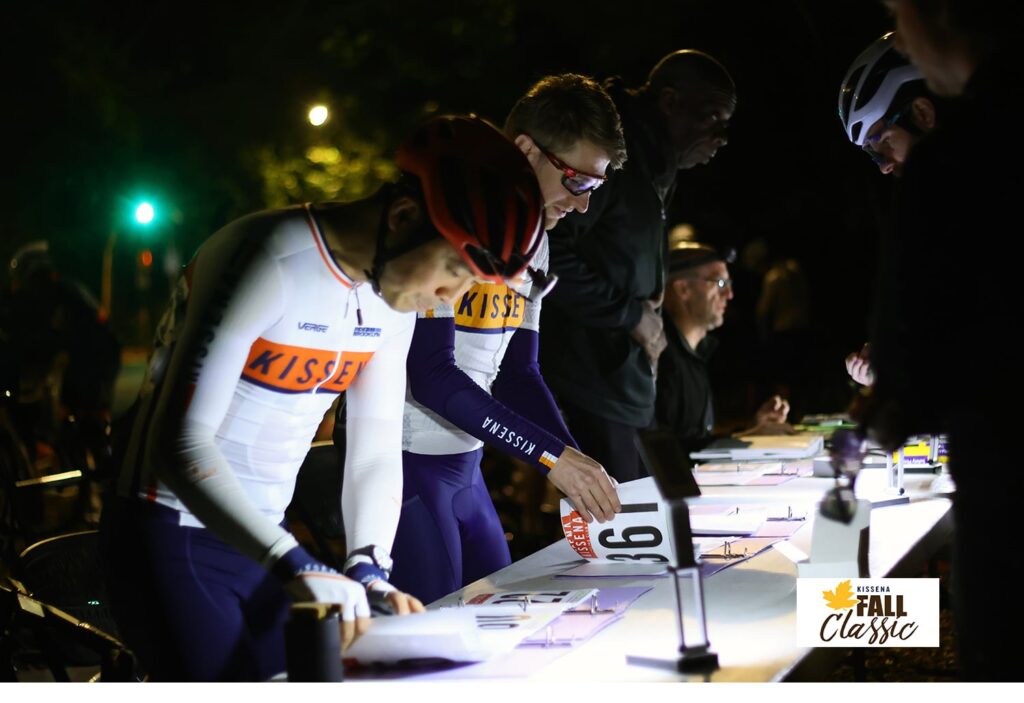
Where It All Began: Kissena Cycling Club & Grassroots NYC Racing
Organized racing in Prospect Park has always been a community-driven effort. The sport owes much of its existence to the Kissena Cycling Club — and three individuals who kept NYC racing alive for the last 40+ years.
To honor them, Zwift named three virtual Prospect Park routes after those IRL legends:
• Al Toefield → “Toefield Tornado”
• Greg Avon → “Avon Flyer”
• Charlie Issendorf → “Issendorf Express”
Each played a unique role in keeping the heart of Brooklyn bike racing beating.
The People Behind the Pedals
Al Toefield — The Founder of the Movement
In 1963, Al Toefield founded the Kissena Cycling Club in Queens, New York. A former Sergeant in the NYPD, he began organizing races in Prospect Park in the early 1970s.
At the time, the park was surrounded by rough neighborhoods and had a reputation for being unsafe. City officials approached Al with a challenge: Bring life back into Prospect Park. Show the public it can be used for healthy, positive activity.
Al delivered. He built a racing culture from the ground up, keeping events running until he passed away in 1989. His impact still shapes NYC cycling today.
Greg Avon — The Relentless Builder
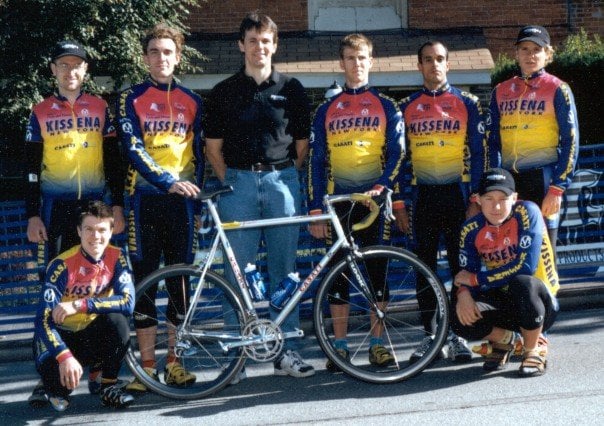
When Al passed, the baton was handed to Greg Avon, currently a Level 100 Zwifter and still as passionate as ever.
Greg served as Kissena President and Race Organizer through 2005 — a remarkable run that spanned more than 15 years of early-morning races, unpredictable logistics, and unwavering commitment.
He modernized the process, expanded participation, and ensured the scene continued to grow.
Charlie Issendorf — Keeping the Tradition Alive
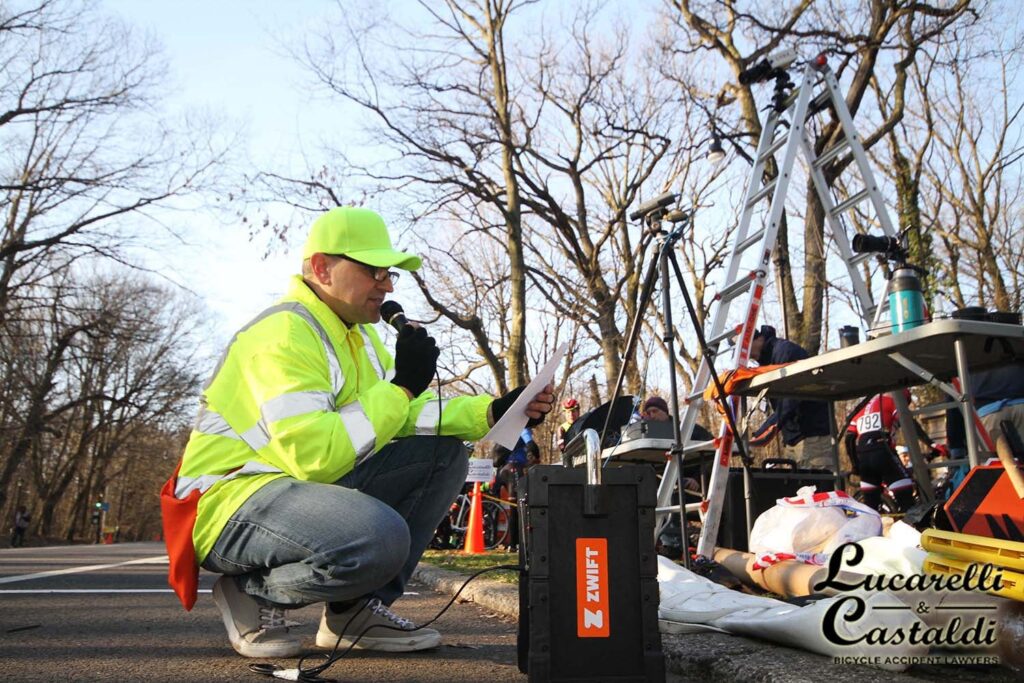
After Greg stepped away, I took over as Race Director, and for 17 straight years, I kept the tradition going — adding Sprint and KOM competitions with leader jerseys to give the races a true pro feel.
Those events weren’t easy — yet seeing hundreds of cyclists lap the park at sunrise made every sleepless night worth it. Knowing Zwift has now immortalized those efforts with the Issendorf Express route is truly special.
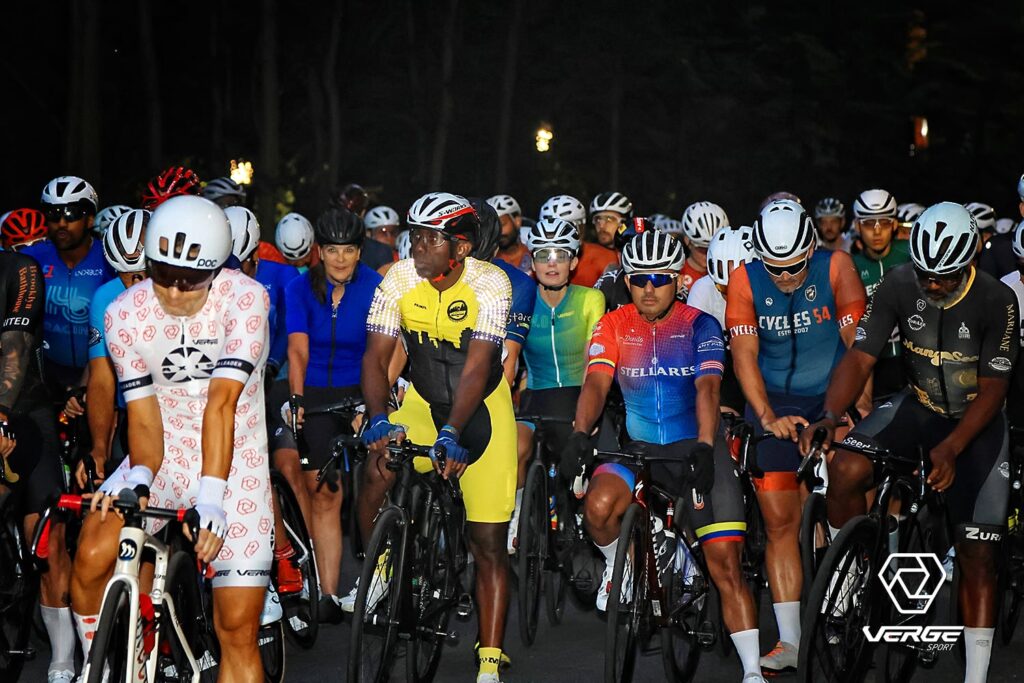

Fun Facts About IRL Prospect Park Racing
- Races start at 6:00 AM — sometimes in complete darkness.
- Everything must be wrapped up by 8:00 AM before the park becomes crowded.
- Race organizers wake up at 2:00 AM — yes, you read that right — to set up the course.
- Riders start picking up numbers at 5:00 AM (headlights and coffee mandatory).
- At least 25 course marshals are needed for every race, spaced every 100-200 meters for safety.
- The IRL course includes a KOM sprint, just like Zwift.
- The Kissena Cycling Club still runs these events today — one of the oldest active cycling clubs in the U.S. — and they even have a Kissena in-game kit on Zwift.
Prospect Park racing demands teamwork long before the peloton even clips in.
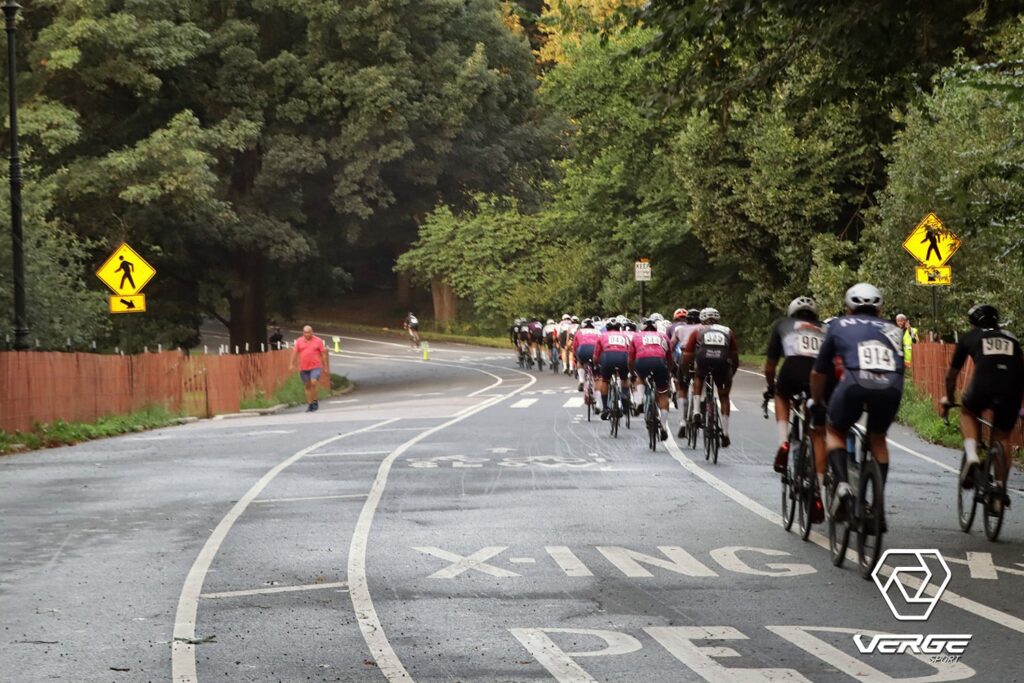
From Brooklyn to the Metaverse
Indoor cyclists around the world can now experience the spirit of Prospect Park — from the sprint and KOM points to the serenity of sunrise through the trees — thanks to Zwift’s virtual version.
The landscape may be digital, but the heritage is as real as it gets. Zwift has created a living tribute to grassroots organizers, volunteers, and racers who kept the tradition thriving — year after year, lap after lap.
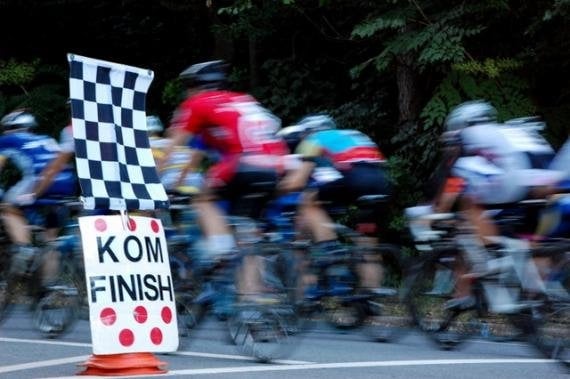
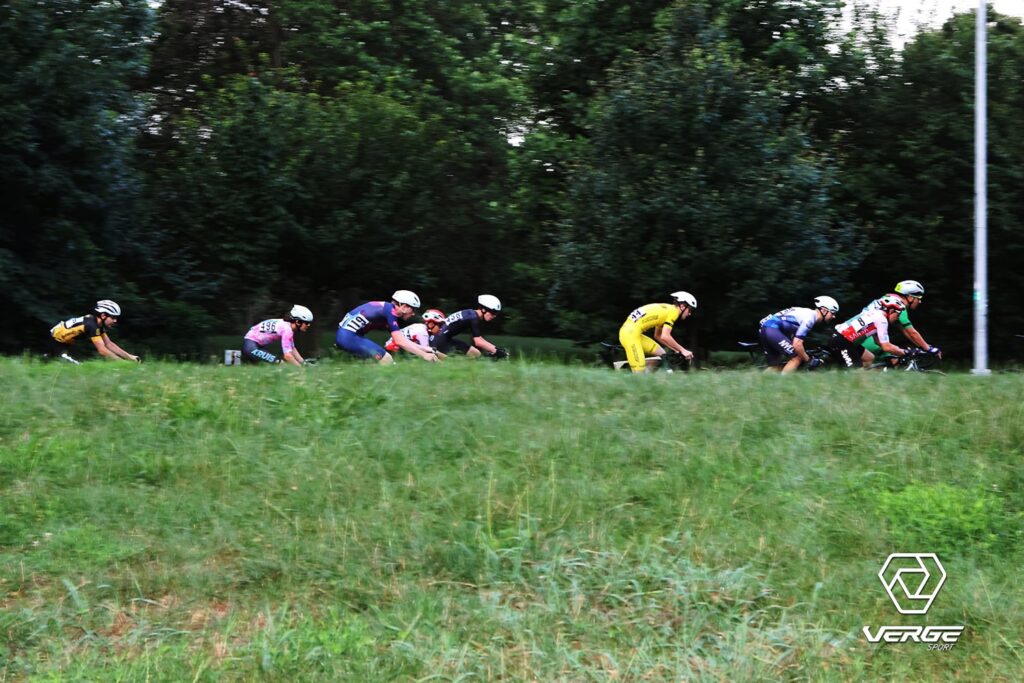
Why it Matters
Cycling culture isn’t built only on WorldTour finishes — it grows in local parks, driven by people who show up before dawn to make the sport available to others.
Prospect Park is proof that big racing hearts beat in everyday places.
From Al single-handedly running races in the 1970s to thousands of riders on Zwift today — the legacy continues to roll.
And if you ever jump on virtual Prospect Park and ride one of those named routes — know that each one celebrates someone who made cycling in Brooklyn possible.
See you on the Issendorf Express. 

“Spinfinity Ultra” Route Details
Standert’s stainless steel Erdgeshoss “will last a lifetime”, carry a big load, and you can even run it single speed
Standert has announced its new Erdgeshoss – a gravel bike with a stainless steel frame and mounts designed for any adventure.
The brand says the stainless steel frame will last a lifetime. It’s mated to a Columbus Cross+ carbon fibre fork up front.
Standert says the Erdgeshoss is designed to bring the farthest corners of the globe just that little bit closer, with the bike focused more on bikepacking than fast gravel racing.
The gravel bike is available for two complete builds, starting at €4,499 for an SRAM Rival AXS XPLR-equipped bike, with the SRAM Force AXS XPLR option priced at €6,499.
There are also options for custom builds starting at €4,799, or you can buy the frameset for €2,399.
Steel is real
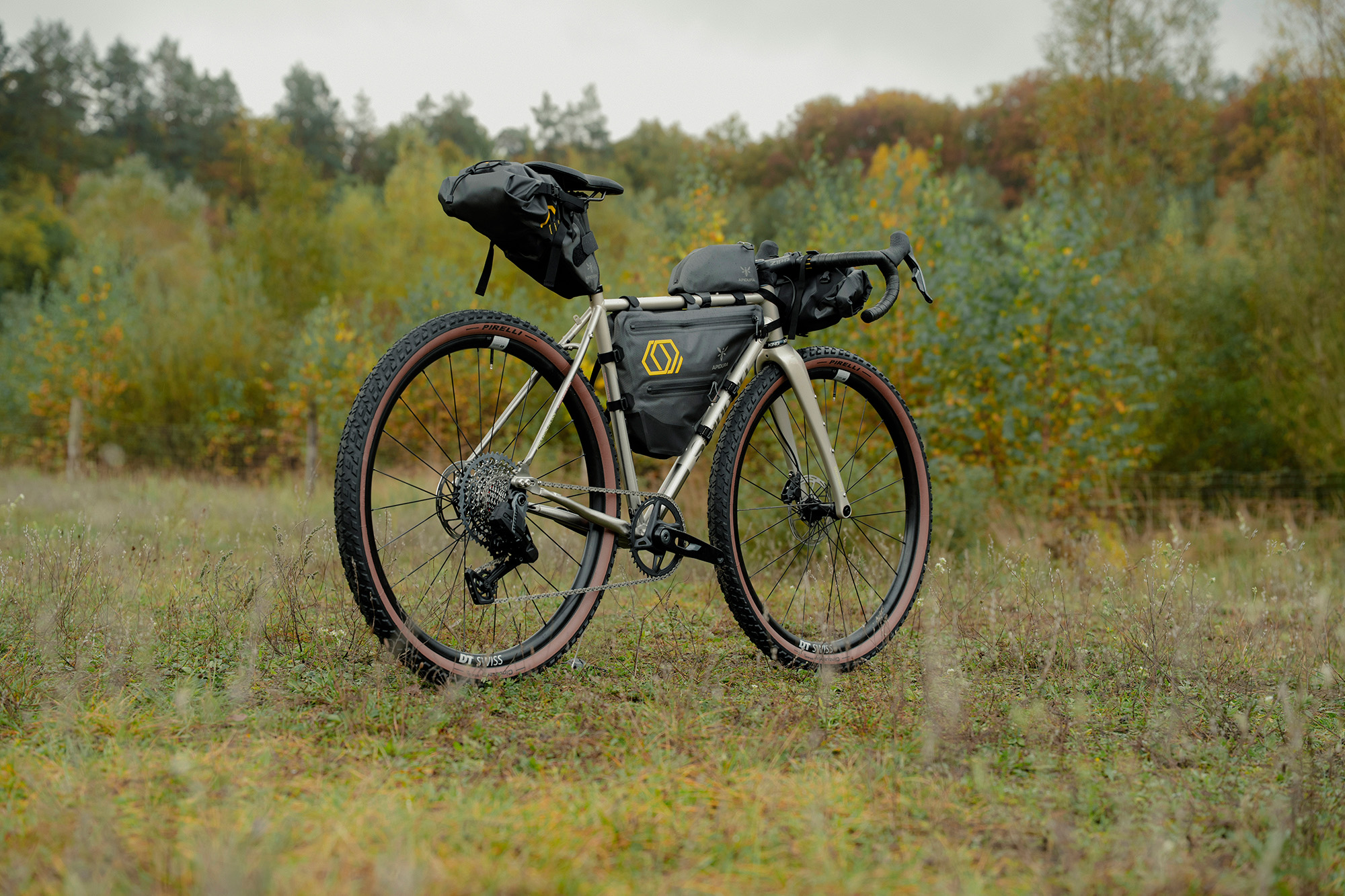
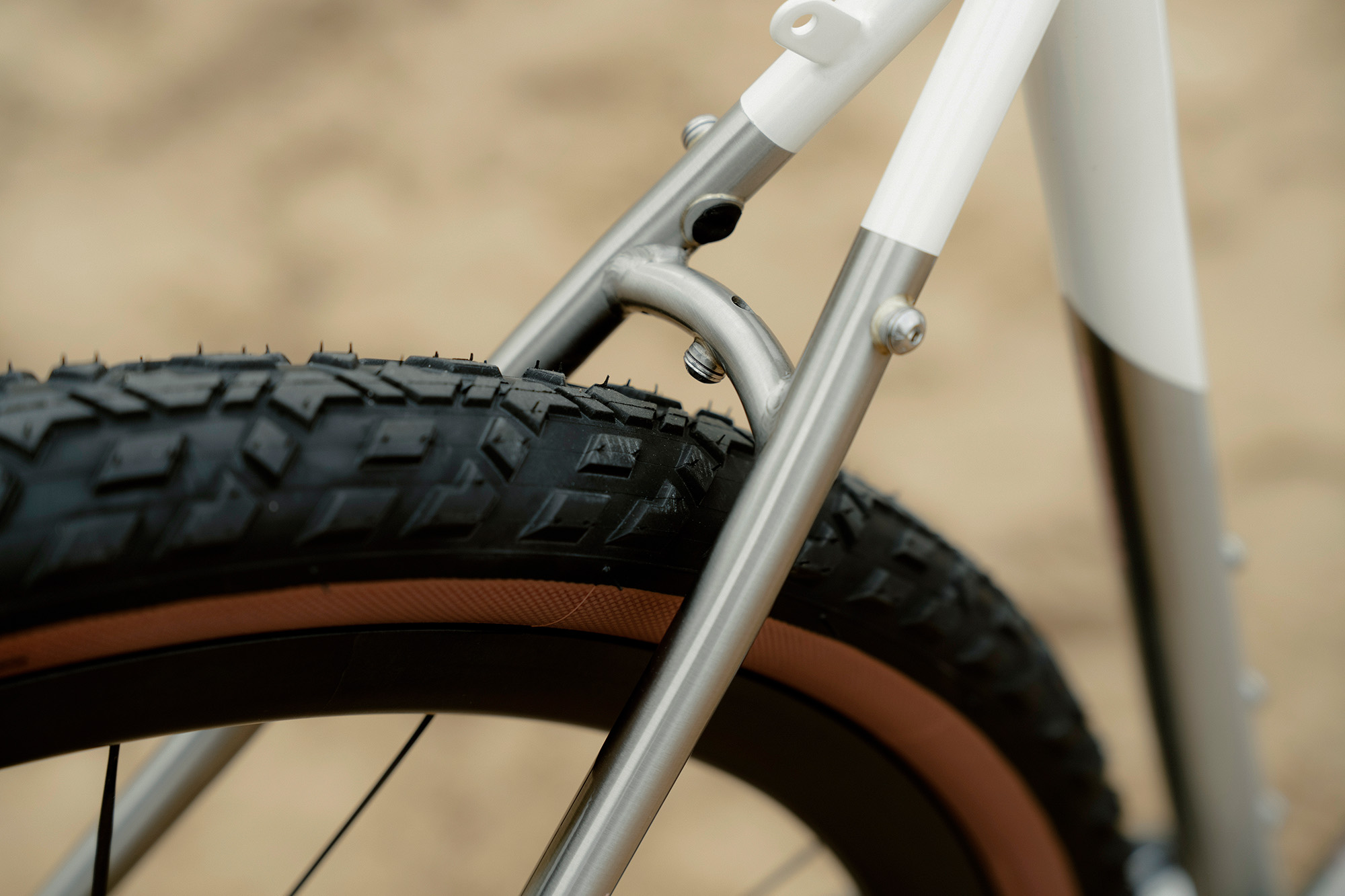
More difficult to cut and harder to weld than conventional steel tubes, stainless steel is a relative rarity in bikes.
However, it should never rust, it’s incredibly durable, and Standert says it offers a “magical” ride quality.
To highlight the stainless tubing, the brand offers the bike in two colourways that both show off the raw metal below.
The bike has more studs than a Berghain clubber’s collar, meaning if you want to attach an accessory to the Erdgeshoss, then there’s probably a mount for it.
You can mount mudguards, racks, top tube bags and even an extra bottle cage under the down tube.
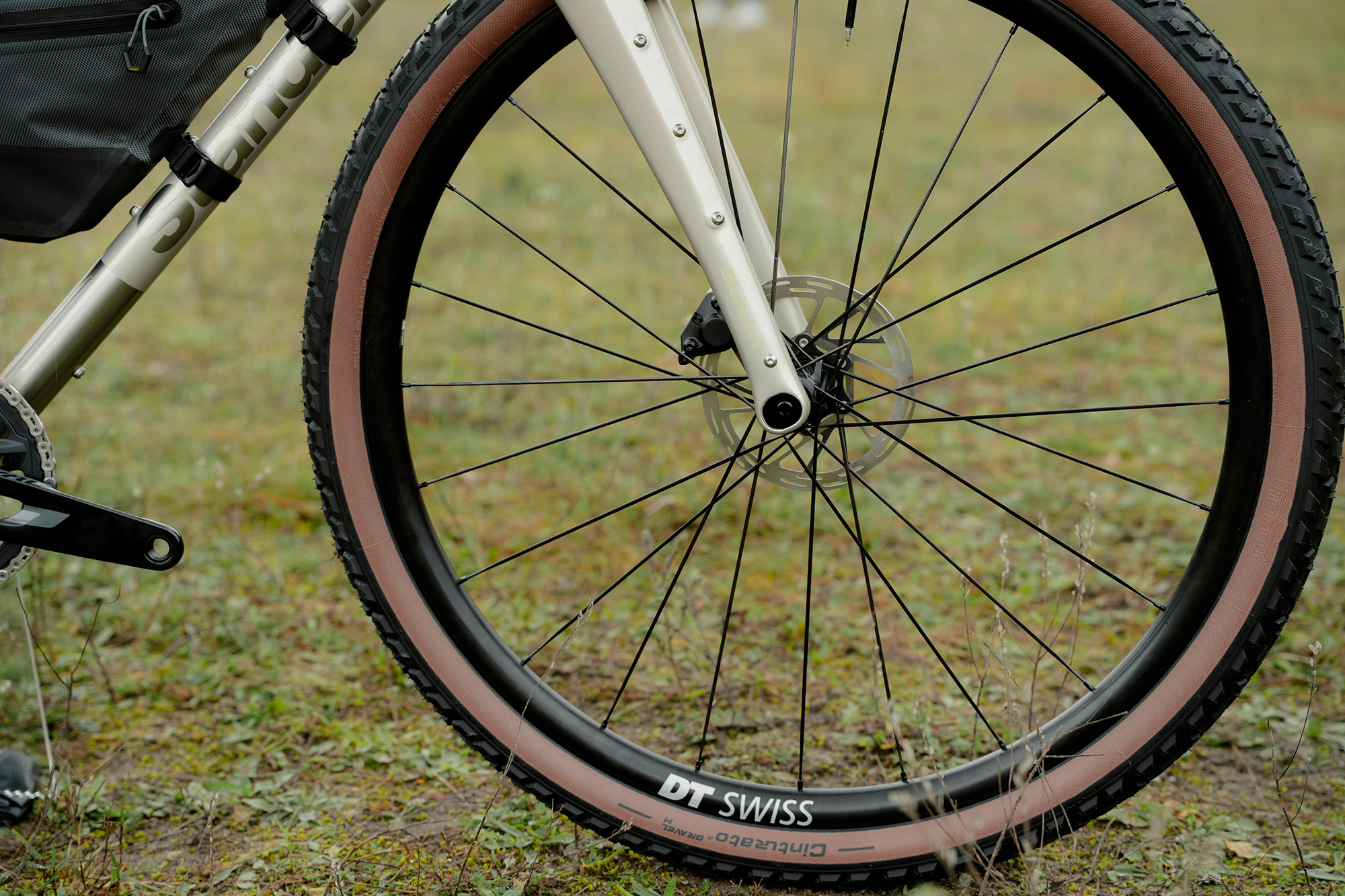
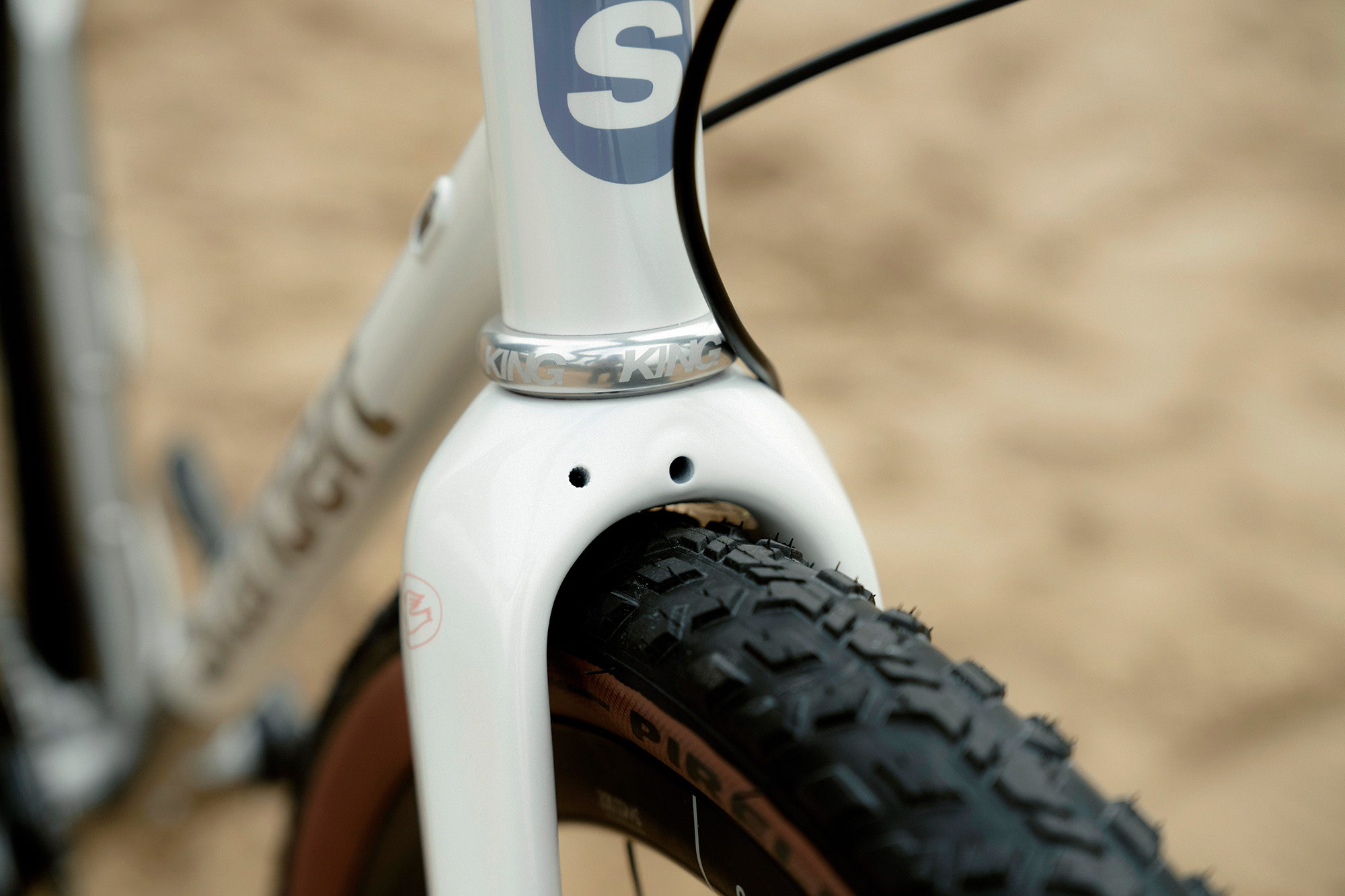
The Columbus Cross+ carbon fibre fork enables you to attach cargo holders or bottles, as well as adjust the rake using a flip chip in the dropout.
It says the adjustable rake enables you to fine-tune the handling of the bike depending on tyre size or load weight on the front wheel.
It also features dynamo light cable routing.
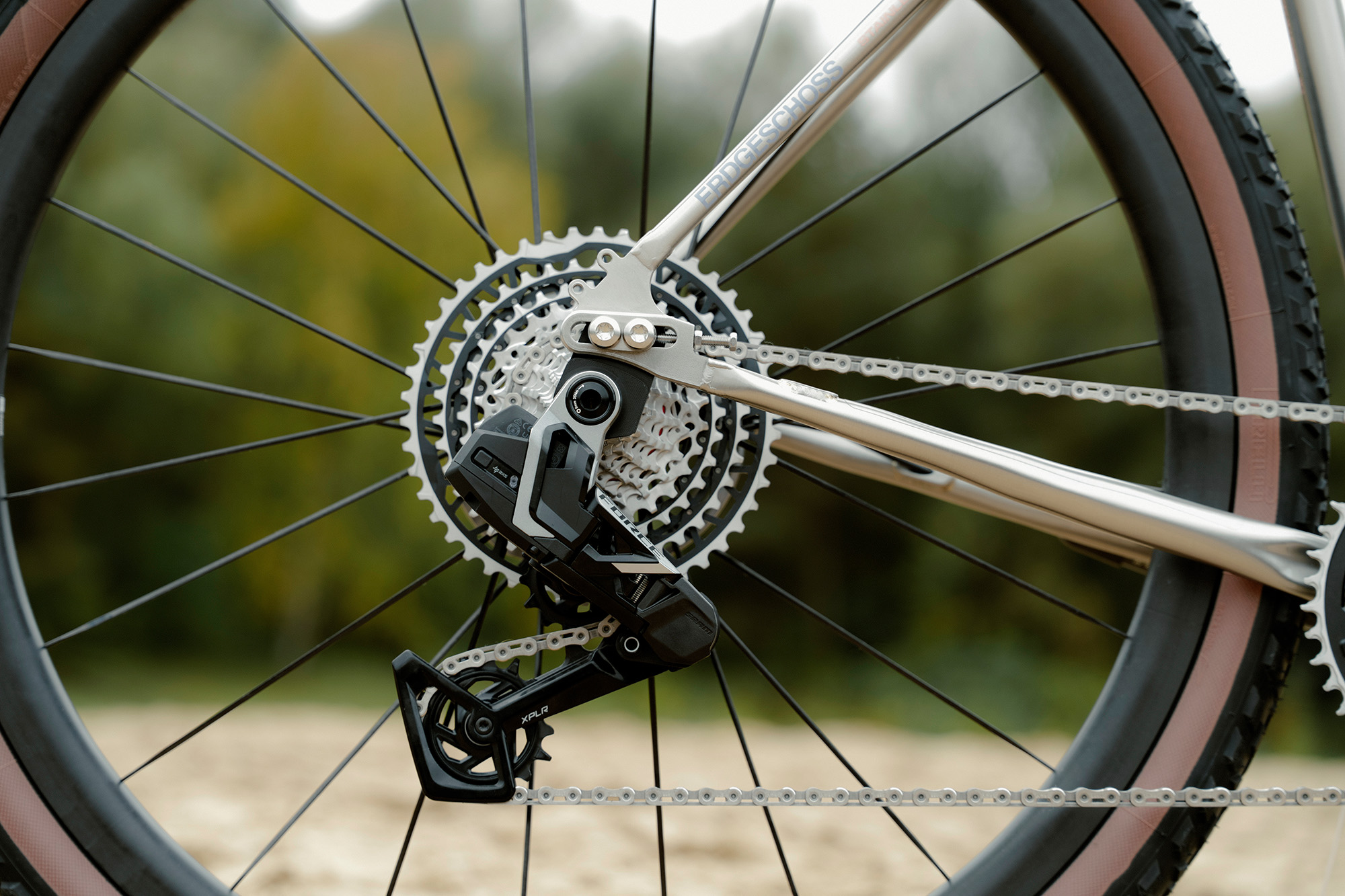
The rear end also features sliding dropouts, enabling you to run a single speed setup, fix the chain tension if the rear derailleur fails in the wilderness, or even make small tweaks to the wheelbase to customise the ride feel.
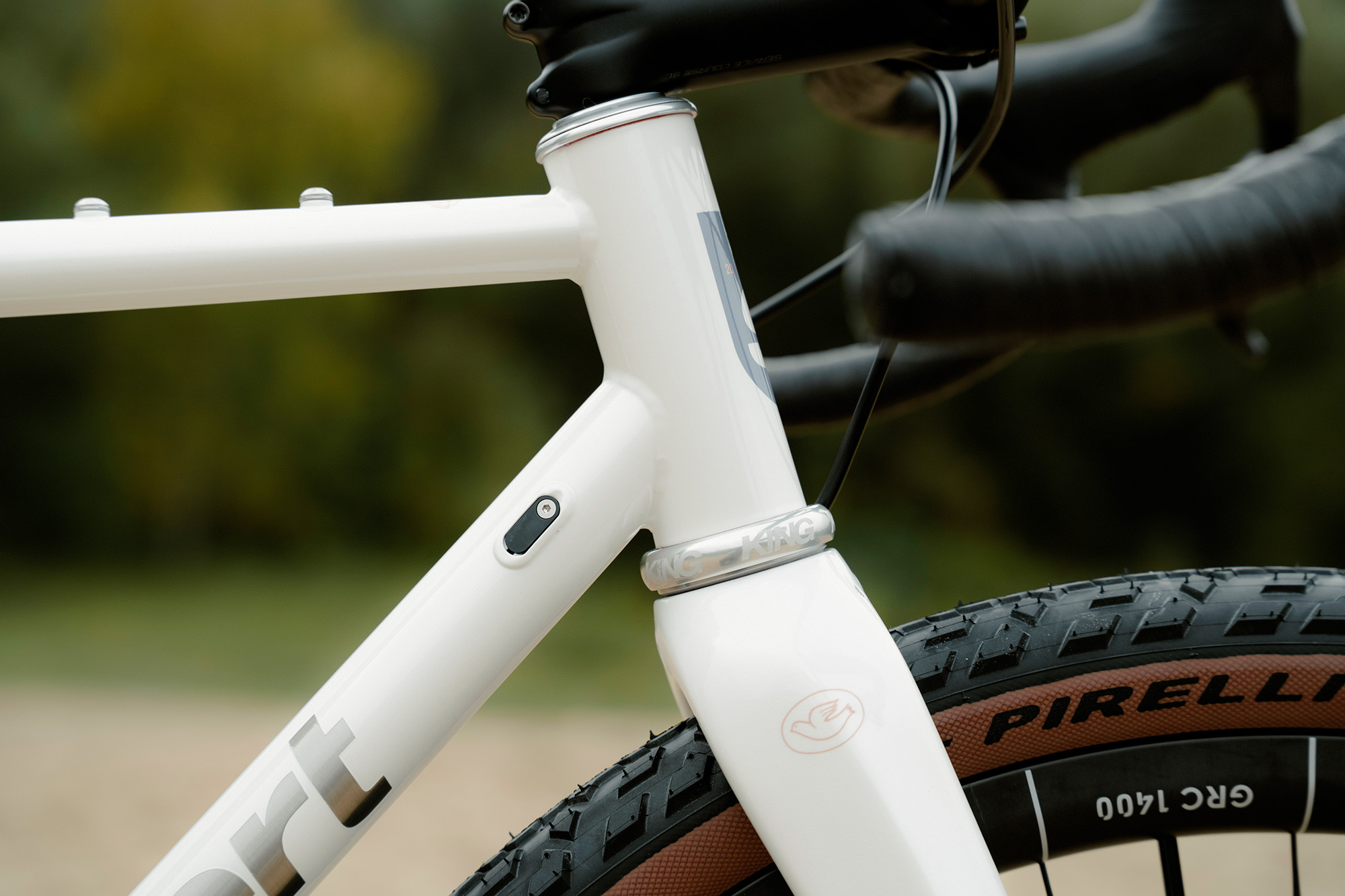
In keeping with the quest for durability, Standert includes a Chris King headset with the frameset and all builds, which it says is built to last forever.
The Erdgeshoss boasts 50mm tyre clearance with 700c wheels and 54mm for 650b wheels.
The new X4 Air brings flagship-level features to Insta360’s lightest ever 360 camera – but it’s the £140 price drop that’s got me excited
Insta360’s unique 360-degree dual-lens cameras have fast become one of the first choices for capturing on-bike action.
However, until now, that meant spending £500 for the 2nd-tier X4, or £519.99 to get the fully featured pro-level X5 with its 8k 30fps footage and ActiveHDR.
The new X4 Air brings the same 8k 30fps performance, now captured through larger 1/1.8in sensors, which Insta360 claims delivers much crisper 8k footage thanks to a 134 per cent increase in pixel area per frame compared to the X4.
The X4 Air is also Insta360’s lightest ever 360-degree camera at just 165g – and it’s £160 cheaper than the X5.
Huge tech spec

The raft of upgrades to the X4 Air comes in both hardware and software.
For hardware, there’s the lighter body, a built-in windguard, and replaceable lenses.
It’s built tough too, with a weatherproof construction that Insta360 claims is good for 15 meters submersion.
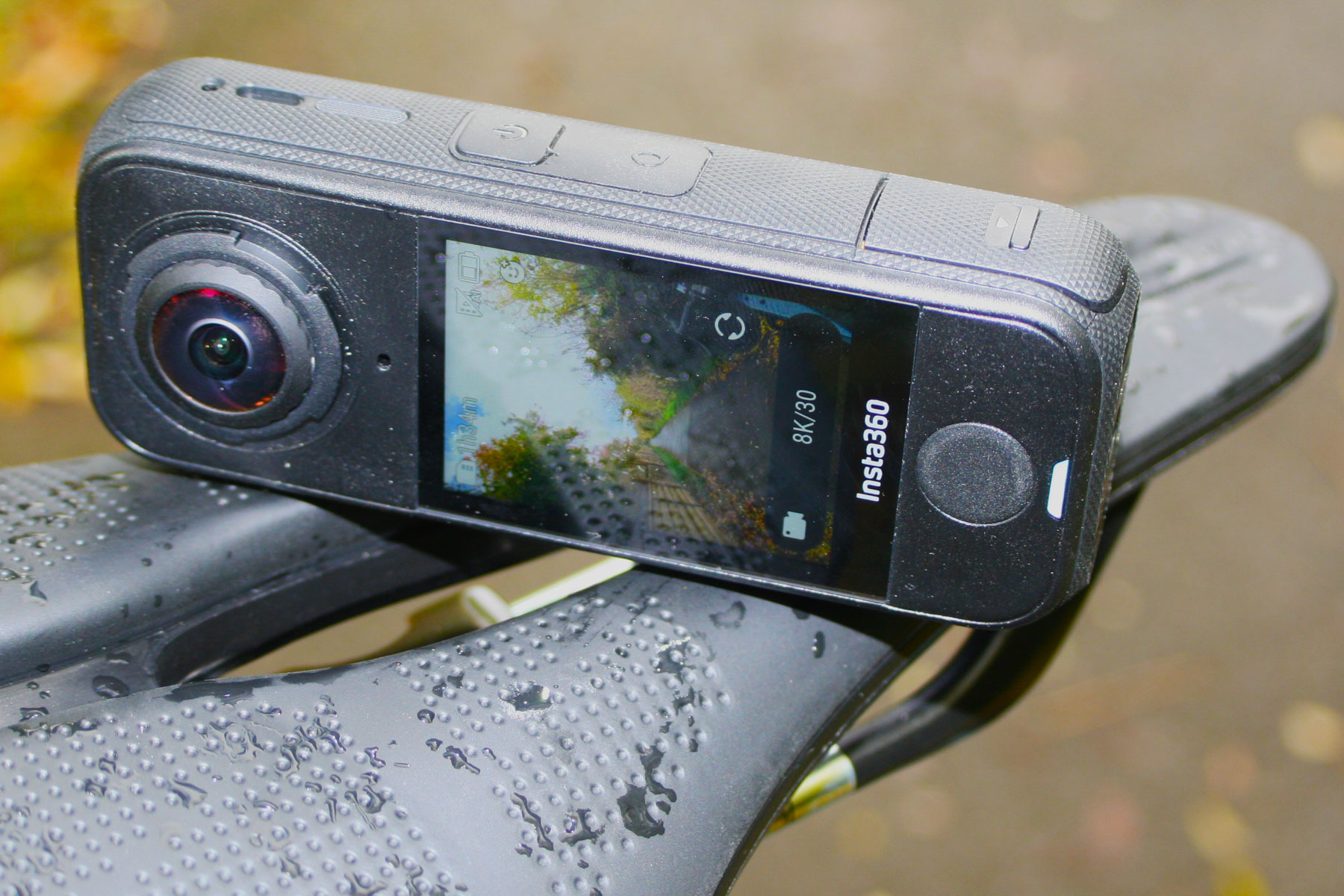
However, it’s the software that has brought the biggest improvements, alongside the latest version of their Flowrate stabilisation and 360-degree horizon lock.
AdaptiveTone is Insta360’s so-called intelligent exposure algorithm, which takes light readings from both lenses to independently balance brightness and colour across the full image – leading to more natural skies, better shadow details, and improved colour grading, claims the brand.
ActiveHDR, which boosts the dynamic range in real-time to capture lifelike shadows and highlights, is now available in the highest quality setting of 8k at 30fps.
There’s also a new Portrait mode that automatically detects faces and adjusts brightness and colour to capture more natural skin tones.
More ways to control
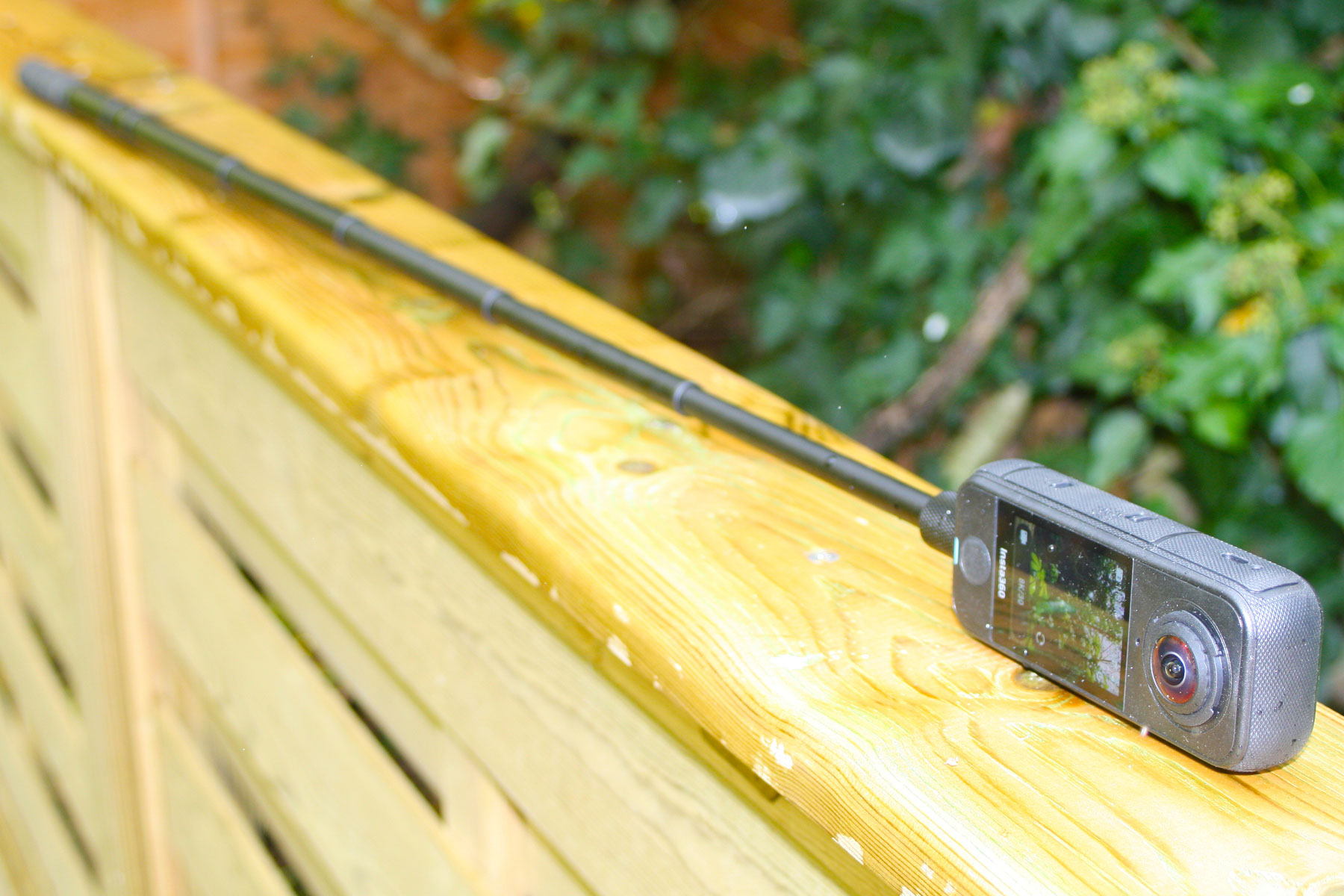
As something of an action camera novice, I’ve always found the controls on cameras to be somewhat frustrating.
Insta360’s tiny Go Ultra went a long way in changing my mind with its simplicity.
The X4 Air can be controlled via a range of controls, from a twist of the selfie stick to start and stop recording, through to gesture controls to activate the camera – both video and stills.
It can also be operated via voice controls. I’m looking forward to trying out how all of these options pan out on the road (or trail).
Easy editing
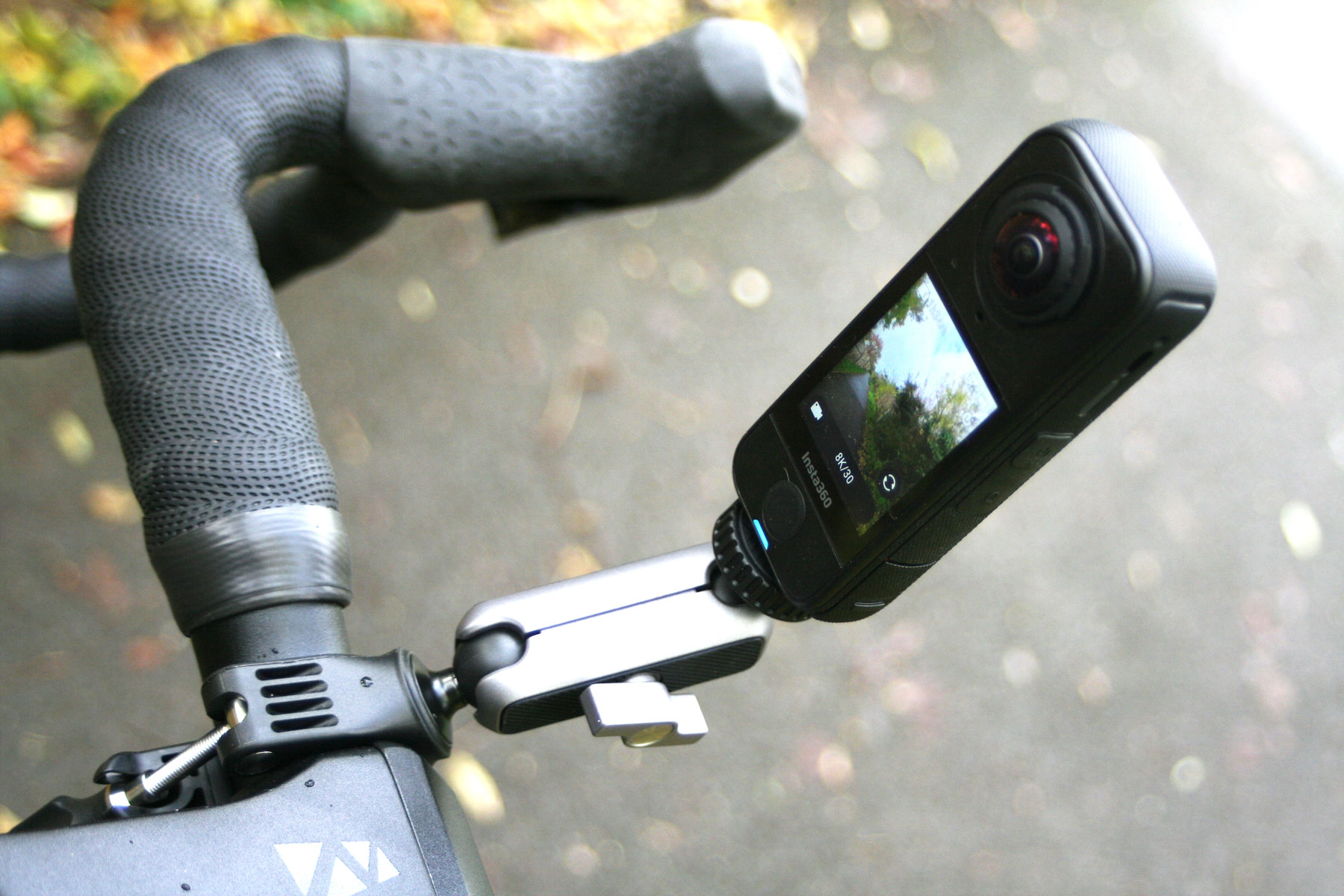
Another element I liked about the Go Ultra was the easy-to-use, powerful and free app.
While the Insta360 app looks a little more involved, it still offers lots of powerful editing options straight from your phone. W
Insta360 says its AI-powered tools, including Auto-edit, Flashcut, and AI Frame, will automatically find highlights from raw footage, apply transitions automatically, and even sync footage to music.
Insta360 has an integrated cloud service (the first year is free, with 200GB of storage), which means you can almost instantly share footage via a customisable link straight from your phone.
Masses of accessories
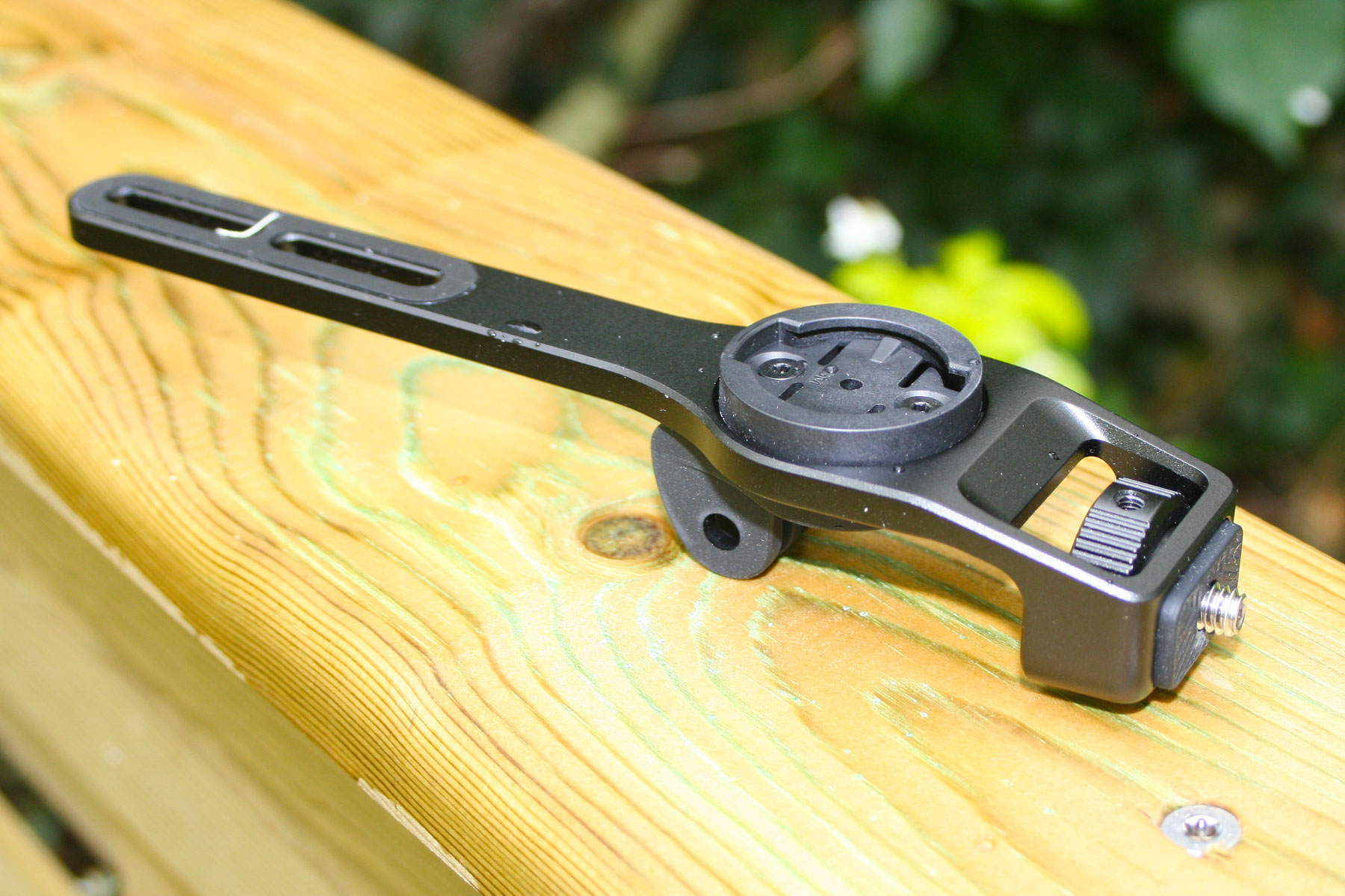
As for accessories, the range available is vast.
From a clamp-on bar mount, saddle rail mount, a third-person-view bike handlebar mount (it looks a bit like a selfie stick for your bike), a wrist or bar mounting GPS preview remote, which gives camera control, video preview, and adds GPS data to your recordings… there’s a lot!
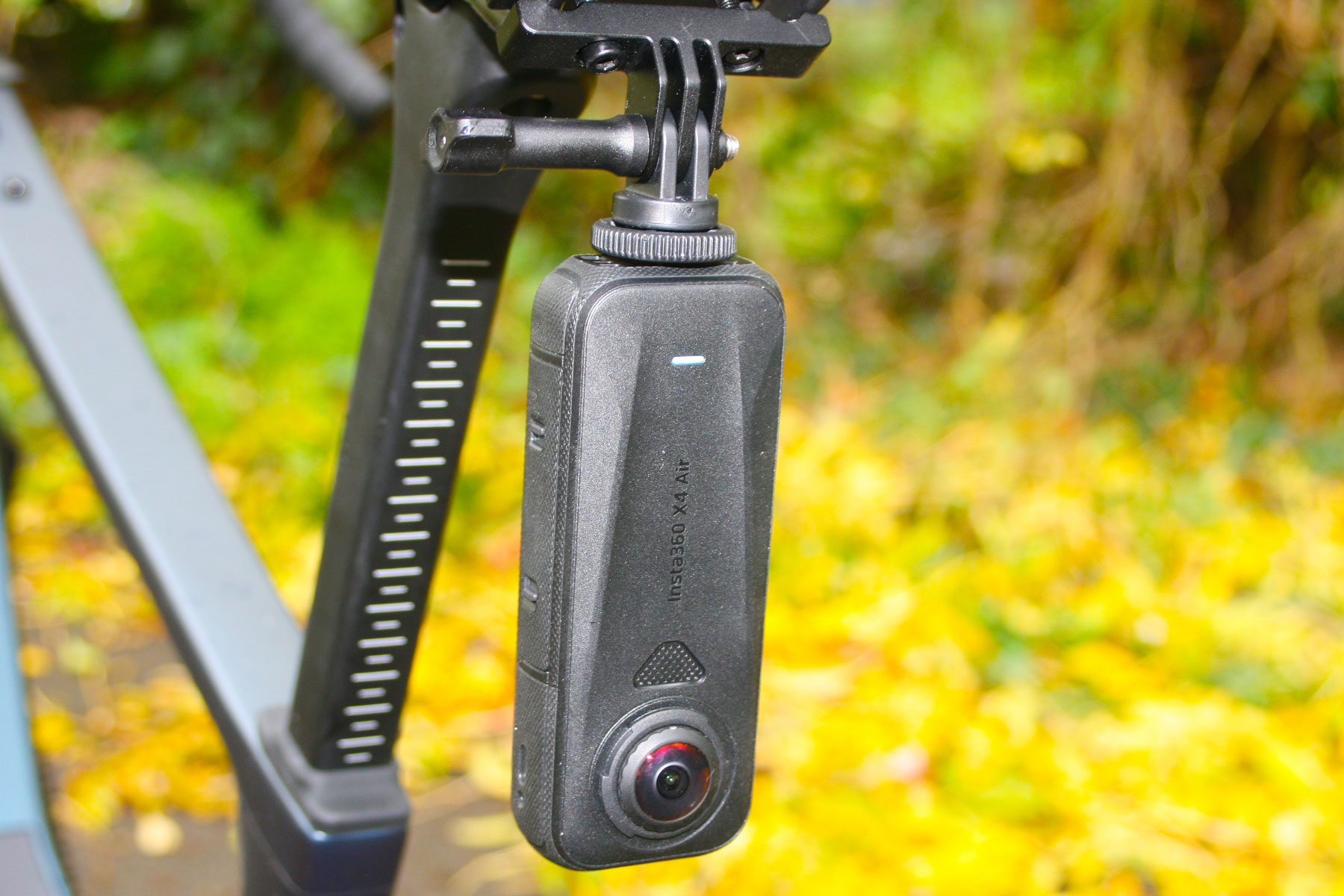
Insta also offers a bike accessory bundle with a GoPro-style chest strap, handlebar mount, and action cam mount adaptors.
Off the bike, there’s a myriad of further accessories for everything from water sports, motorcycling, hiking, skiing, and more.
Prices
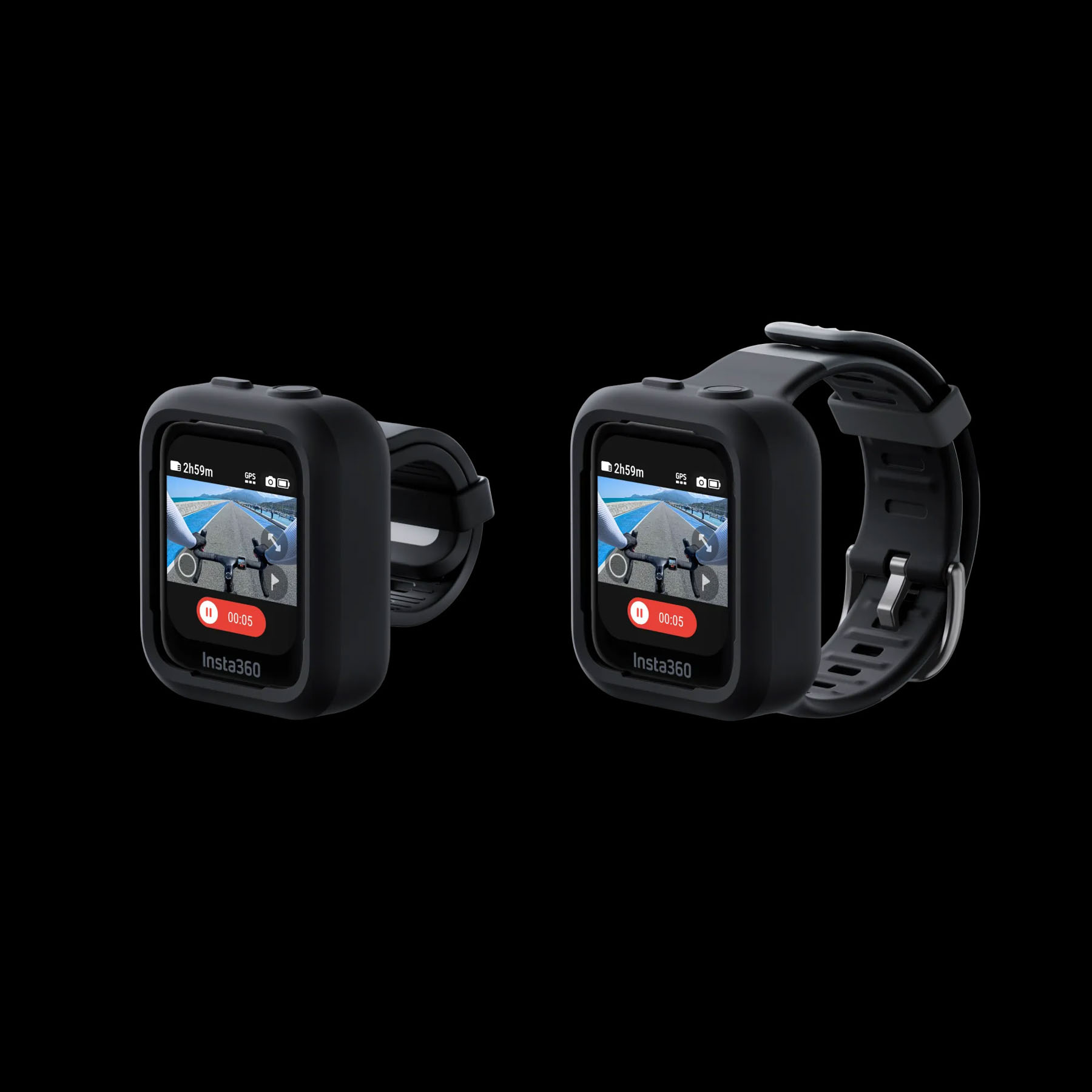
The standard Insta X4 Air is priced at £359.99 / $399.99 / €399 / AU$639.99, or there is a starter bundle available which includes a 114cm invisible selfie stick, lens cap, and extra battery for £389 / $439.99 /€429 / AU$699.99.
The bike-specific accessories are priced at
- The Bike kit bundle (chest strap, handlebar mount, action cam adaptors): £54.99 / $54.99 / €62.99 / AU$92.99
- Bike tail mount kit (saddle rail mount): £69.99 / $69.99 / €83.99 / $119.99
- Bike computer mount (out front mount for integrated bars) £34.99 / $34.99 / €42.99 / AU$60.99
- Third person bike handlebar mount £41.99 / $39.99 / €49.99 / AU$79.99
- Bike headset cap mount £39.99 / $39.99 / €45.99 / AU$69
- GPS Preview Remote £149.99 / £149.99 / €N/A / AU$269
New Look Keo Vision pedals have in-built lights to make you 5.5x more visible
Look says its new Keo Vision pedal collection emphasises safety and performance, thanks to integrated lights that will ensure you’re visible from up to 1km away.
The lights integrate into the rear of the road bike pedals and are said to highlight your “biomotion”. In other words, they’ll rise and fall as you pedal, which Look says “increases visibility by 5.5 times” compared to a bike light mounted on your seatpost.
Look adds that the two moving lights help drivers perceive speed and distance more accurately.
“Offering 180° visibility and four versatile light modes—including both continuous and flashing patterns—these lights are engineered to adapt to any riding condition, guaranteeing optimal safety in all environments,” Look says.
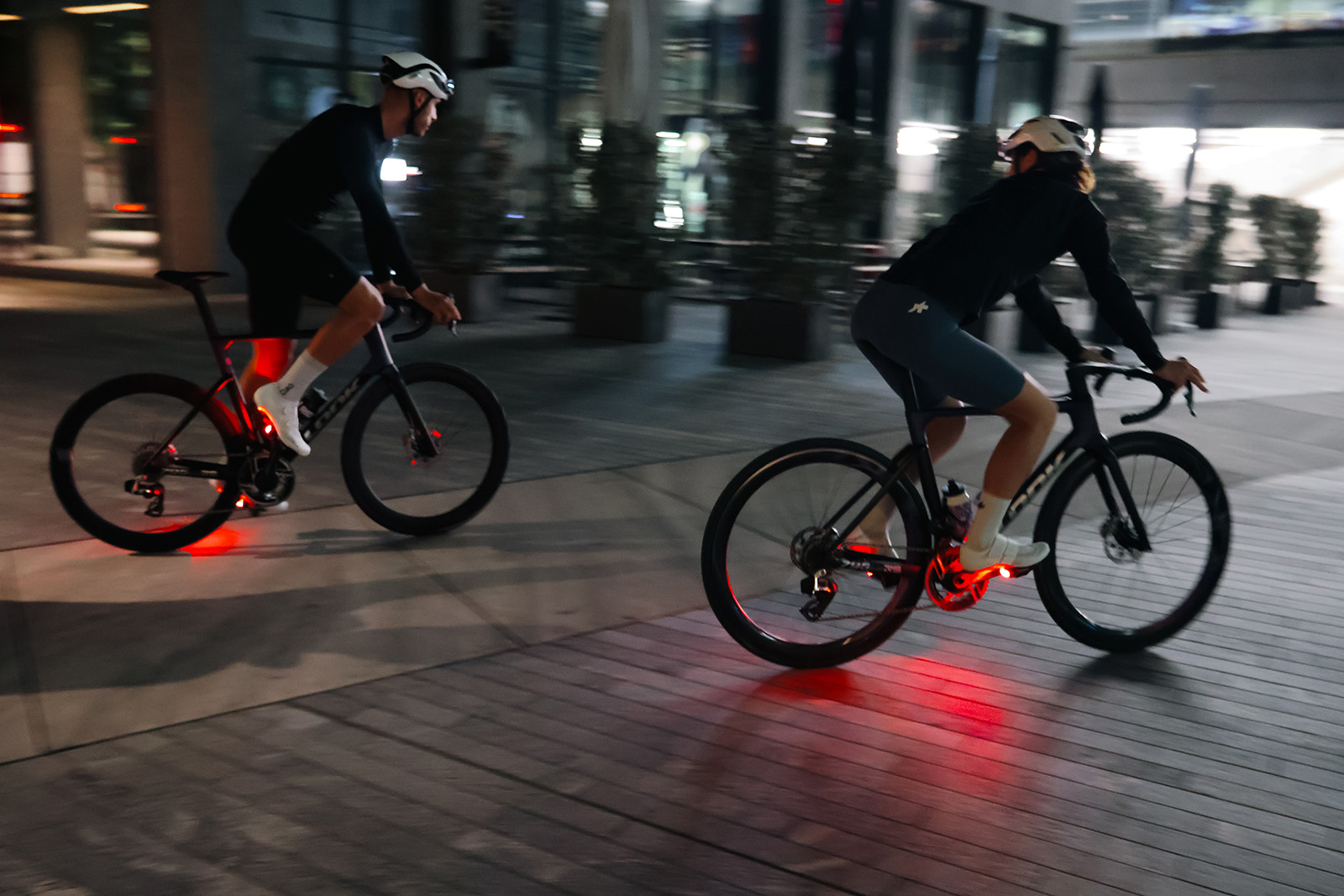
Look already offers the Geo City pedals with integrated lights, but these flat pedals are aimed at city riding rather than performance road cycling.
Alexandre Lavaud, head of product at Look, says integrating and “miniaturising” the light technology to fit into a road bike pedal “was a real challenge.” But Lavaud says the result is “not just a pedal; it’s a commitment to a safer, more confident ride for everyone”.
Look’s Keo Vision collection will be available from 1 November and will include two models, the Keo Blade Ceramic Vision and Keo 2 Max Vision.
The Keo Blade Ceramic Vision (€249.90) has a carbon body, ceramic bearings and a 705mm² contact surface for optimal performance.
The Keo 2 Max Vision (€124.90) has a composite body and steel bearing and a slightly smaller contact surface at 500mm².
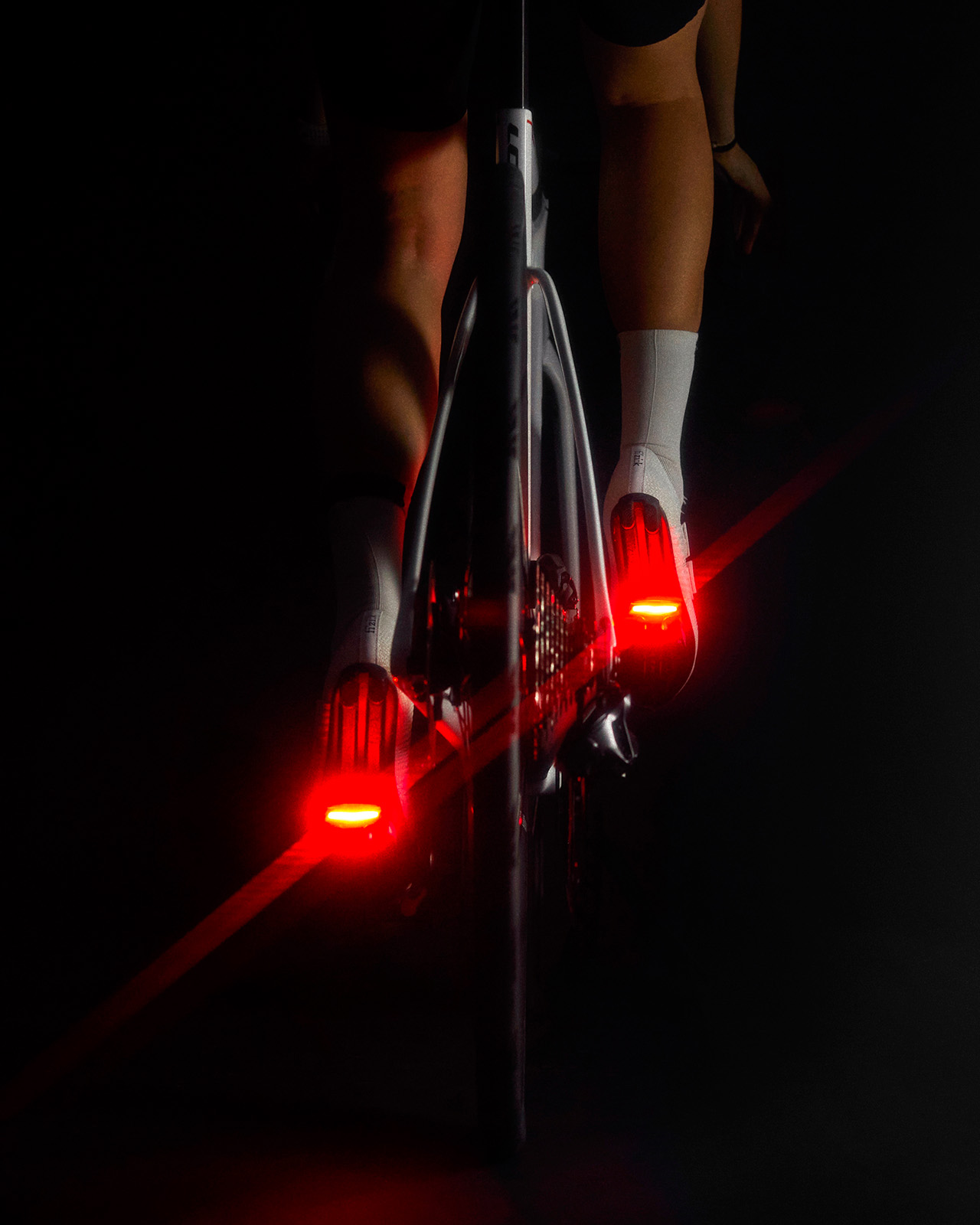
Both models feature the integrated lights with four modes (day flash, night flash, steady and night steady).
There will also be a Keo Vision kit available. The kit allows owners of the Keo Blade V4 pedals to add lights to their pedals for €60.
The lights themselves are said to only weigh 20g each and have a battery life of 40 hours. They charge in just 2 hours via a USB-C cable.
This isn’t the only change Look has made to its road bike pedal range in recent weeks. Earlier in October, the French company added wider Q-Factor options to its Keo range.
“Fuhgeddaboudit” Route Details
Israel wants to host the Tour de France Grand Départ
The president of the Israel Cycling Federation, Dafna Lang, has suggested Israel could one day host the Tour de France Grand Départ.
Israel previously hosted the inaugural stage of the 2018 Giro d’Italia, under the leadership of Canadian–Israeli billionaire and co-founder of Israel–Premier Tech, Sylvan Adams. It was the first time a Grand Tour started outside Europe, with three stages in Israel, including a time trial in Jerusalem.
Now, Lang says he has discussed the idea of hosting the first stage of the Tour de France in Israel with Adams. “I can’t tell you right now that we’re going to bid for the Tour de France or organize it, but we never stop dreaming,” Lang told L’Equipe.
Israel’s participation in international sport has prompted intense debate over the last two years, amid Israel’s war on Gaza.
“I can’t speak for Sylvan Adams, but I believe that once we have a stable peace, we will realise many projects at the highest level by welcoming the world. We are very optimistic people; we’ve already brought the Giro here; anything is possible,” Lang said.
Lang told L’Equipe that he has not yet discussed Israel hosting the Tour de France with the UCI’s president, David Lappartient. But last year, Adams said he had discussed the idea with Tour de France organisers.
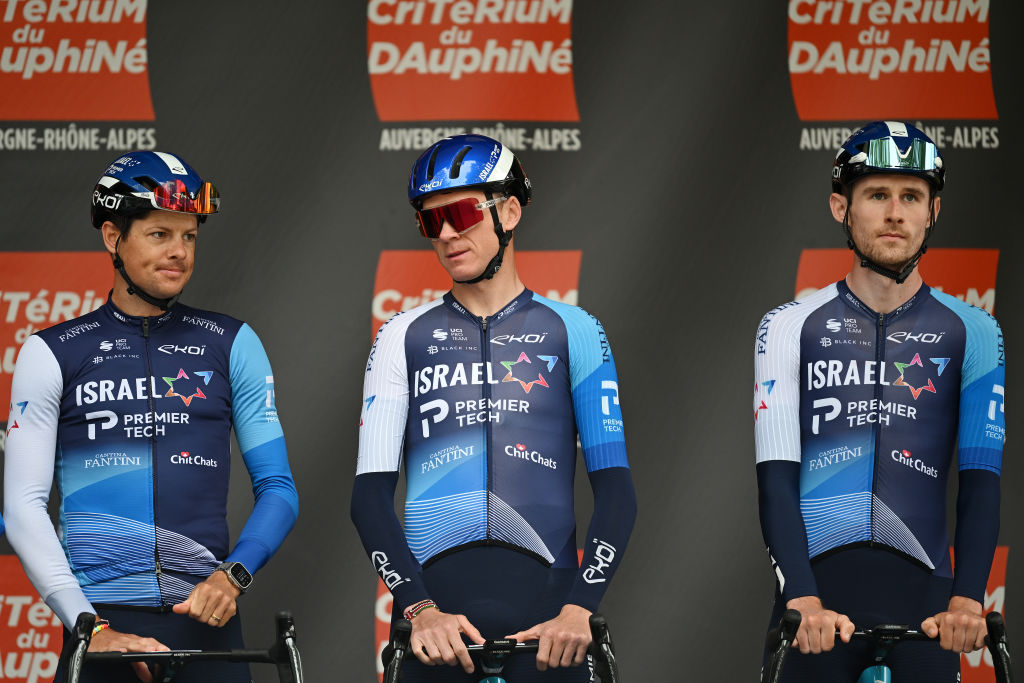
Lang’s comments on Israel hosting the Tour de France follow a tense cycling season, where there were protests against the participation of Israel–Premier Tech at all three Grand Tours.
Protests disrupted much of the 2025 Vuelta a España, with demonstrators labelling Israel–Premier Tech’s participation as “sportswashing”. The protests led to riders expressing concern for their safety, stages being shortened, and the final stage in Madrid being cancelled.
Israel–Premier Tech later withdrew from several races. Following pressure from sponsors, it revealed it would drop Israel from its name and Adams would step back from the running of the team.
Before the team said it would change its name, Barcelona, the host of the 2026 Tour de France Grand Départ, called for the team to be banned from the race.
The UCI’s list of road cycling teams for 2026 has Israel–Premier Tech listed as Cycling Academy, but a spokesperson for the team told BikeRadar this is a placeholder before announcing a new name.
Amaury Sports Organisation, the organisers of the Tour de France, did not immediately respond to BikeRadar’s request for comment.
Israel wants to host the Tour de France Grand Départ
The president of the Israel Cycling Federation, Dafna Lang, has suggested Israel could one day host the Tour de France Grand Départ.
Israel previously hosted the inaugural stage of the 2018 Giro d’Italia, under the leadership of Canadian–Israeli billionaire and co-founder of Israel–Premier Tech, Sylvan Adams. It was the first time a Grand Tour started outside Europe, with three stages in Israel, including a time trial in Jerusalem.
Now, Lang says he has discussed the idea of hosting the first stage of the Tour de France in Israel with Adams. “I can’t tell you right now that we’re going to bid for the Tour de France or organize it, but we never stop dreaming,” Lang told L’Equipe.
Israel’s participation in international sport has prompted intense debate over the last two years, amid Israel’s war on Gaza.
“I can’t speak for Sylvan Adams, but I believe that once we have a stable peace, we will realise many projects at the highest level by welcoming the world. We are very optimistic people; we’ve already brought the Giro here; anything is possible,” Lang said.
Lang told L’Equipe that he has not yet discussed Israel hosting the Tour de France with the UCI’s president, David Lappartient. But last year, Adams said he had discussed the idea with Tour de France organisers.

Lang’s comments on Israel hosting the Tour de France follow a tense cycling season, where there were protests against the participation of Israel–Premier Tech at all three Grand Tours.
Protests disrupted much of the 2025 Vuelta a España, with demonstrators labelling Israel–Premier Tech’s participation as “sportswashing”. The protests led to riders expressing concern for their safety, stages being shortened, and the final stage in Madrid being cancelled.
Israel–Premier Tech later withdrew from several races. Following pressure from sponsors, it revealed it would drop Israel from its name and Adams would step back from the running of the team.
Before the team said it would change its name, Barcelona, the host of the 2026 Tour de France Grand Départ, called for the team to be banned from the race.
The UCI’s list of road cycling teams for 2026 has Israel–Premier Tech listed as Cycling Academy, but a spokesperson for the team told BikeRadar this is a placeholder before announcing a new name.
Amaury Sports Organisation, the organisers of the Tour de France, did not immediately respond to BikeRadar’s request for comment.
“Big Apple Badge Hunt” Challenge Launched
Today, Zwift launched a new “Big Apple Badge Hunt” mini-challenge featuring four routes from the New York map expansion that also launched today. Ride all four routes to complete the challenge and earn XP bonuses! Read on for details…
Challenge Requirements
The Challenge features four routes from today’s New York map expansion. The routes are sorted by length on the challenge screen, but you can do them in whatever order you’d like:
- Green to Screen (28.4km, 207m): perhaps the best route for seeing most of NYC’s new roads within an hourlong ride, as it covers nearly every bit of new tarmac from Times Square south.
- Watts the Limit (31km, 219m): an out-and-back course that begins in Central Park and travels south to loop around Grand Army Plaza and return by the same roads.
- Spinfinity Ultra (35km, 291m): almost like two laps of Spinfinity, except you cross the bridges in a different direction on the second lap.
- Double Parked (42.2km, 330m): begin with an almost complete lap of Prospect Park, then head all the way up to do a lap of Central Park before coming back down to finish that Prospect Park lap.

Challenge Rewards
You will receive a 500 XP bonus for each route you complete in the challenge. (Keep in mind, if this is your first time riding each of these routes, you’ll also receive an XP bonus for earning that route’s achievement badge.)
Read more about Zwift levels and unlocks >
Joining the Challenge
To join the Challenge, just click its card on the home screen. If you return to the home screen after doing this, you’ll see the card now shows your progress. If it’s showing your progress (0/4, 1/4, etc) you know you’re signed up!
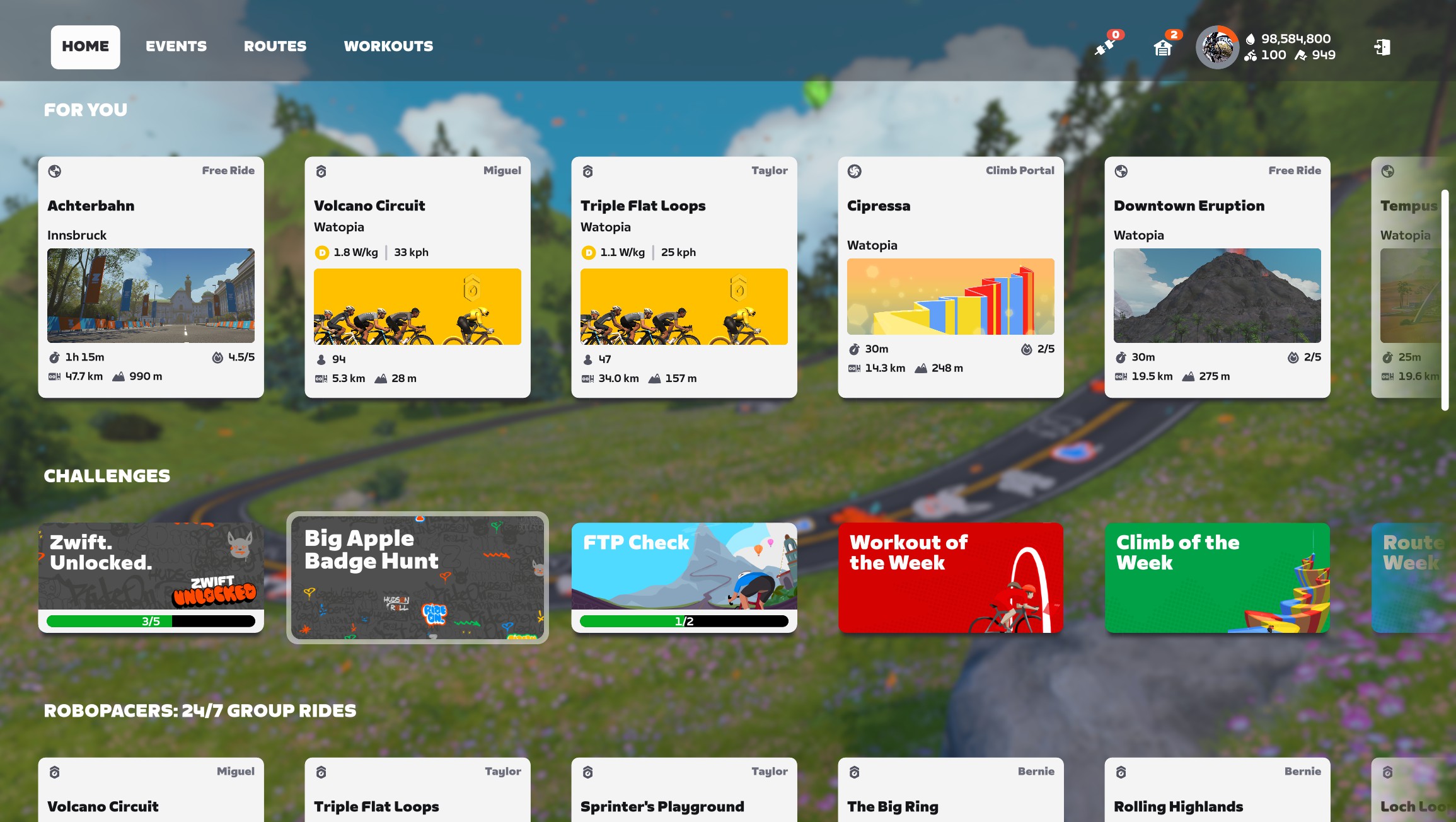
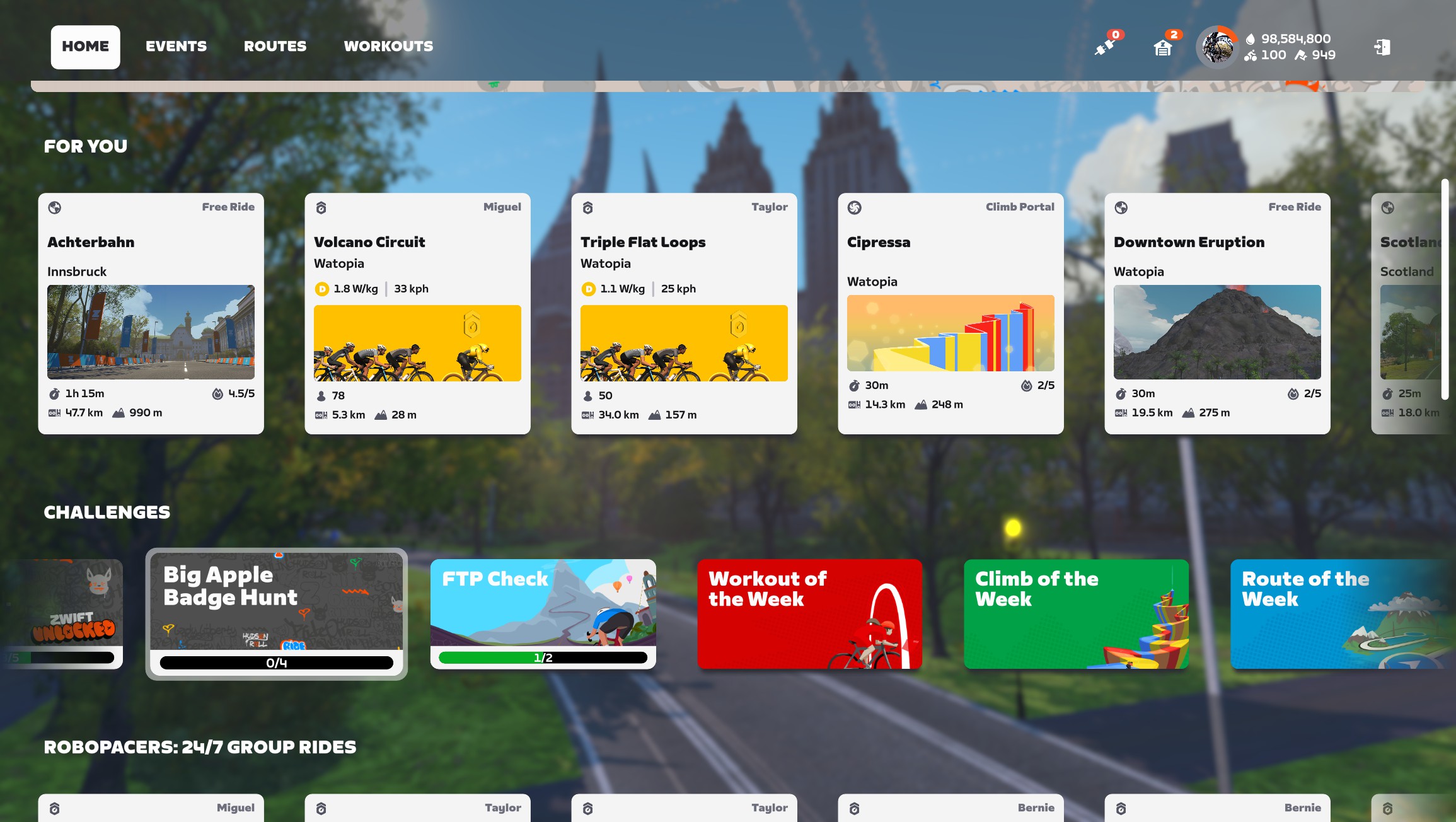
Once you’ve joined the Challenge, completing one of the Challenge routes in any sort of activity (free ride, workout, group ride, race) will mark the route as completed and earn your bonus XP.
Stacking Rewards
Pro tip: “stacking” mini challenge requirements lets you earn bonus XP even faster. For example, you could ride The Ultimate Warmup from the FTP Check Challenge on one of the routes for this challenge and get credit for finishing both!
Deadline
This challenge is live from October 27-December 31. (We recommend finishing before the final day, though, as the Challenges sometimes end at an unexpected time on the last day.)
Questions or Comments?
Post below!
“The Greenway” Route Details
“Spinfinity” Route Details
Prospect Park, Times Square, Power Segments: Zwift Releases New York Map Expansion
Today, Zwift released the much-anticipated New York map expansion. With ~30km of new roads, this is Zwift’s largest expansion ever of an existing map, more than doubling New York’s existing ~20km.
Zwift has kept the “future NYC” theme, reimagining how New York City may exist 100 years in the future. But they’ve also included many references to present-day NYC, so native New Yorkers should feel right at home. Read on for a tour of the Big Apple’s new tarmac and surrounding sights…

A Tour of the New Roads
Zwift’s expansion adds ~30km of new roads south of the existing Central Park area. Most of the new surface roads are located in the same places as their real-life counterparts, including 6th Avenue exiting Central Park, Brooklyn Bridge, Manhattan Bridge, Flatbush Avenue, Grand Army Plaza, and Prospect Park.
The subways and Times Square, on the other hand, take plenty of liberties in their layouts. While they are roughly located in the same place as their present-day counterparts, their layouts don’t match what exists today.
Below you’ll find a “clean” version of Zwift’s updated New York map, and a marked-up version showing each of the new sections:


Subway 1
The first of three subway sections as you travel north to south, this subway feels most like a traditional New York station. Its distinctive visual feature is a plethora of advertising billboards, which include cheeky throwbacks to other Zwift maps and features. You’ll see a sign advertising “Fuego Fizz” soda as well as “Fuego Flat”, a Robopacer (dating?) ad, and more.
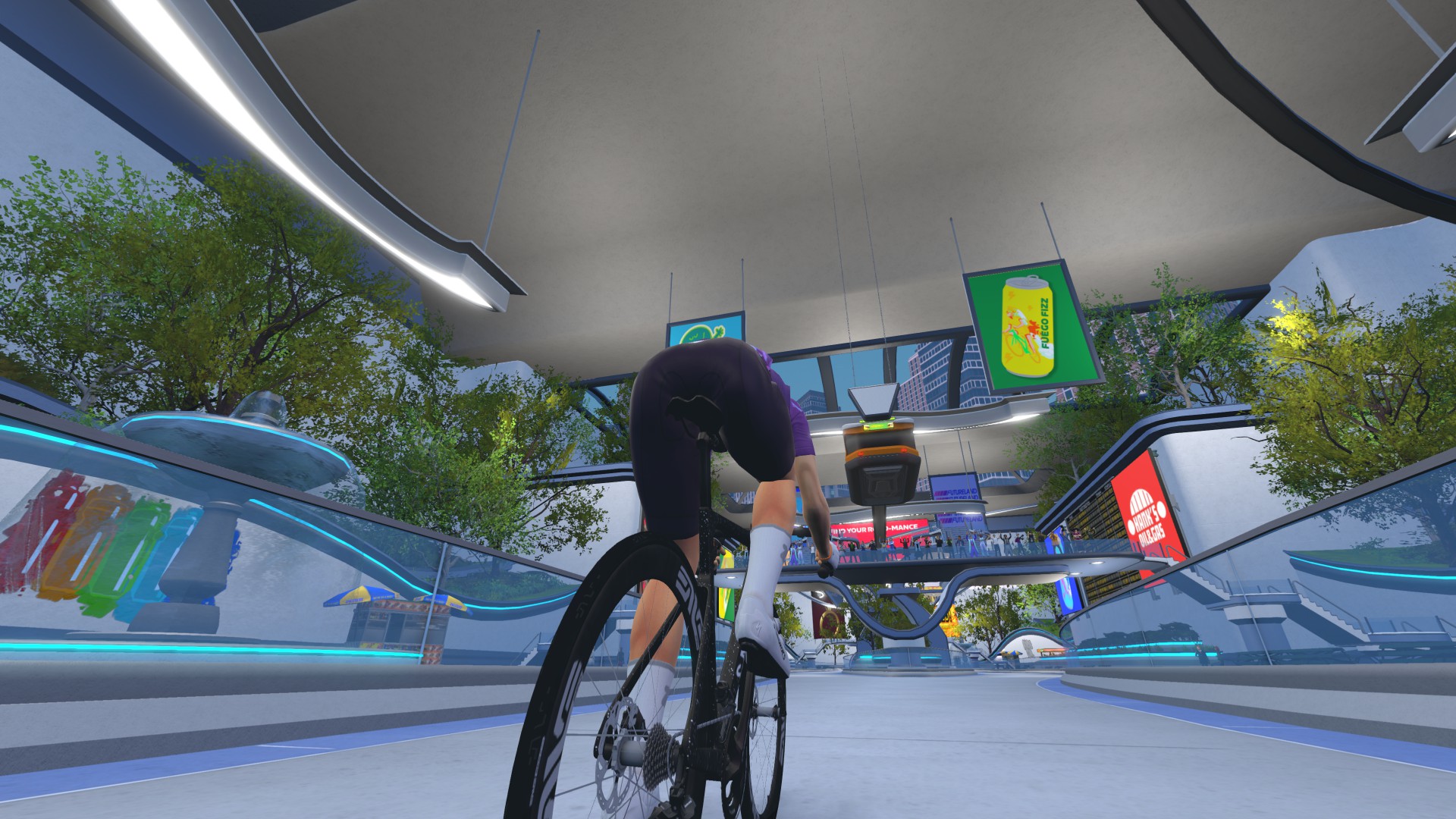
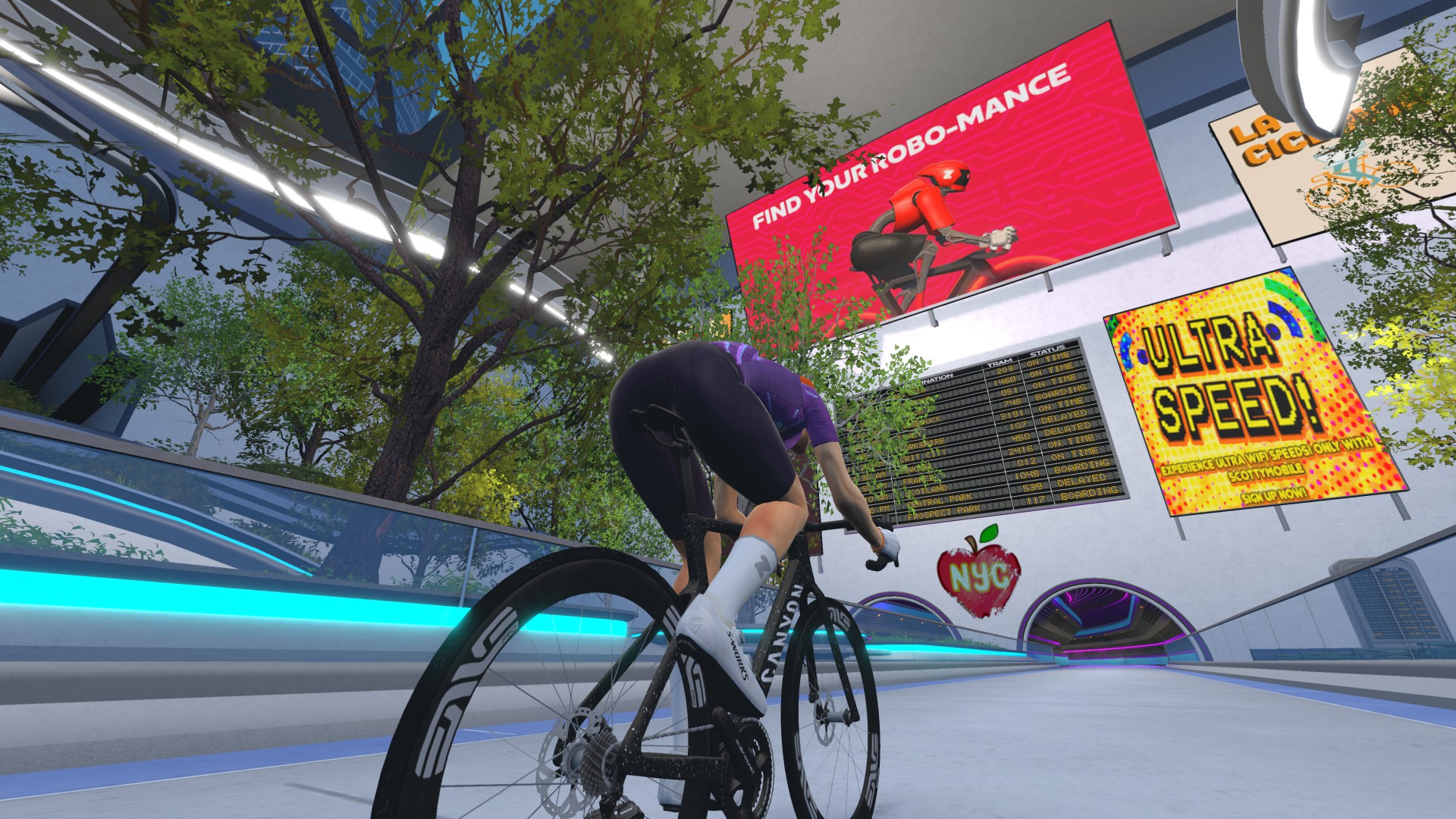
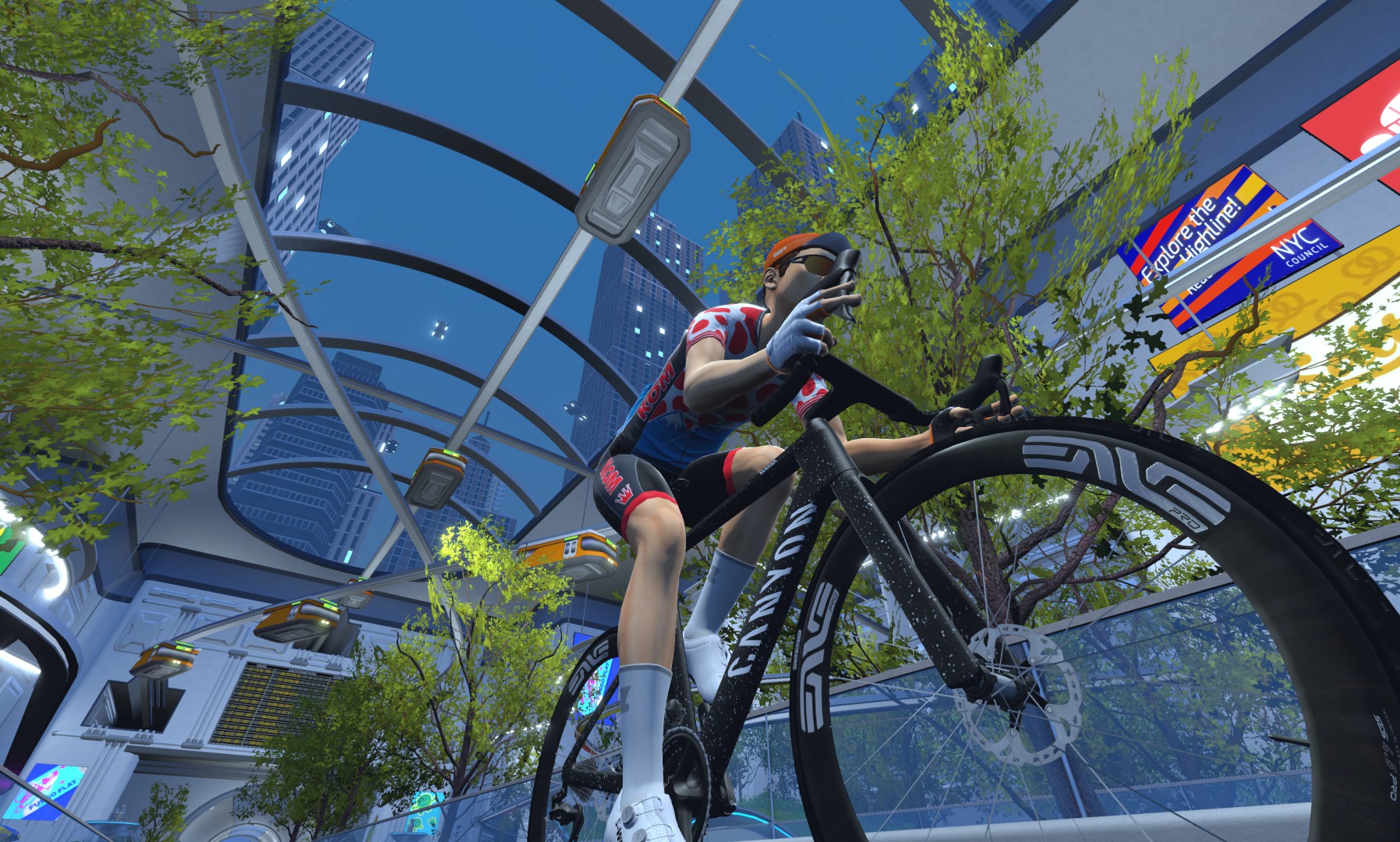
You’ll also see the first bits of graffiti, including a “jmX” tag you’ll find elsewhere in this expansion. (It’s a nod to Jon Mayfield, original creator of what would become Zwift, who named his software “jmX Trainer Coach”.)
This subway, like the other two, includes Power Segments in both directions. Traveling south, you’ll hit a 5-second Power Segment, while north contains a 20-second segment. These sections of road are one-way, meaning you cannot u-turn.
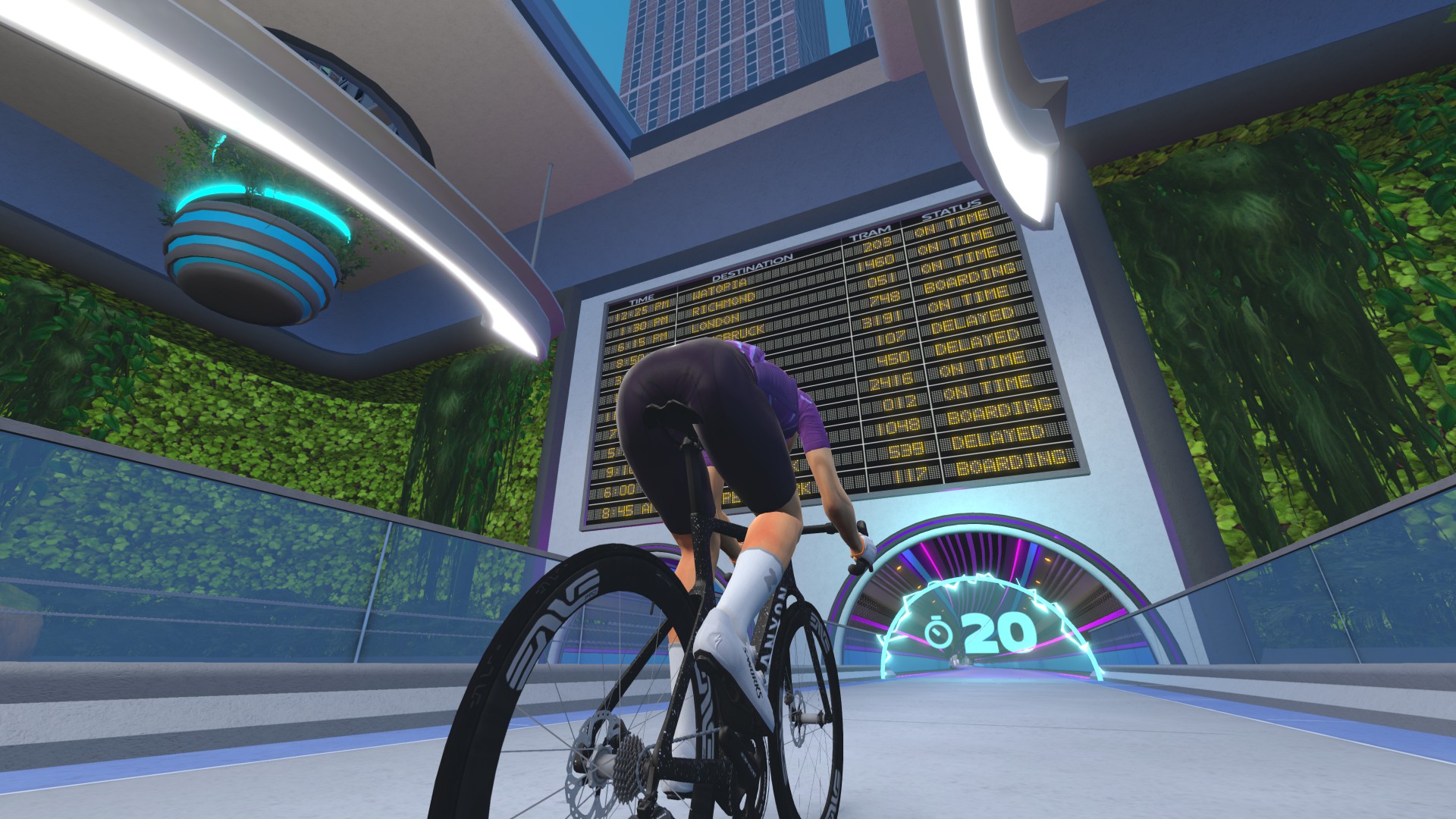
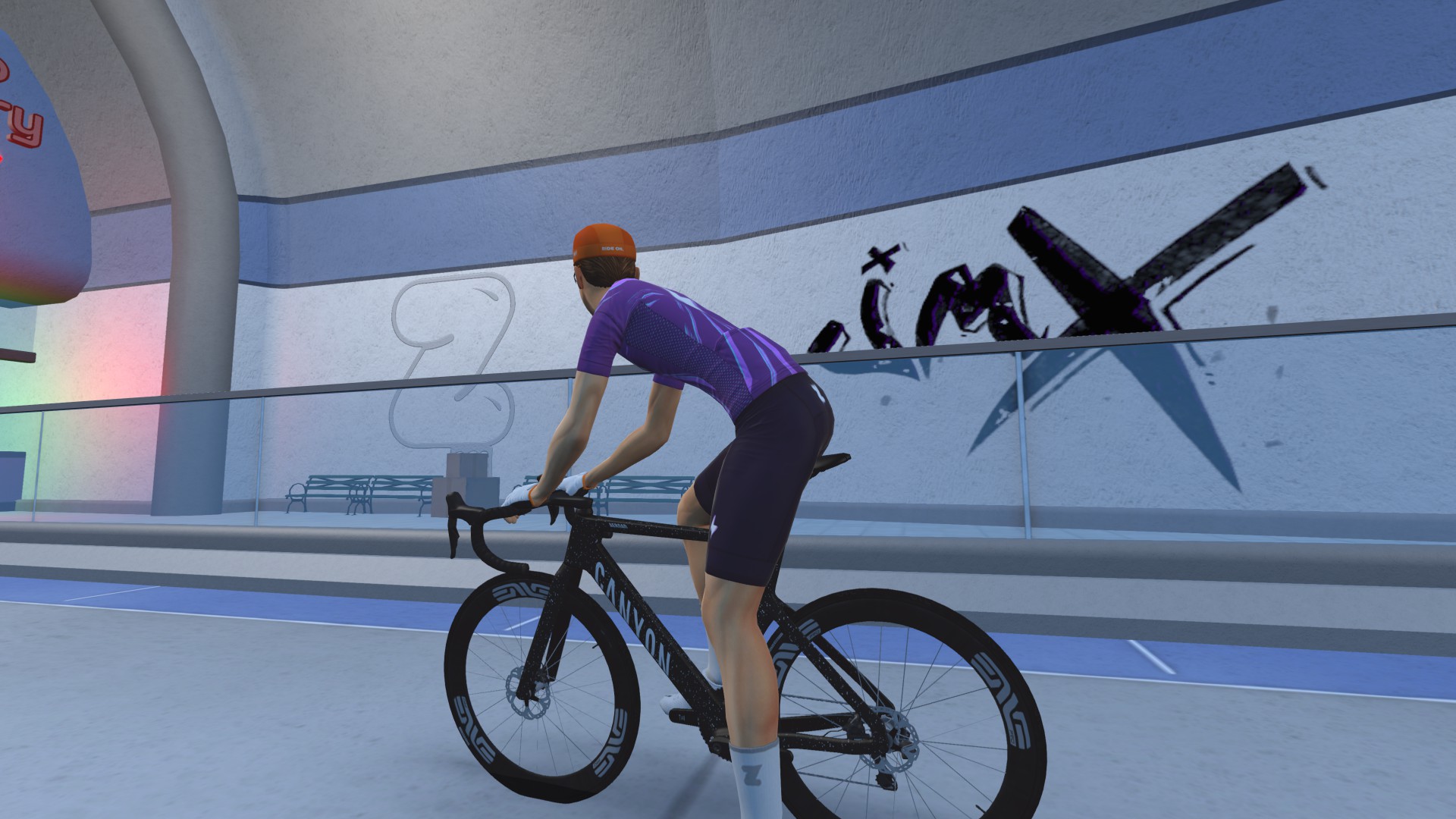
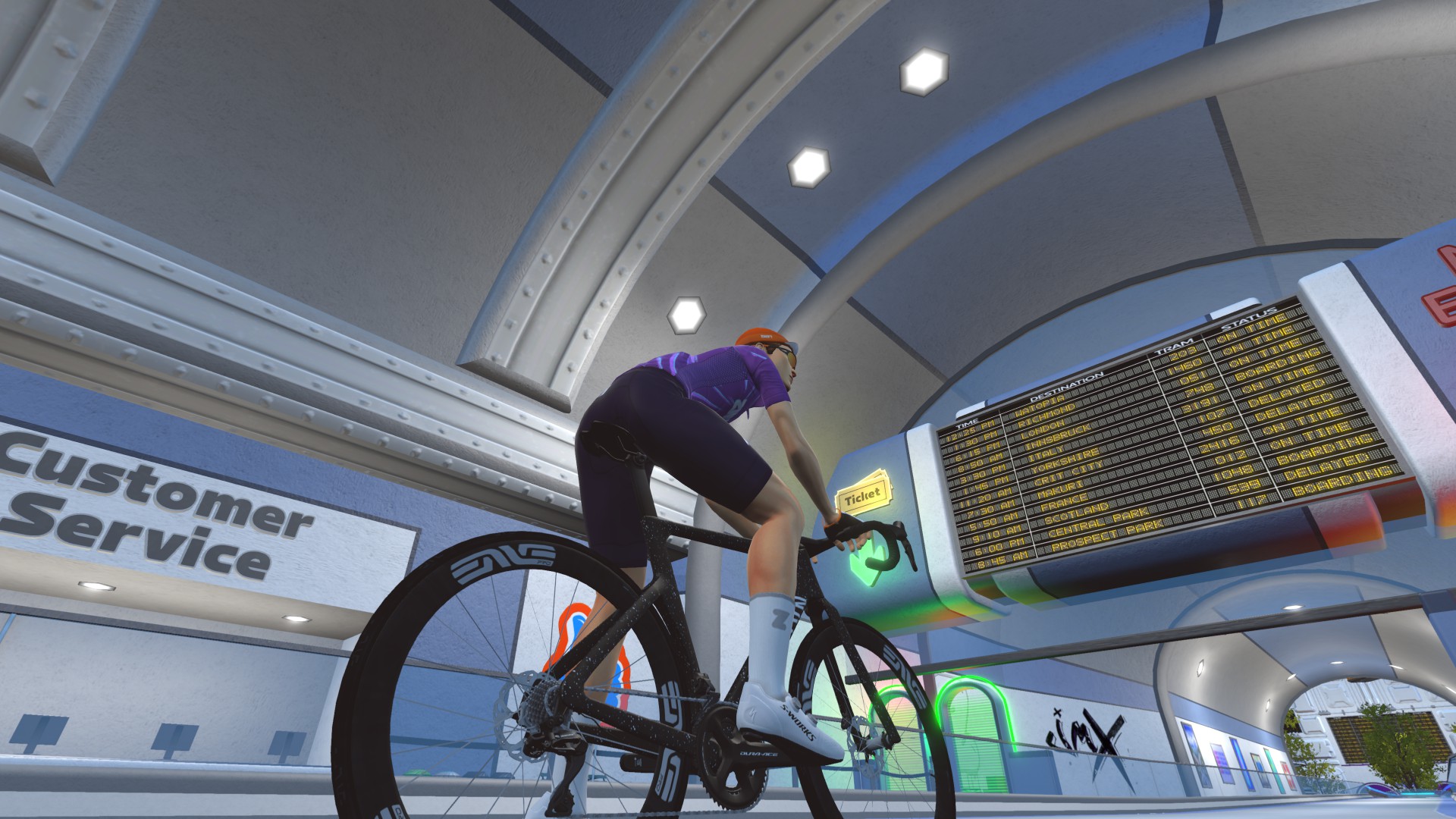
To exit this and the other two subways, you’ll ride up a steep ramp. Good news, though: there’s a bit of an “escalator” built into the ramp to help you to the top! Here’s what it looks like:

Times Square
The Times Square section is a 3.5km glass road circuit with a leaderboard that awards an orange jersey to the current fastest man and woman on course, in both directions. There are also new start pens located on this circuit.
Times Square Circuit Strava Segment >
Times Square Circuit Reverse Strava Segment >
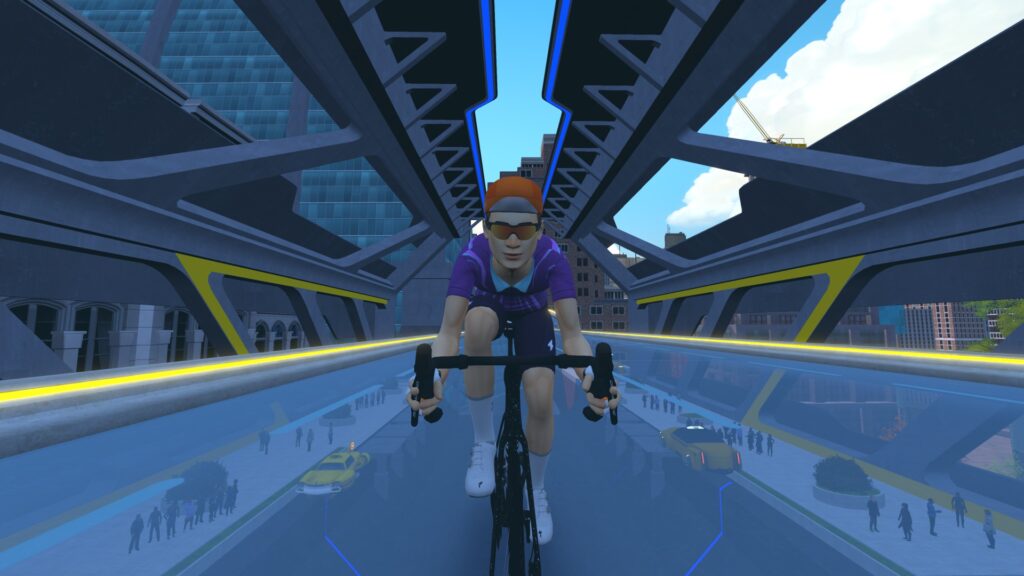
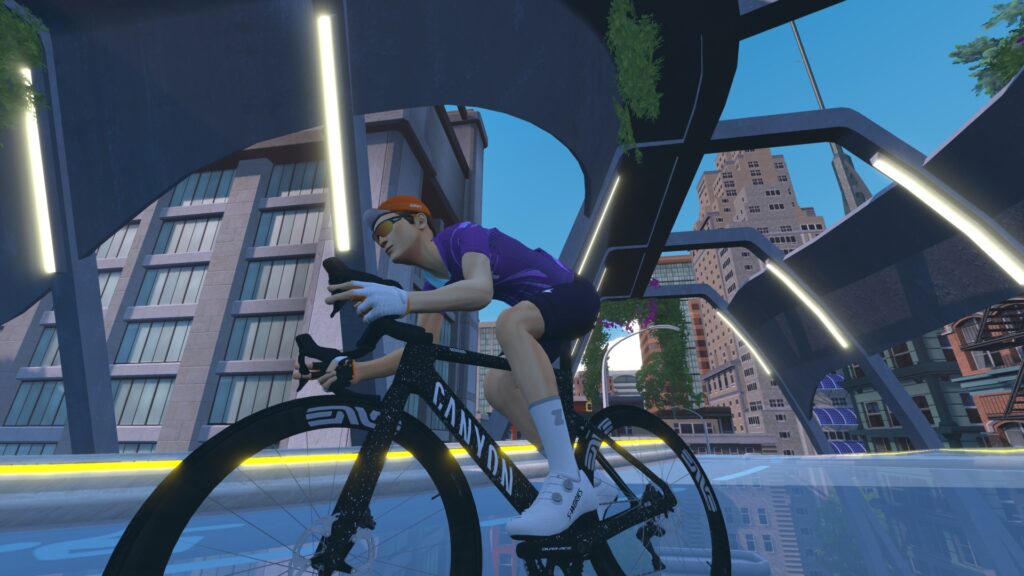
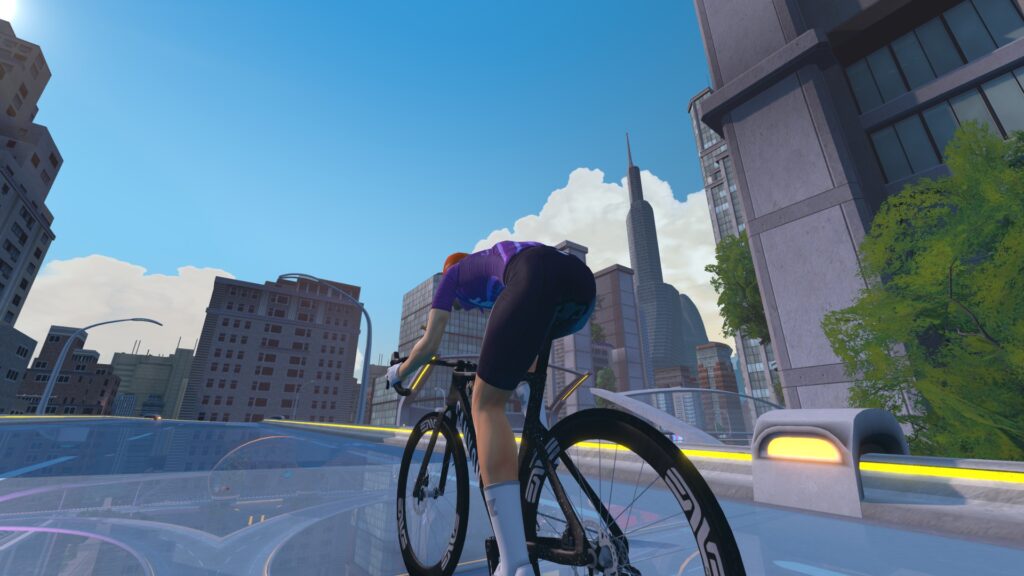
While the idea of more glass roads in New York may strike fear in the heart of non-climbers like myself, in talking to Tony Yruegas, Zwift’s Game Art Director, he explained that they pulled a bit of a visual trick in this section by sinking the ground-level roads so the glass roads could appear elevated without much climbing being needed to reach them. “Overmuscled” cyclists everywhere salute you, Tony and team!
While this section doesn’t have many distinctive visual features beyond the glass roads, Tony tells me it will be the site of future celebrations (parades, confetti, etc.), including a possible NY-style Ball Drop on New Year’s.
Subway 2 (City Hall Station)
Continuing south, we descend into the second subway section, which is a throwback to New York’s City Hall station. This station opened in 1904, but has been closed since 1945, although you can still tour it today. It features distinctive brick archways, which Zwift has replicated in game:
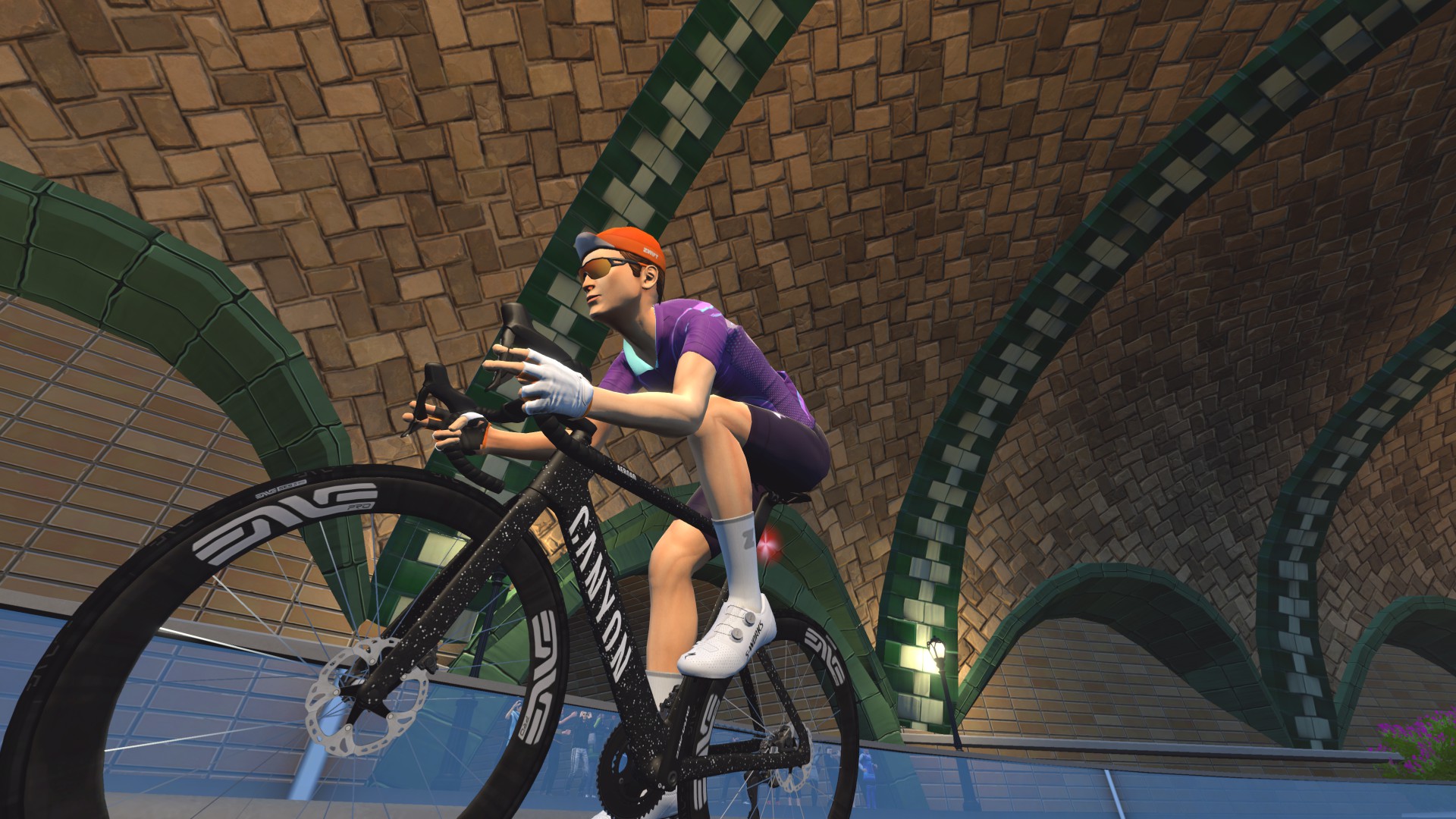
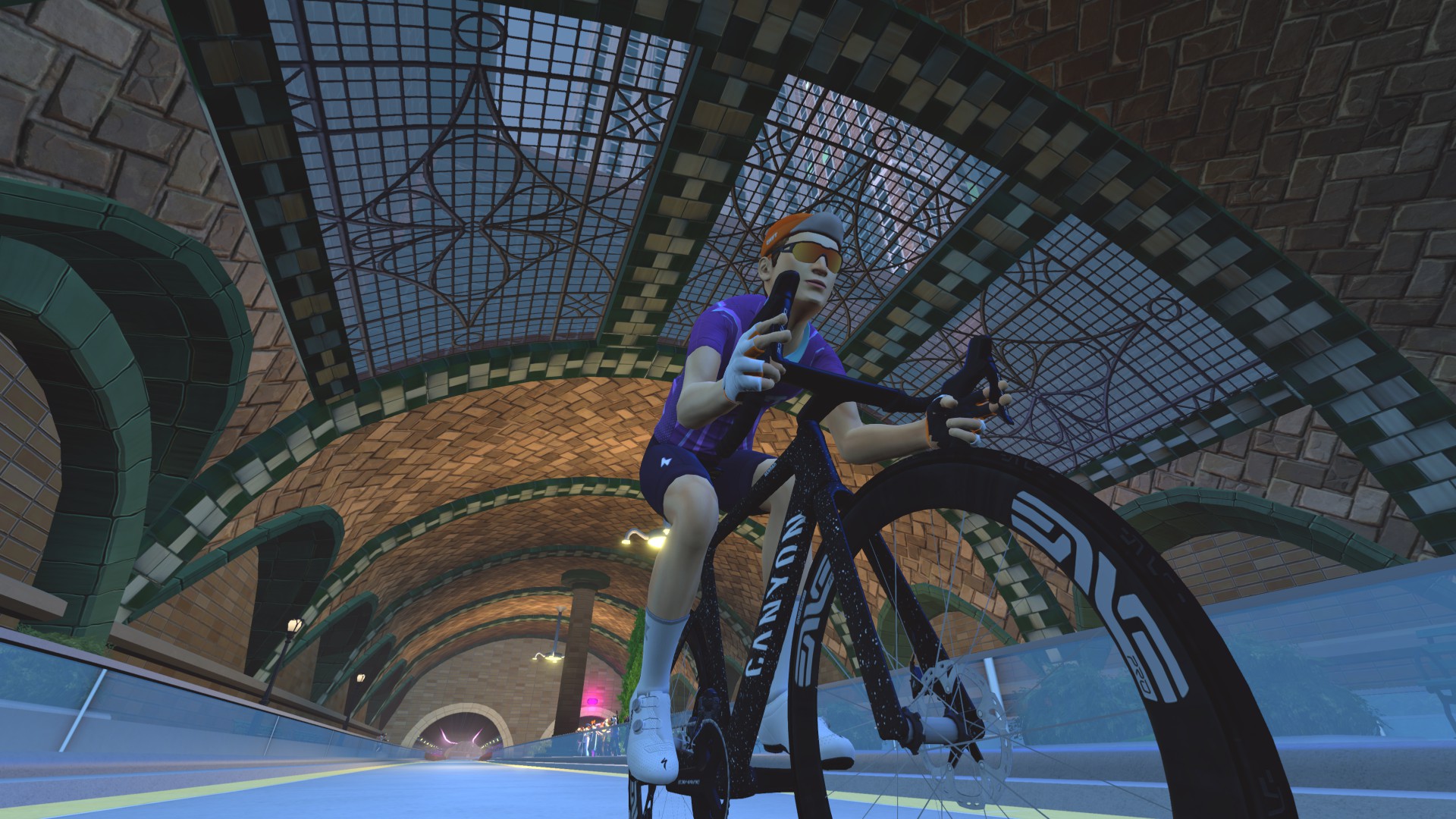
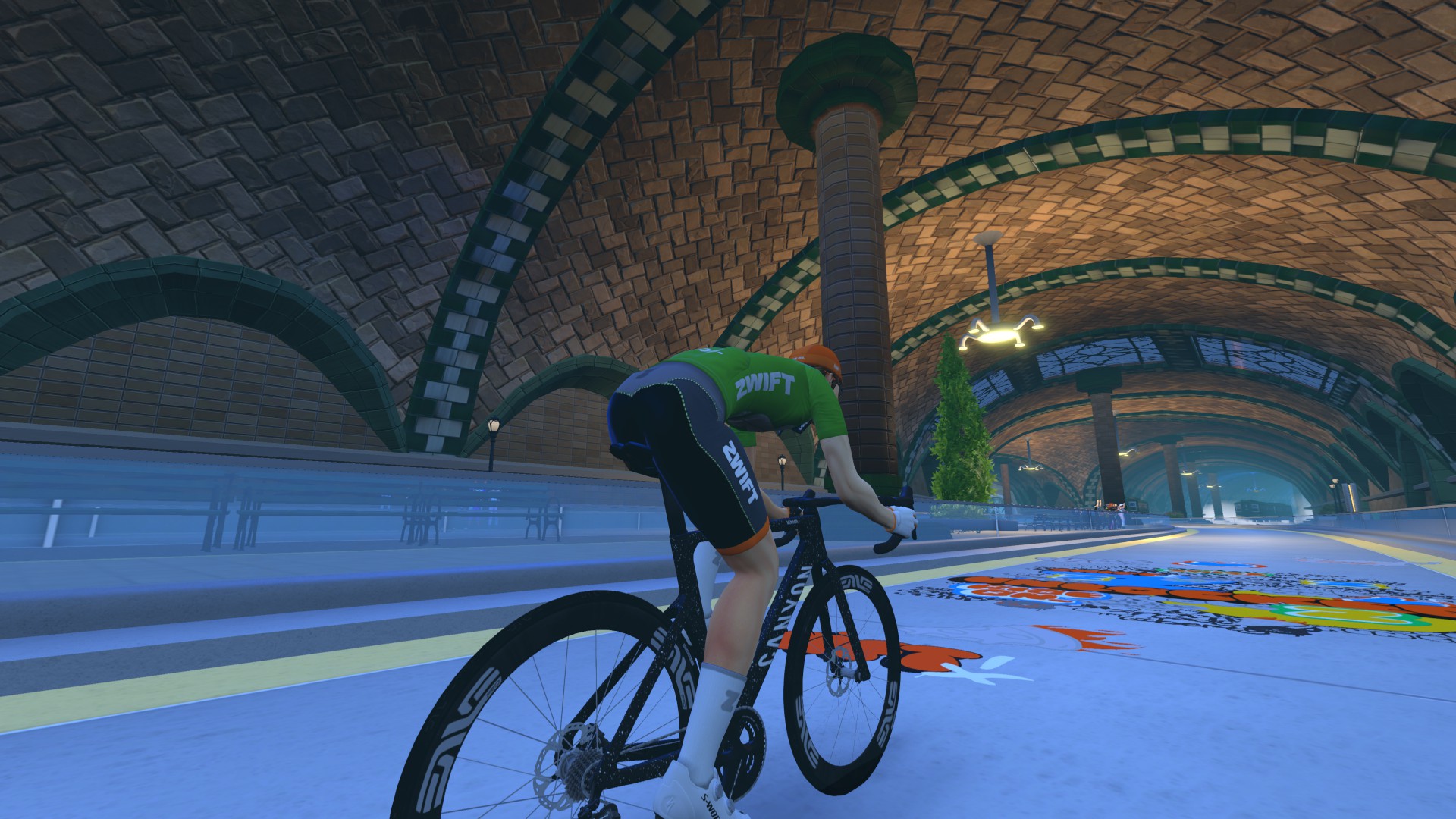
This section includes 10-second Power Segments in both directions:
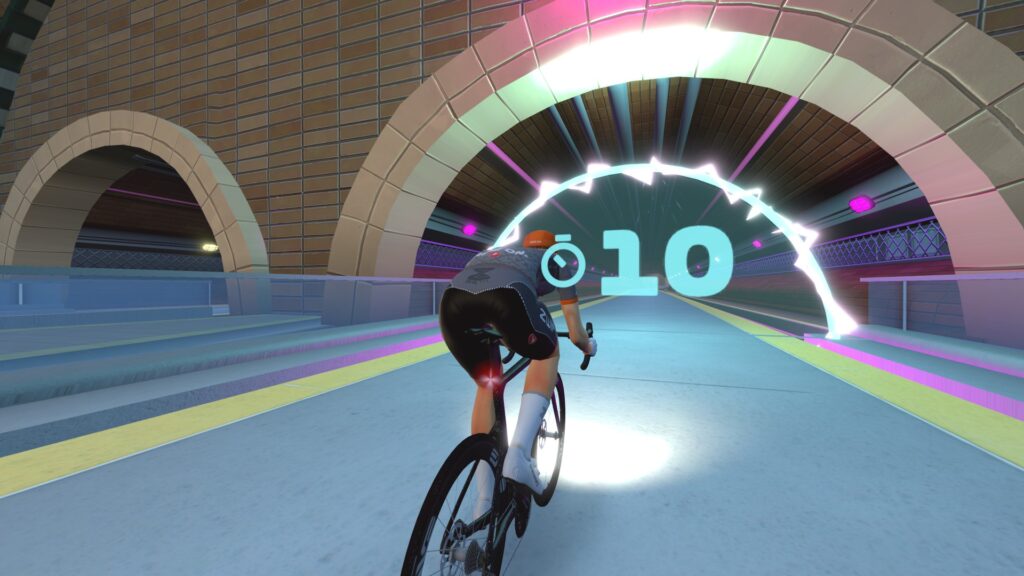
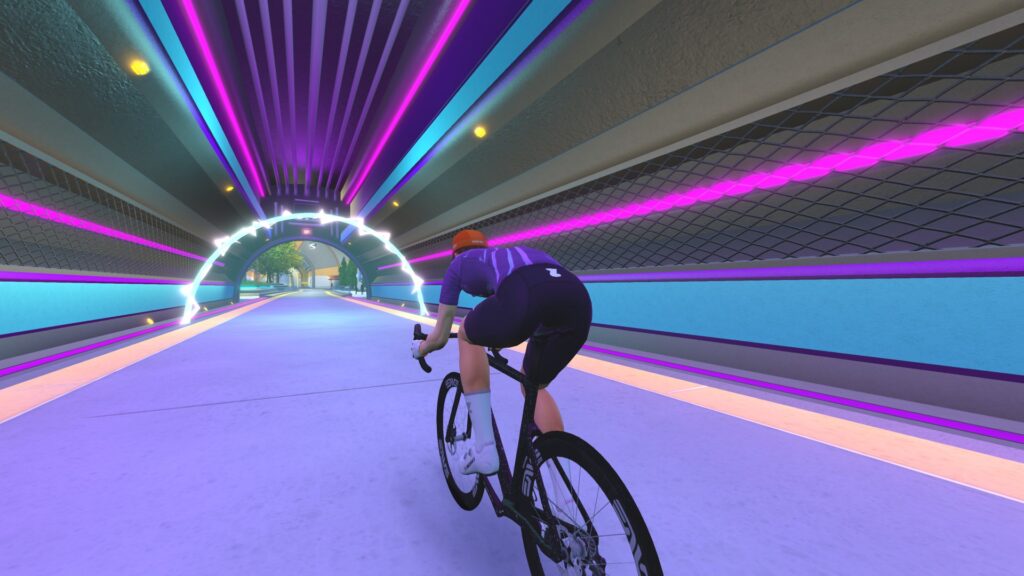
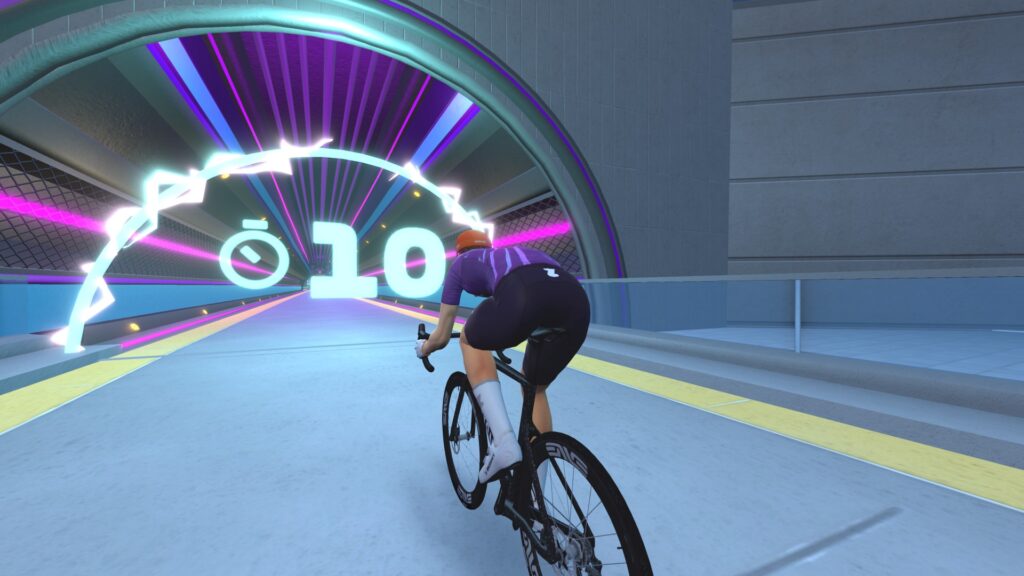
Manhattan Bridge
Traveling north to south, the first bridge you’ll encounter is the Manhattan Bridge. For non-NYC natives, the Manhattan Bridge is easily distinguished from the Brooklyn Bridge by its ironwork towers and grey steel girders. (The Brooklyn Bridge, in contrast, has stone/concrete towers and horizontal iron beams which block the skyline views.) The Manhattan Bridge also includes a huge stone archway at the entrance to the Manhattan side:
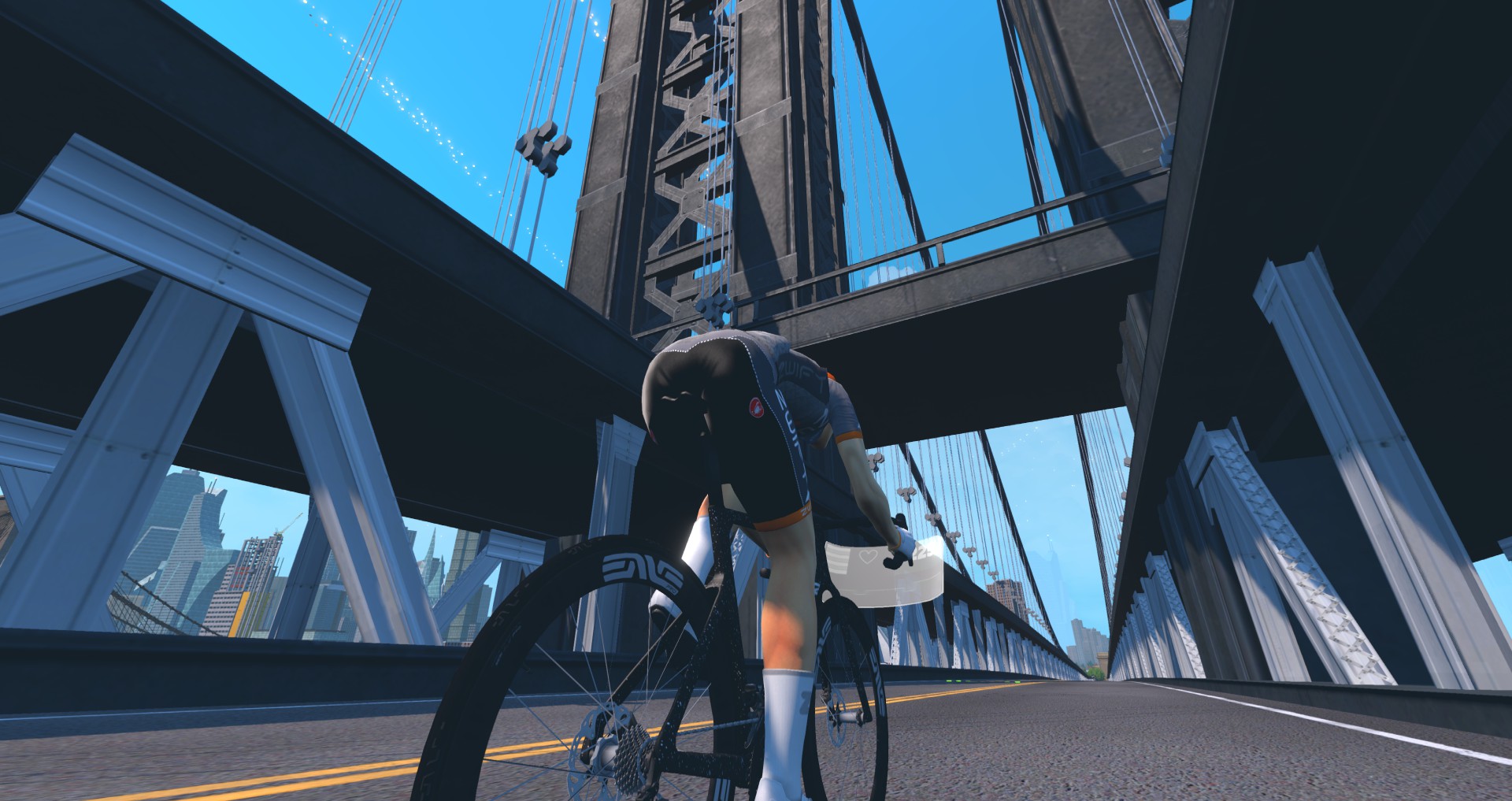

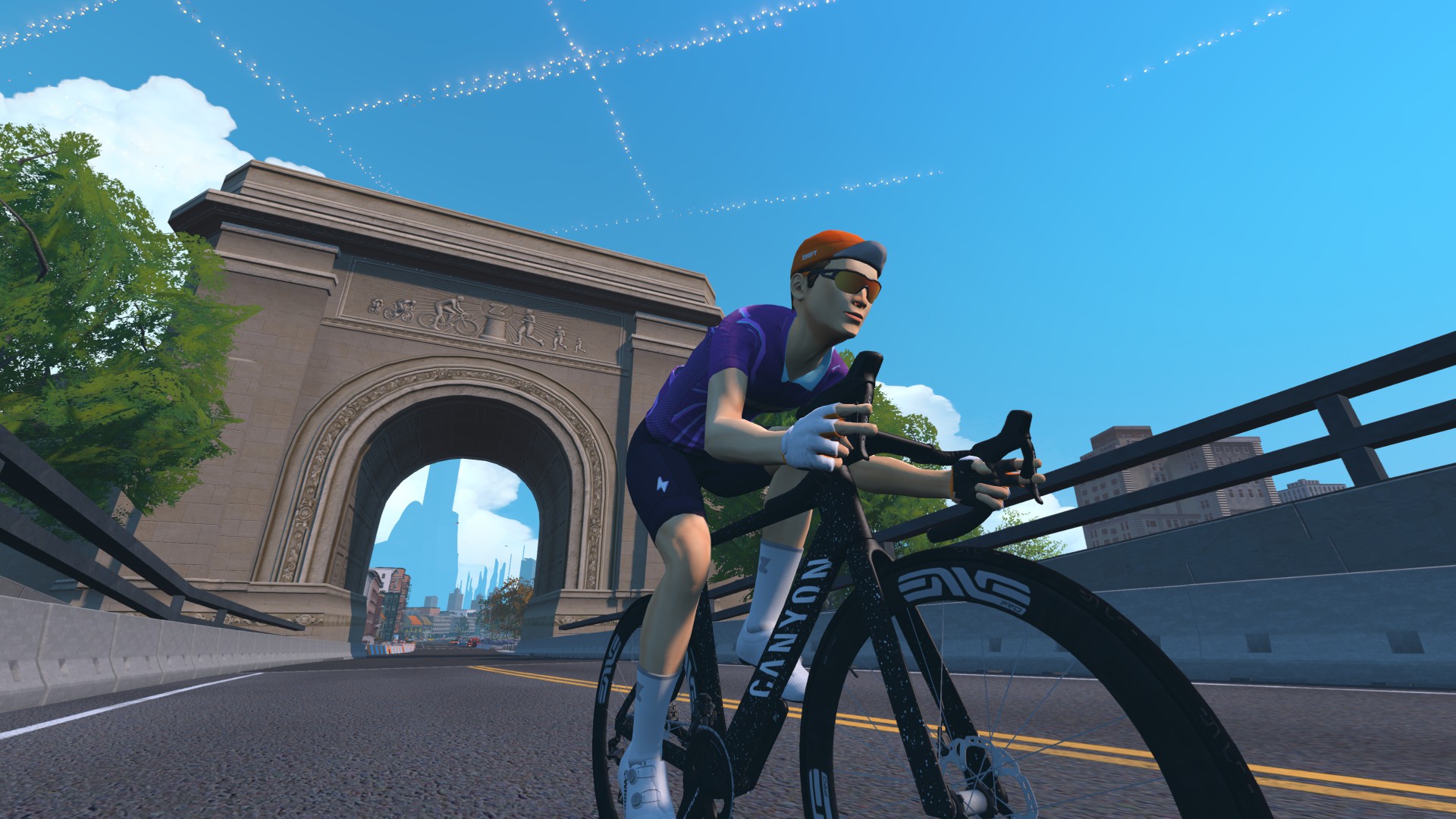
Looking for your best skyline view from a bridge? It’s found on Manhattan Bridge, heading toward Manhattan.
Manhattan Bridge has 250-meter sprint segments in both directions. Both sprints are slightly uphill, since the bridge arches a bit:
- Manhattan Sprint (250 meters, 1.3%)
- Manhattan Sprint Reverse (250 meters, 0.3%)
A large stone arch marks the bridge’s exit on the Manhattan side, while a corkscrew road is the exit on the Brooklyn side.
Brooklyn Bridge
The Brooklyn Bridge includes a KOM section (Brooklyn Bridge KOM, 2km, 1.7%) which runs in only one direction, from the Manhattan side to the center of the bridge. It’s an interesting KOM, too, because it actually begins with a descent! (So don’t let that 1.7% number fool you, as this is really more like 1.5km at 3.6%.)
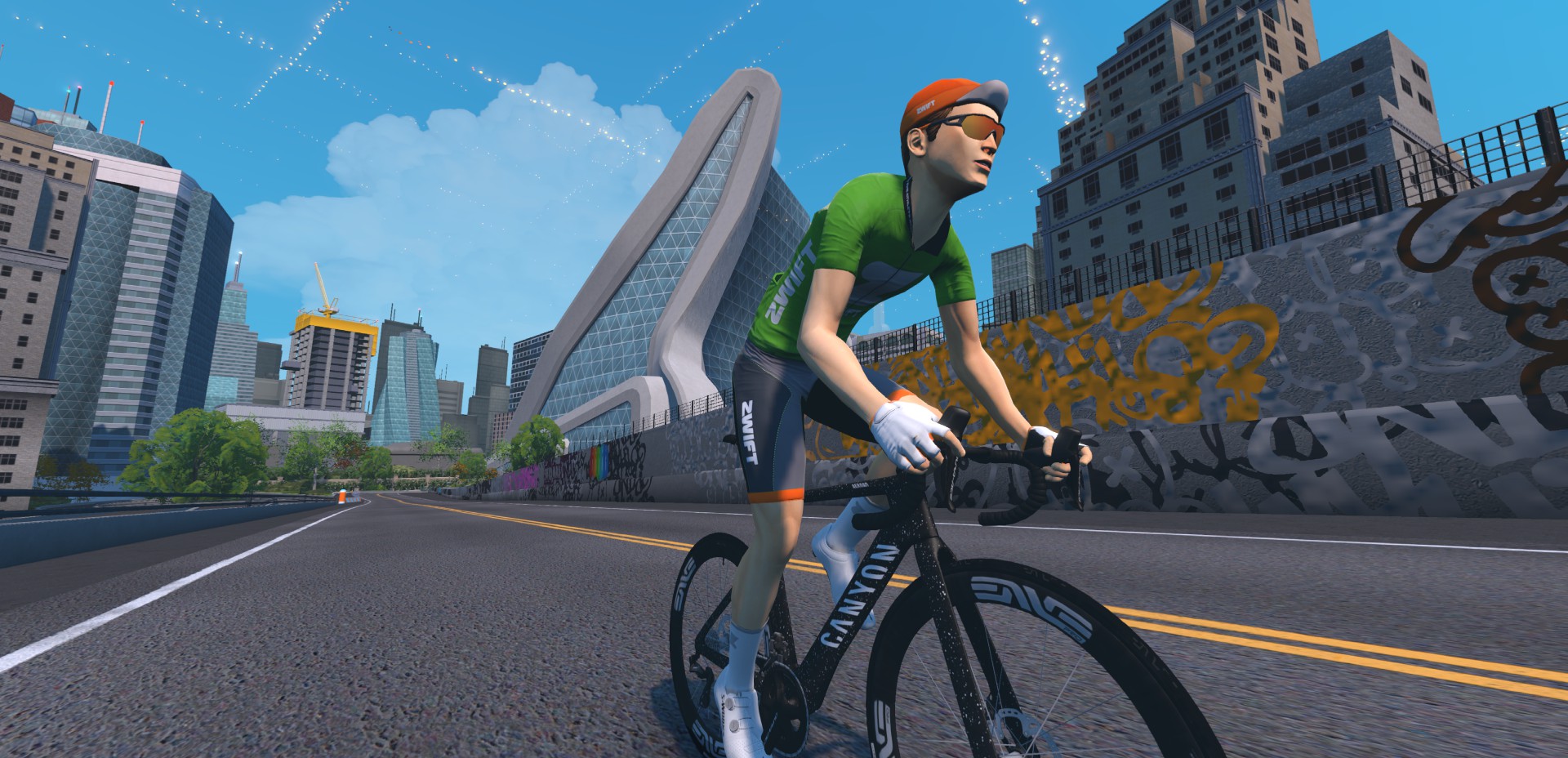
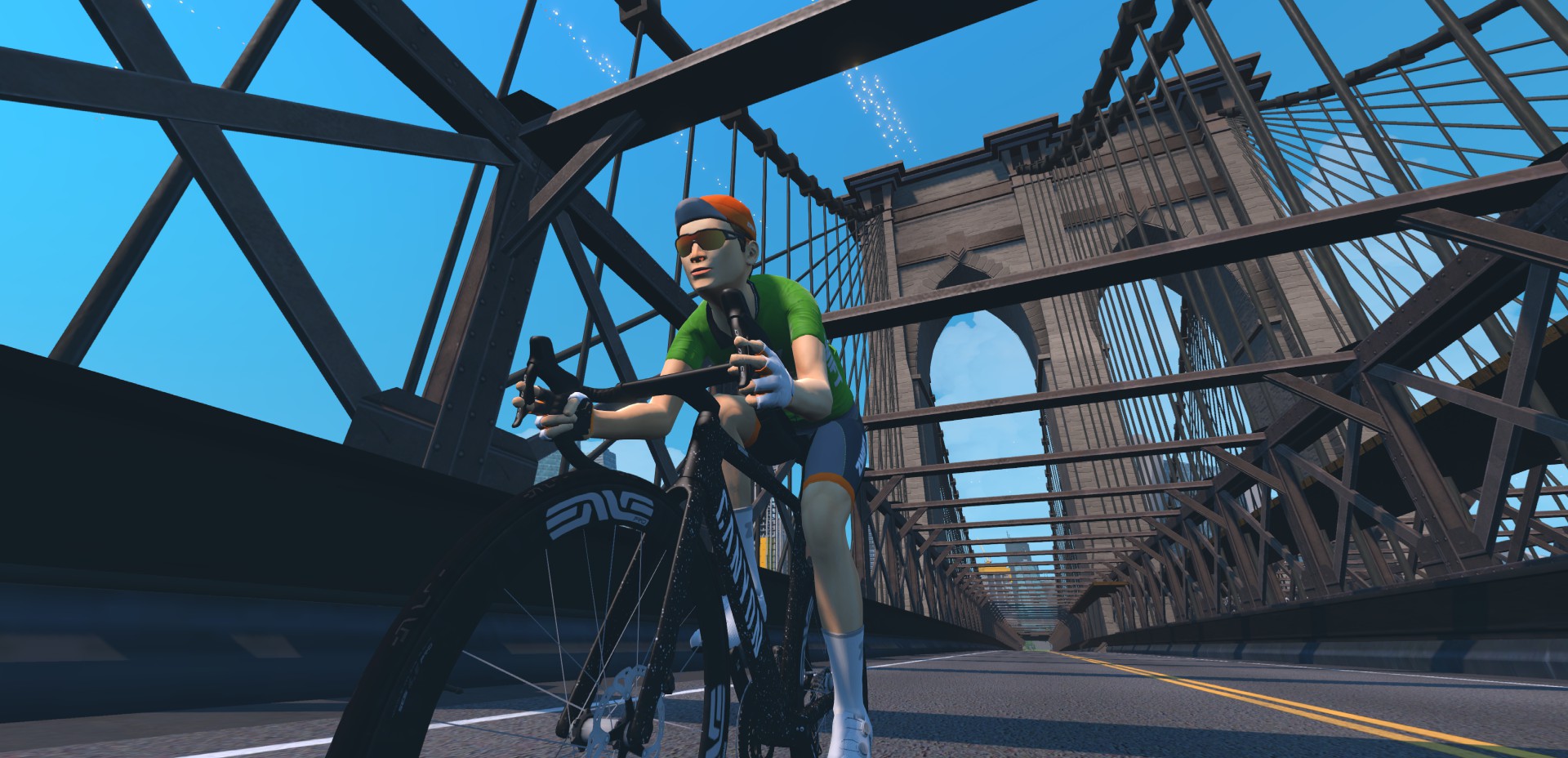
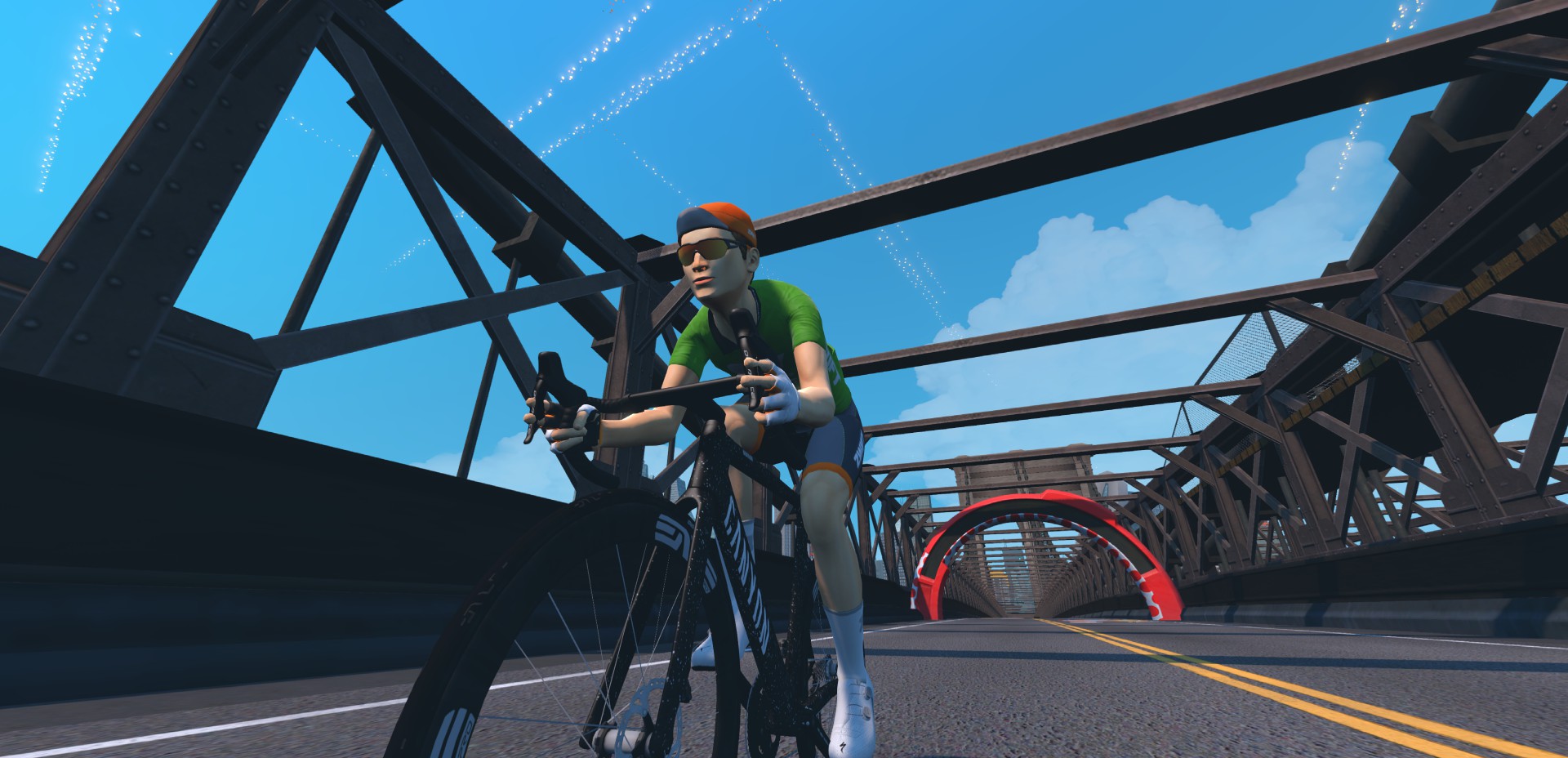
Subway 3 (Brooklyn)
Almost to Prospect Park! After crossing the East River via the Brooklyn or Manhattan bridges, you’ll descend into the third and final subway section. This is the only one located on the Brooklyn side.
This subway is the “greenest” of the three, with more open skylights and windows to let the sun shine on the trees and plants in the station. This is also the most graffiti-heavy of the three stations, especially as you exit out the Prospect Park side.
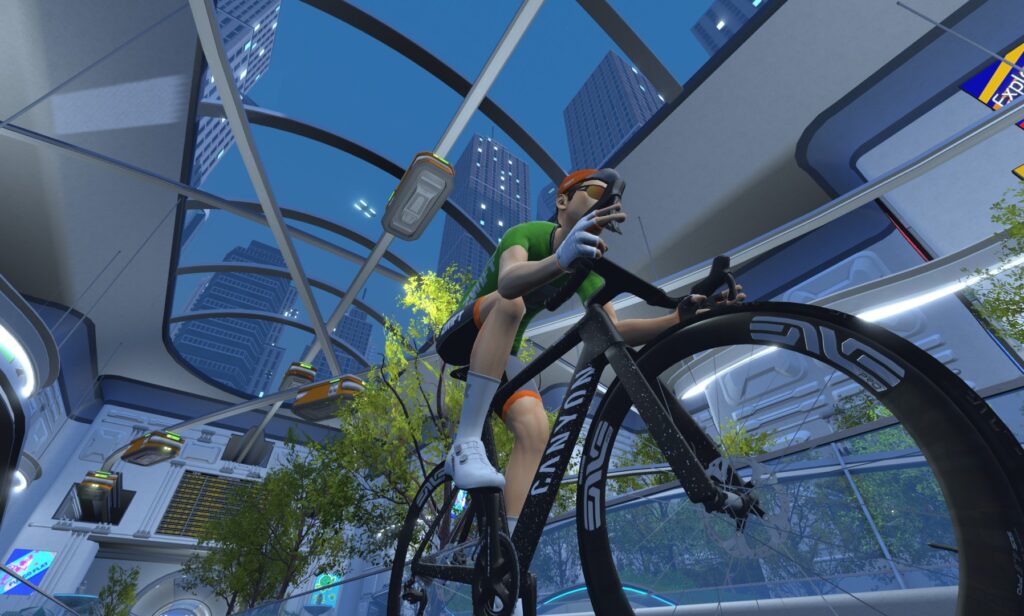
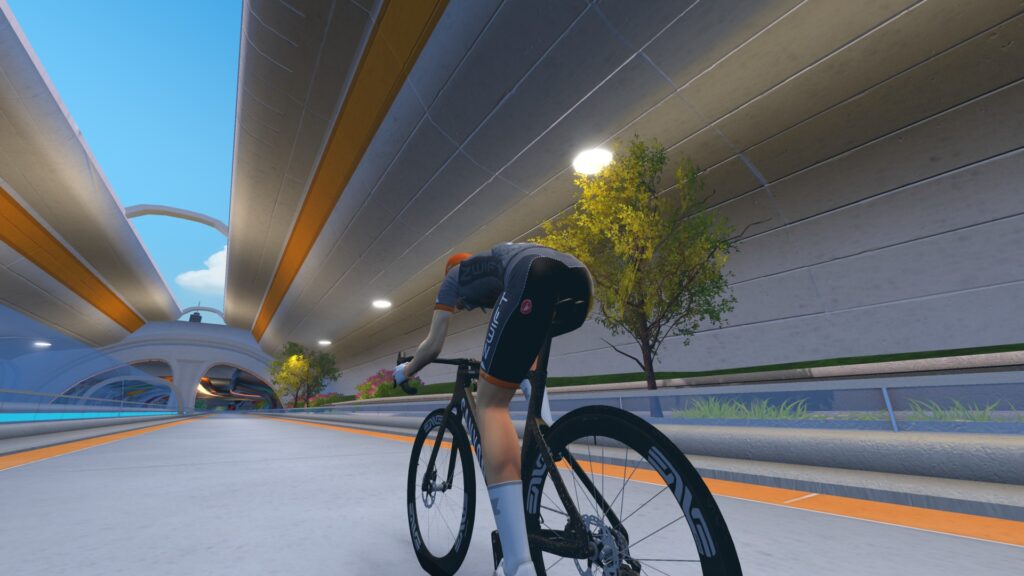
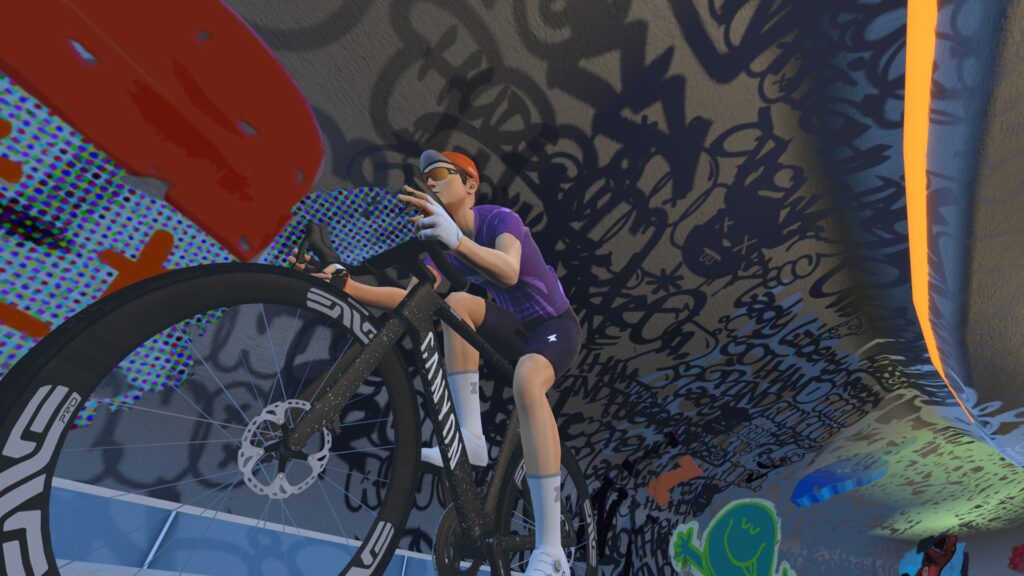
The Brooklyn subway includes two Power Segments. Traveling southeast toward Prospect Park you’ll hit a 20-second Power Segment, while northwest includes a 5-second segment.
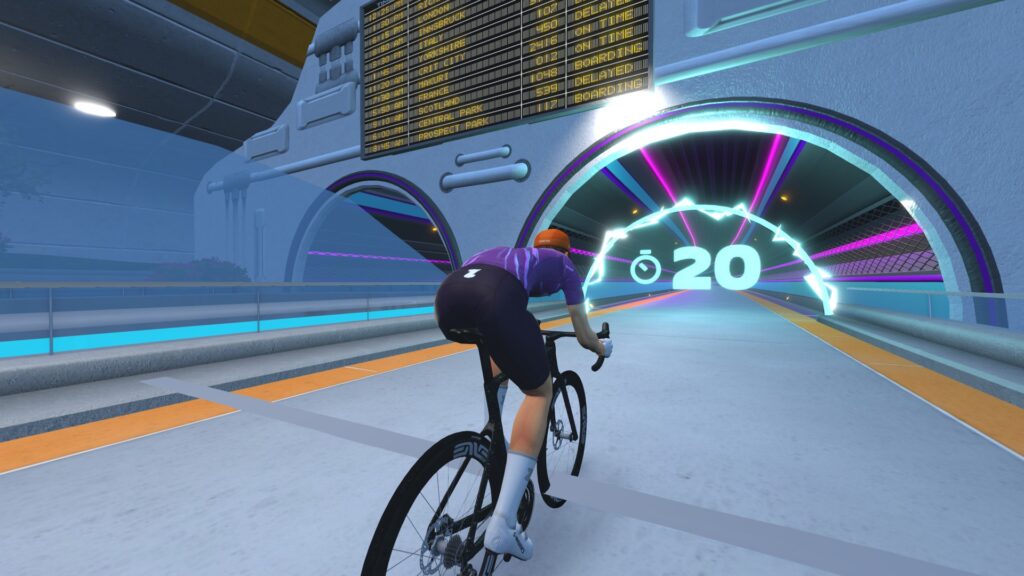
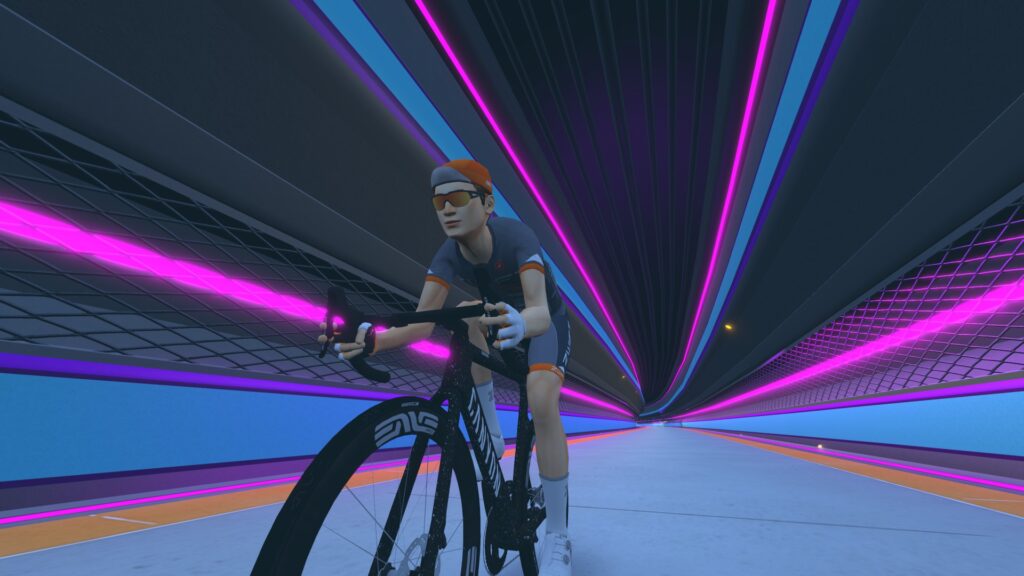
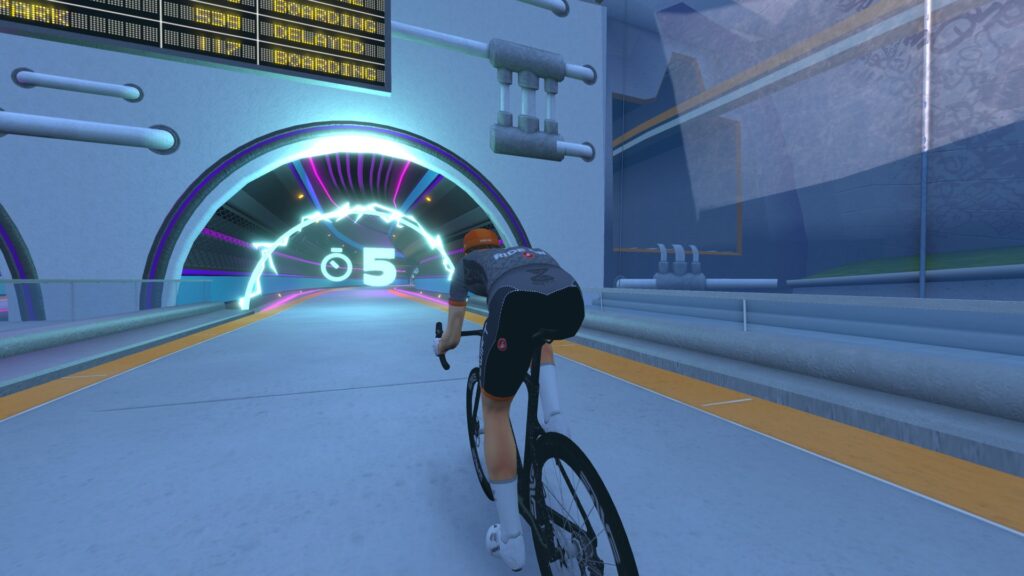
Prospect Park
Exiting the subway, you’ll travel south down Flatbush Avenue (which is actually a climb), arriving at a ring road that takes you around Grand Army Plaza to the entrance of Prospect Park.
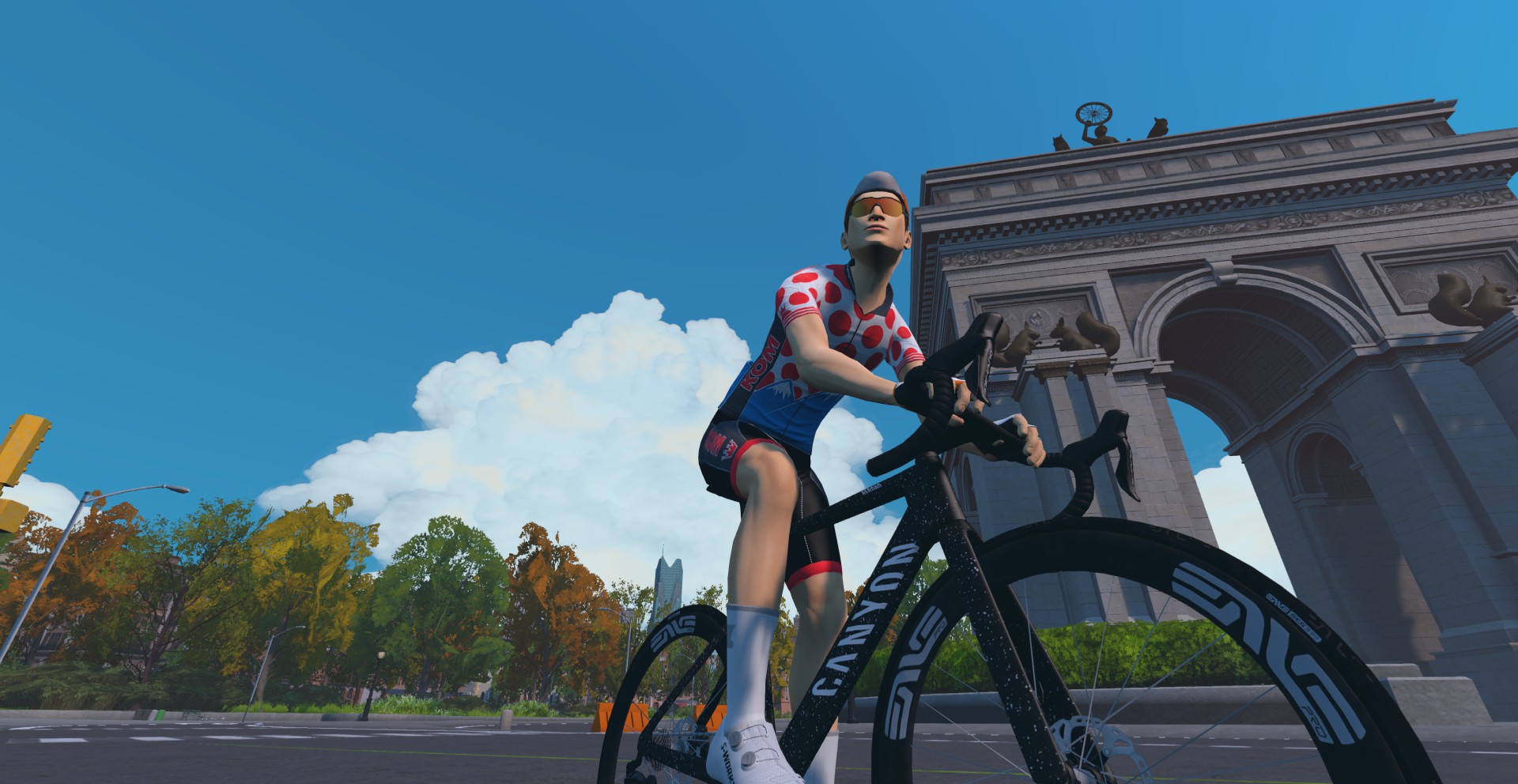
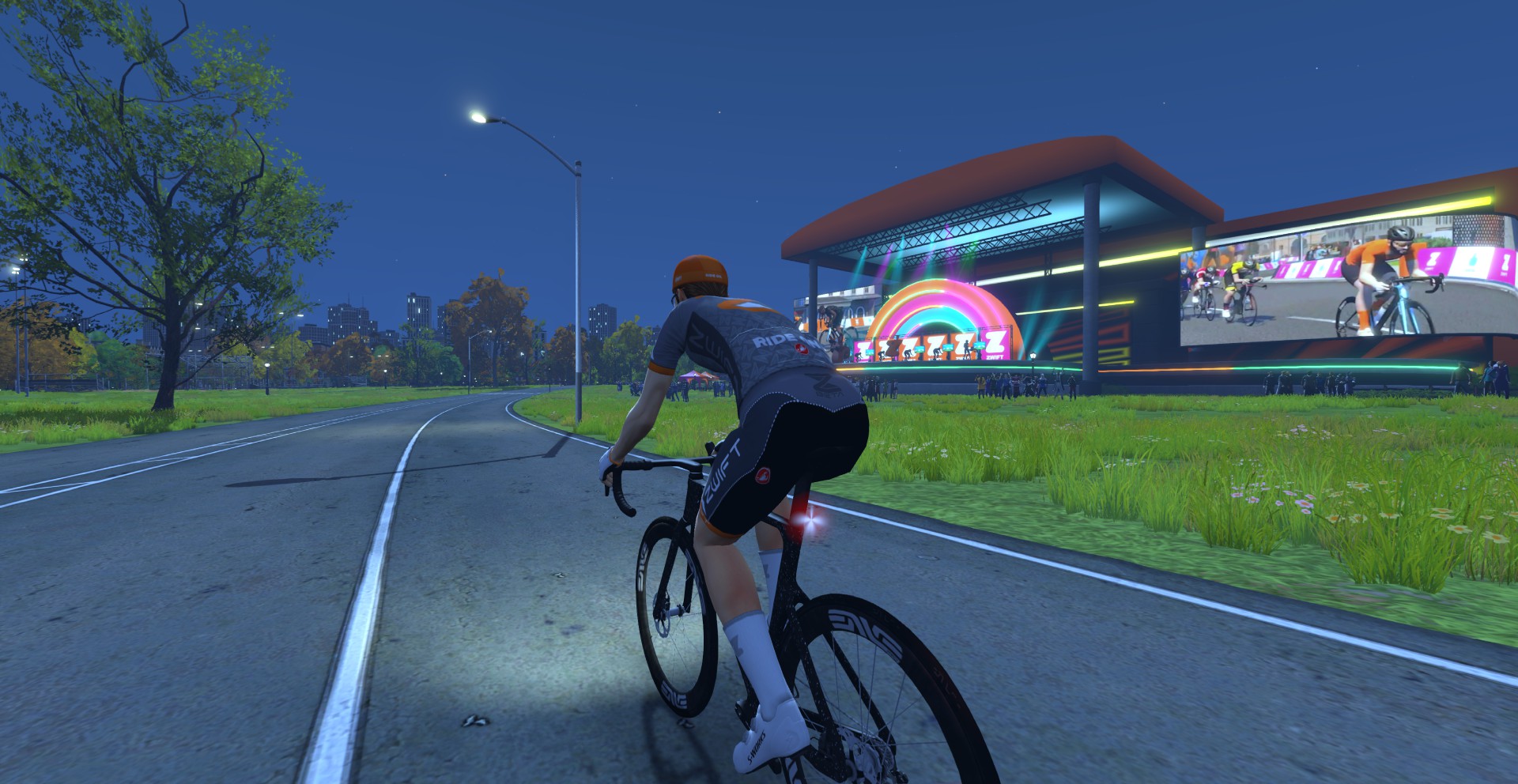
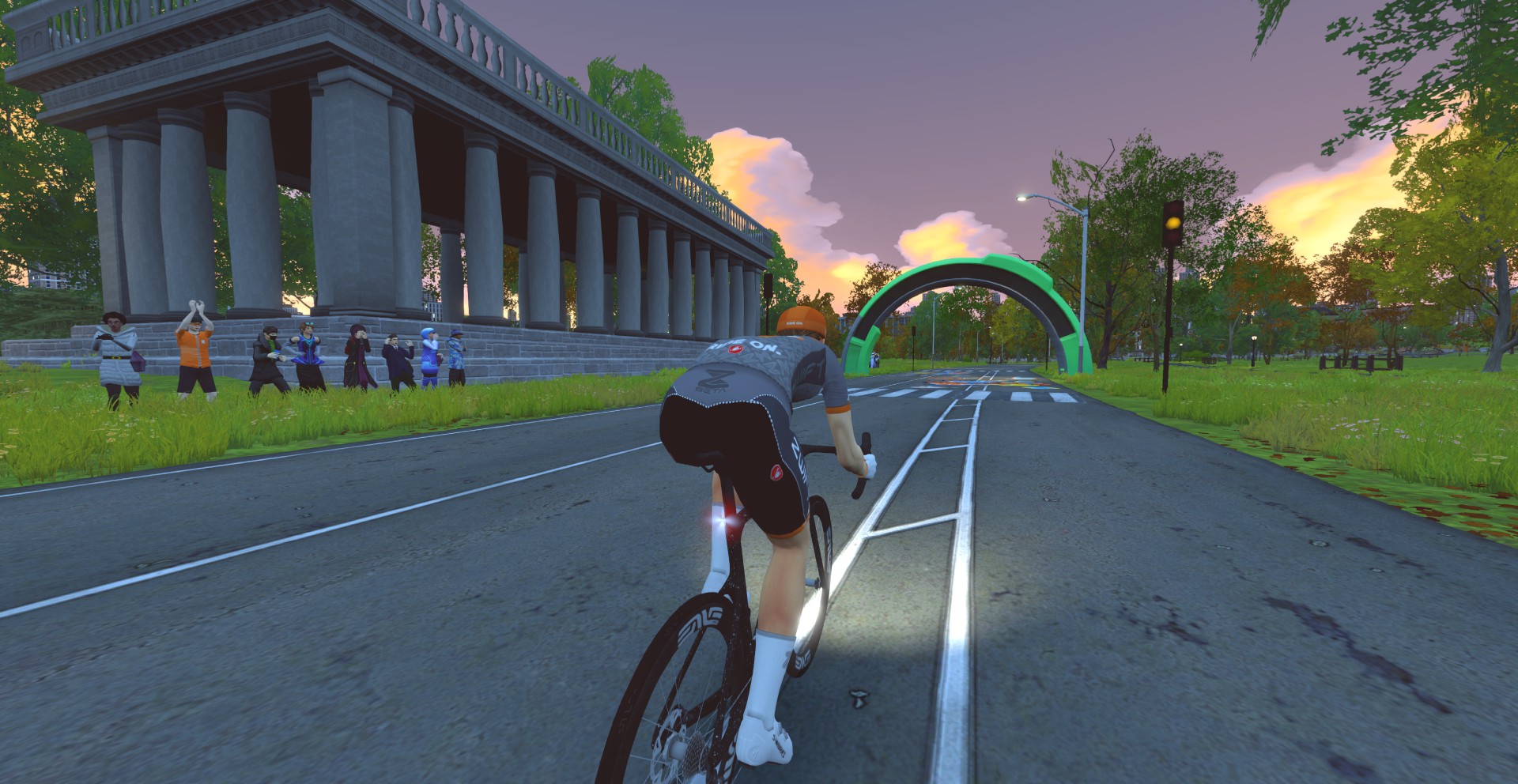
This park was designed by Frederick Law Olmsted and Calvert Vaux 8 years after they collaborated to design Central Park. Zwift’s layout matches the IRL park roads, including a 5.5km loop and a central road (aptly named Center Drive) that offers a shortcut to the other side.
Prospect Park includes 2 sprint banners and one KOM:
- Center Sprint (200 meters, -2.2%)
- Center Sprint Reverse (200 meters, 2.4%)
- The Peristyle Sprint (400 meters, 0.6%)
- The Peristyle Sprint Reverse (400 meters, 0.1%)
- The Hill KOM (500 meters, 3.7%)
- The Hill KOM Reverse (length and gradient unknown – while it shows on the leaderboard, there is no visible start line on course)
As you make your way around the circuit counterclockwise, you’ll notice various sites: the lap banner, which comes just after the new Prospect Park start pens. The Bandshell, which has received significant upgrades in Zwift’s reimagining. The Peristyle, which hosts the banner for a sprint that runs in both directions. And the Prospect Park Zoo, here much more visible than the real-life zoo, which is hidden behind a high gate!
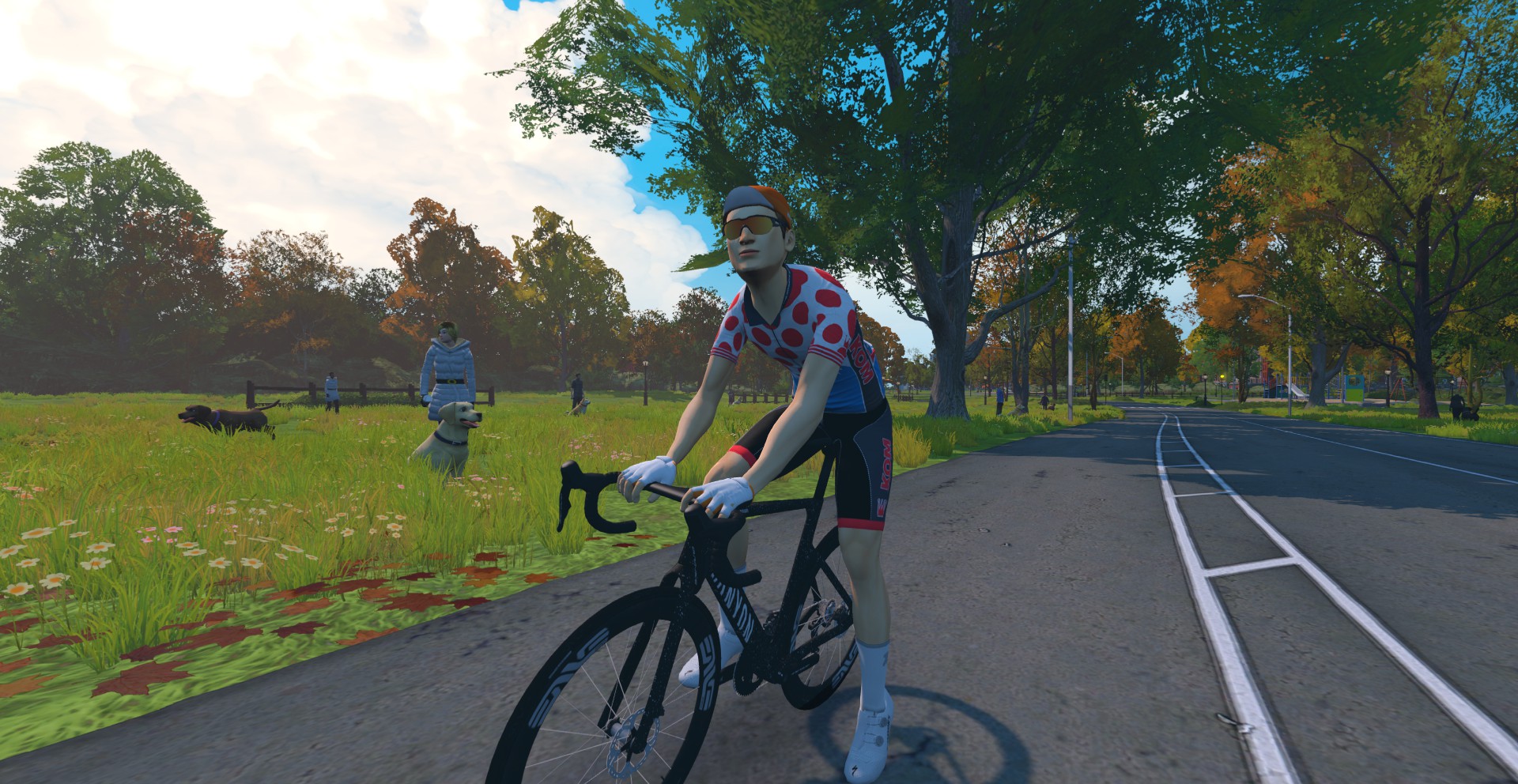
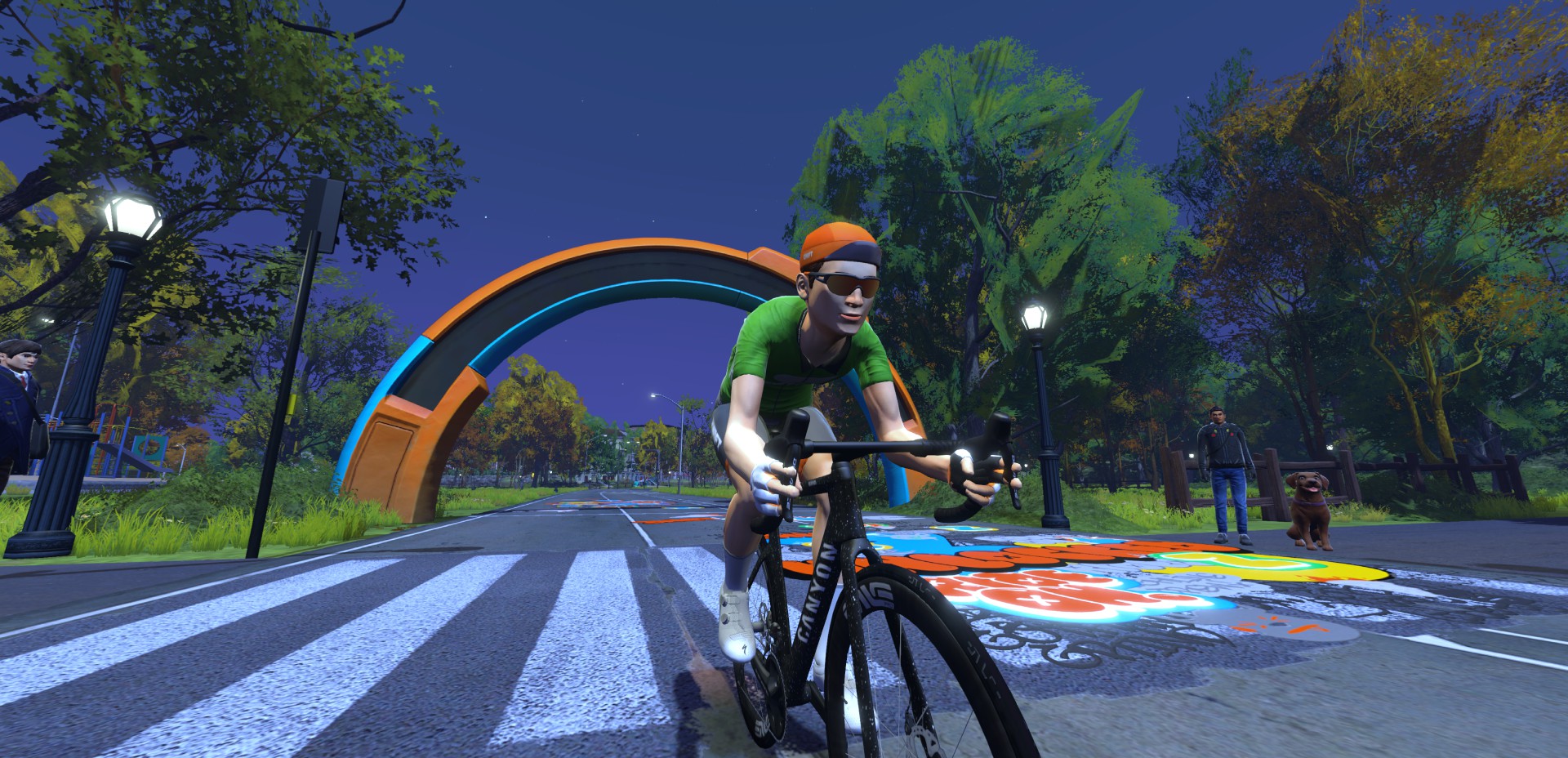
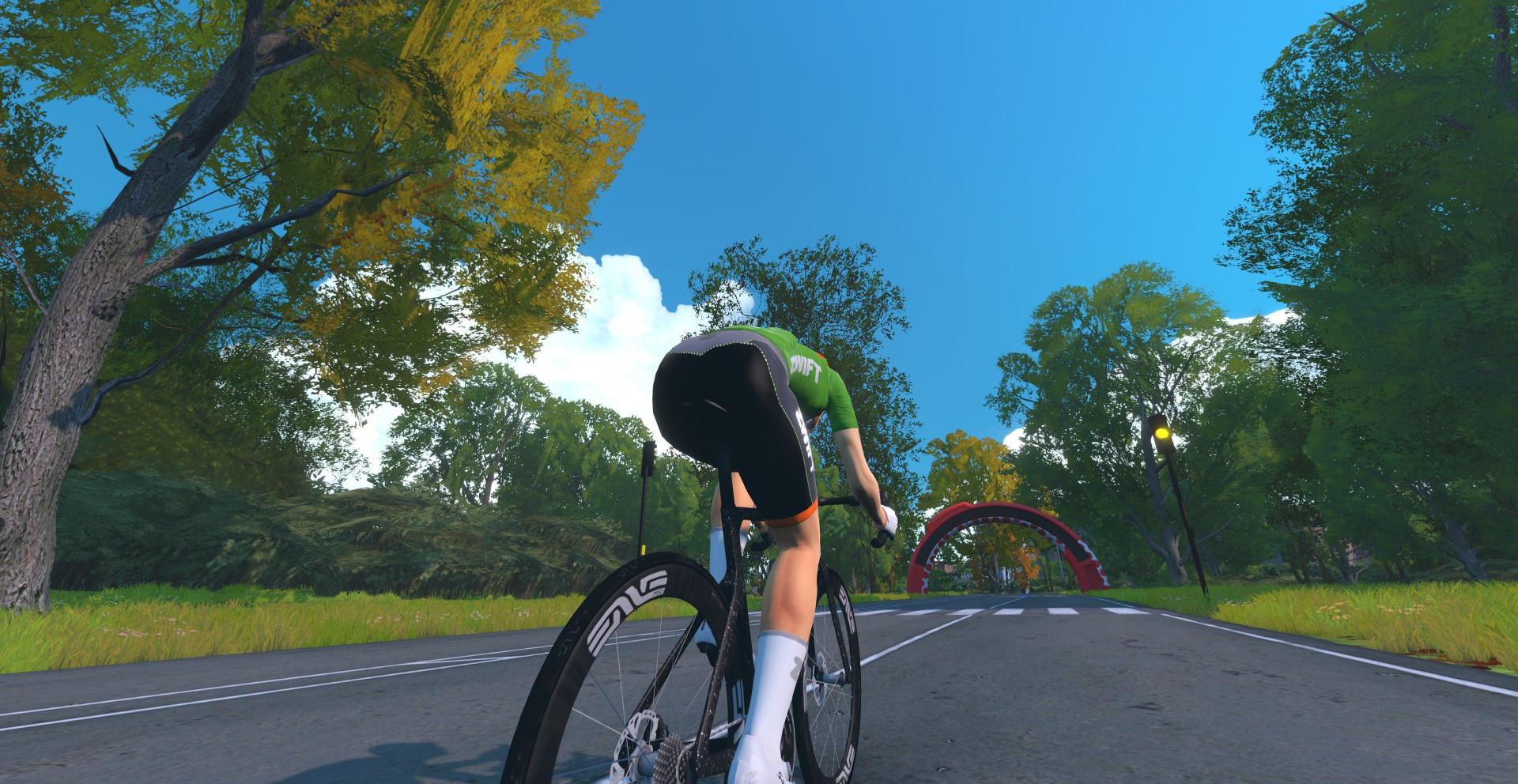
There are lots of nods to real-life Prospect Park layouts and features, too. The Peristyle Sprint is where the original sprint finish of Prospect Park’s IRL bike races was located. You’ll see lots of people chasing their dogs in the northwest portion, because dogs can be walked off-leash before 7am IRL. And you’ll pass Prospect Park Lake and the ballfields, whose real versions I saw when riding through the park with Jon Mayfield a few weeks ago.
Detailed List of New Routes
Here’s a complete list of the new routes Zwift released today, including short descriptions from me:
- Avon Flyer (5.1km, 30m)*: named for Greg Avon, level 100 Zwifter and Prospect Park race organizer, this simple loop takes in the southern half of Prospect Park.
- Double Parked (42.2km, 330m): begin with an almost complete lap of Prospect Park, then head all the way up to do a lap of Central Park before coming back down to finish that Prospect Park lap.
- Double Span Spin (12.6km, 120m): a CCW circuit of the Manhattan and Brooklyn Bridges.
- Fuhgeddaboudit (79km, 838m): the new longest route in NYC, this doozy covers all the roads on the map, including some in both directions!
- Green to Screen (28.4km, 207m): perhaps the best route for seeing most of NYC’s new roads within an hourlong ride, as it covers nearly every bit of new tarmac from Times Square south.
- Issendorf Express (7.3km, 53m): named for Charlie Issendorf (NYC racer, Prospect Park race organizer, and former head of events at Zwift), this route is a figure 8 of Prospect Park and Center Drive.
- Prospect Park Loop (5.5km, 37m)*: a good place to chase the orange jersey, this is a simple CCW loop of the Prospect Park circuit.
- Spinfinity (19.3km, 155m): start and finish in Times Square, with a jaunt down to ride across the two bridges.
- Spinfinity Ultra (35km, 291m): almost like two laps of Spinfinity, except you cross the bridges in a different direction on the second lap.
- Stay Puft Pursuit (31.2km, 416m): starting in Times Square and traveling south to turn around at the bridges, this is the only route in the expansion that takes on the NY KOM in Central Park, both ways.
- The Double Borough (17.9km, 147m): starts in Central Park and travels directly south, turning around by way of the Manhattan Bridge after crossing the Brooklyn Bridge.
- The Greenway (36.8km, 292m): ride the northern half of Prospect Park, then up to the two bridges. Then do it again, hitting the bridges in the other direction this time.
- Toefield Tornado (10.3km, 53m)*: named for legendary Prospect Park race organizer Al Toefield, this route matches Issendorf Express, apart from three cheeky loops of Grand Army Plaza thrown in near the end.
- Watts the Limit (31km, 219m): an out-and-back course that begins in Central Park and travels south to loop around Grand Army Plaza and return by the same roads.
* While all 12 routes listed have achievement badges and accompanying bonus XP for riders, only those marked with * have an achievement badge for runners.
How To Experience the New Routes Today
Want to ride the NY expansion today? While New York isn’t featured in the guest map rotation until November 5, getting on the new tarmac is sort of like navigating Manhattan traffic: it’s not too difficult, if you know what you’re doing!
Group Rides and Races
The first events held on these new routes today will be Zwift Unlocked stage 4, which features The Greenway as its long ride, Spinfinity as the short ride and race, and Prospect Park Loop as the run.
But Zwift tells me that, starting today, Club events and Meetups can be scheduled on any of the routes listed above. So you’ll start seeing events popping up on the expansion roads this week, including Zwift Insider’s 100km Pizza Burner and Tiny Races!
Free Rides and Workouts
If you’re looking to ride the new routes as a free ride or on-demand workout, that’s easy as well. Oddly enough (and this is one of those “if you know what you’re doing” Zwifty things), both activities work the same way, since New York isn’t on the guest map schedule until next month.
To free ride/run one of the new routes, or cover it in a workout, select your workout, then select your desired New York route from the pop-up menu.
If you’re only looking to free ride the route, once your avatar arrives in New York, you can tab through all the workout intervals to quickly skip through the workout and revert to free ride mode. I call it the “fake workout” hack (see three other ways to ride any Zwift route at any time).

Upcoming Routes Releases
Zwift says, “Over the coming months, an additional five routes will be unlocked, allowing Zwifters to explore more.” I don’t have any further details on these new routes at this time.
I’ll wrap up with a gallery of images Zwift sent over, since these are the only shots available that show multiple riders, giving us a better feel for what things will look like when it all goes live:
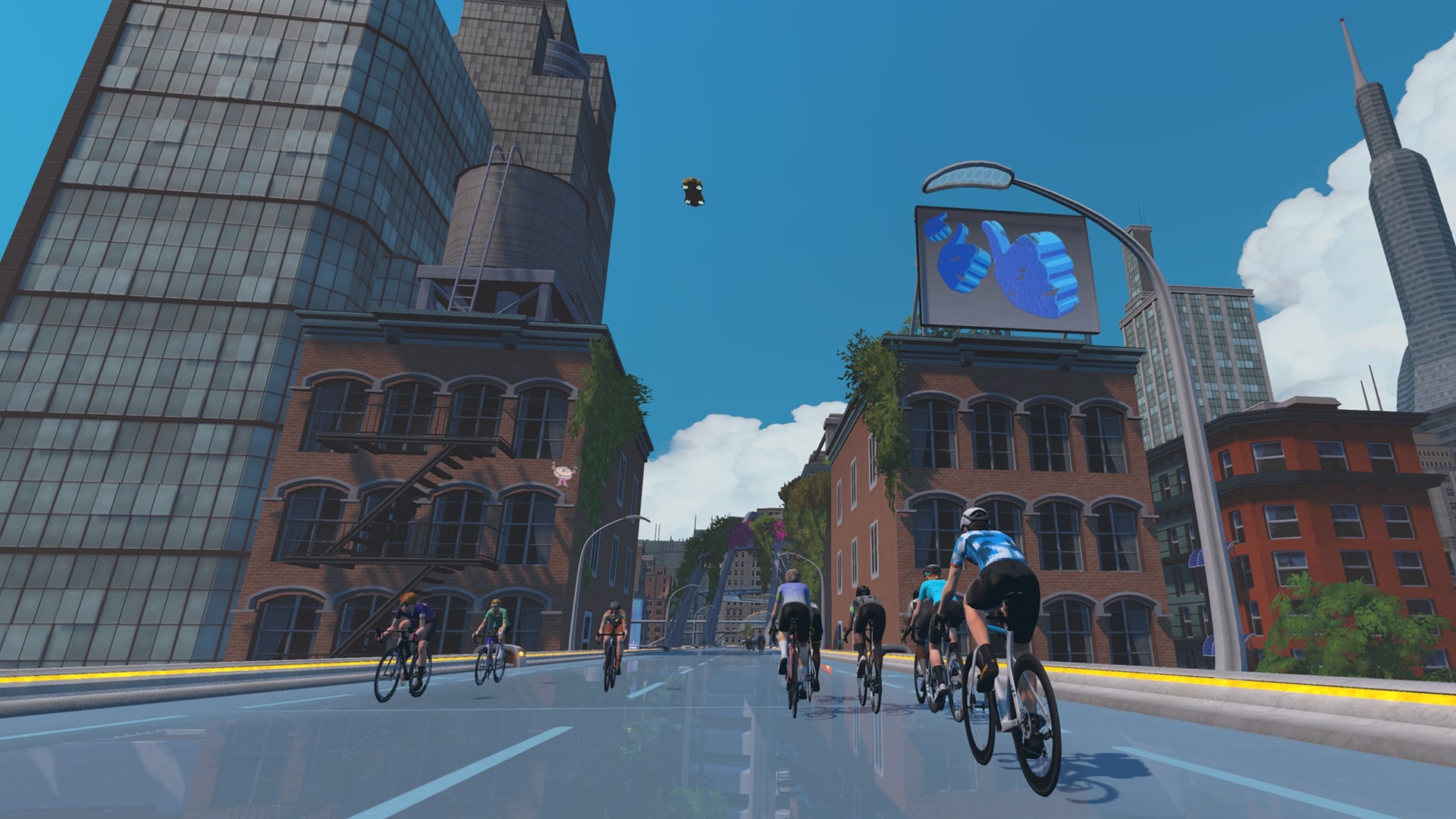


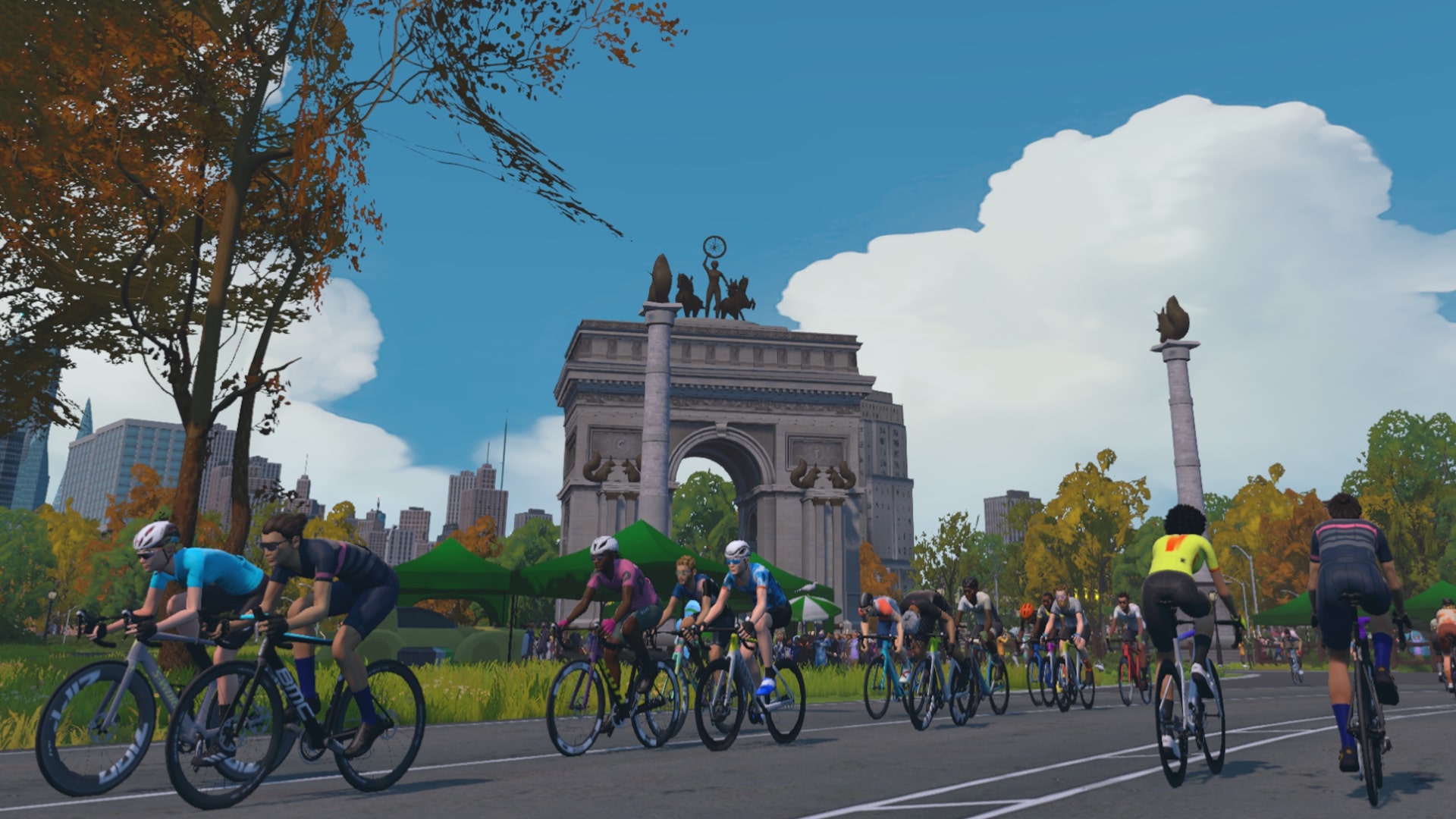

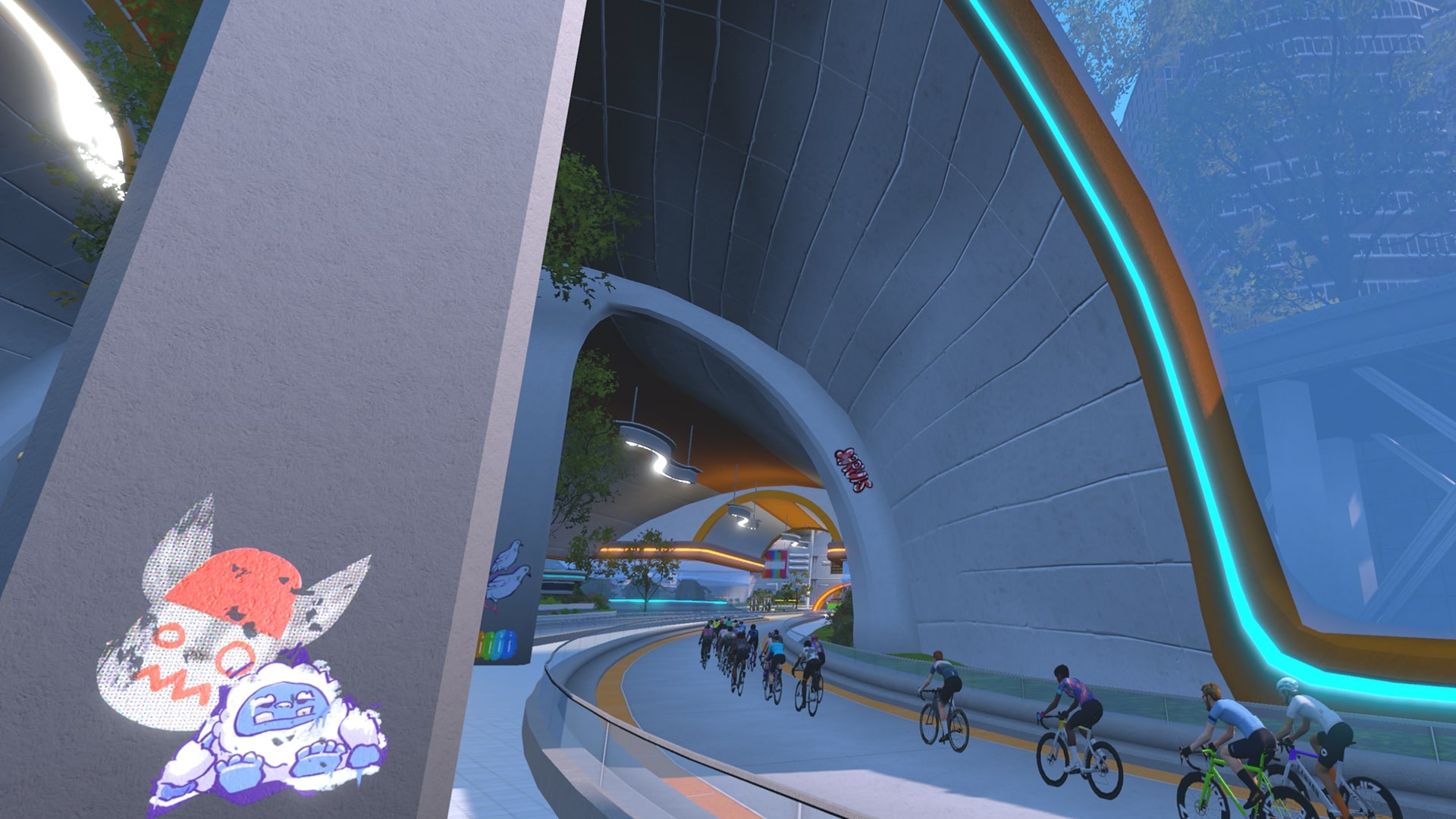

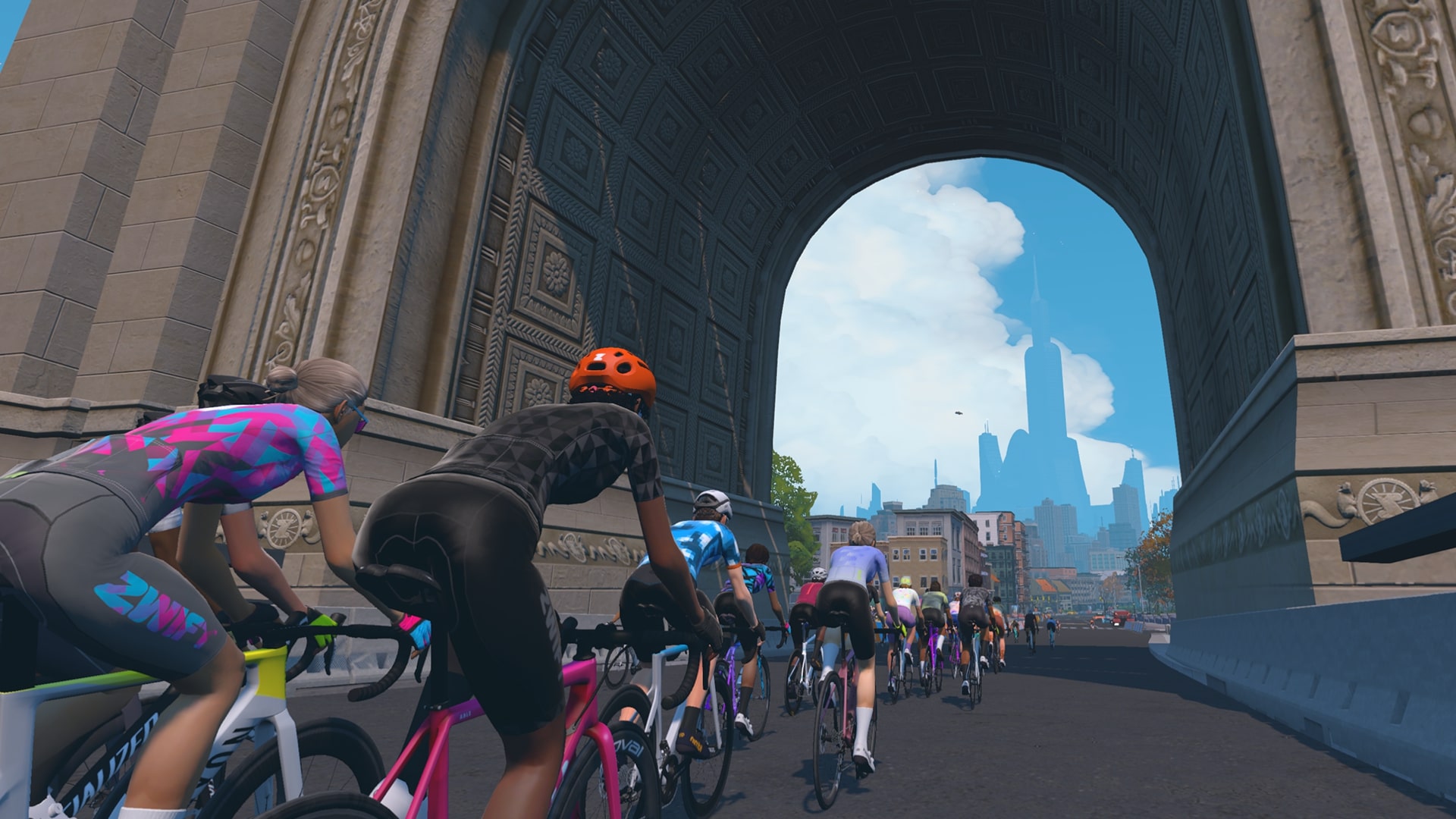
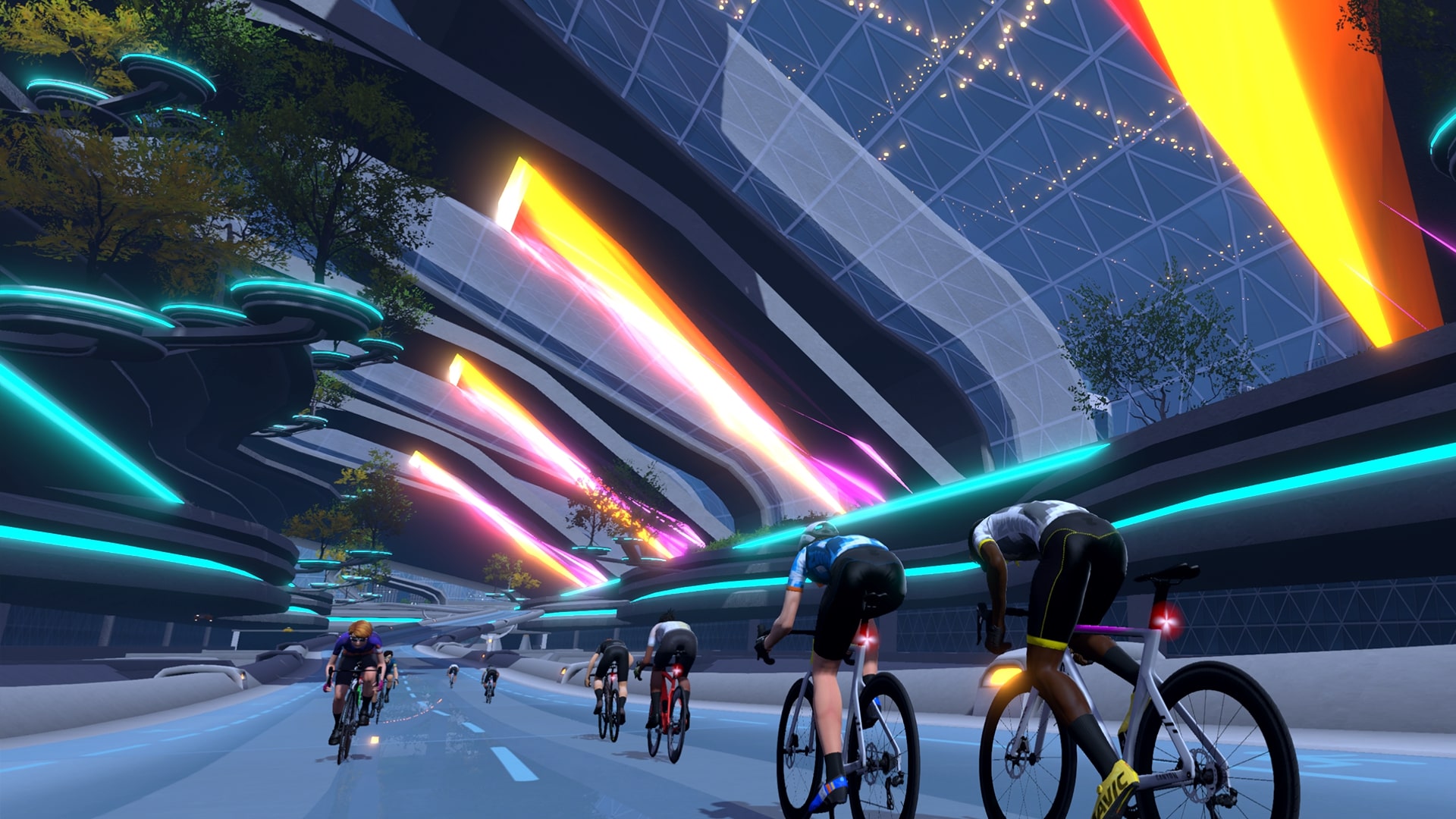
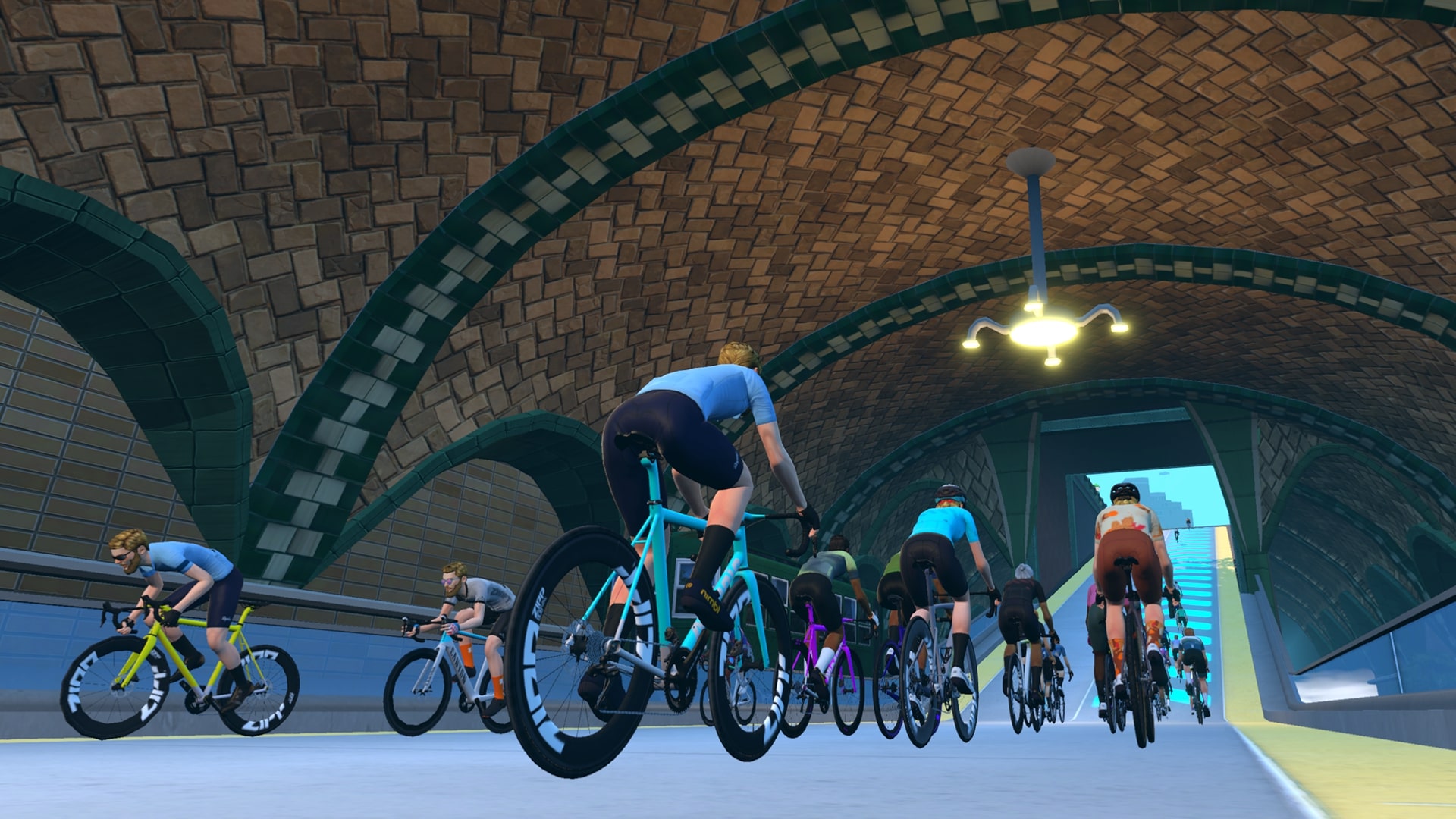

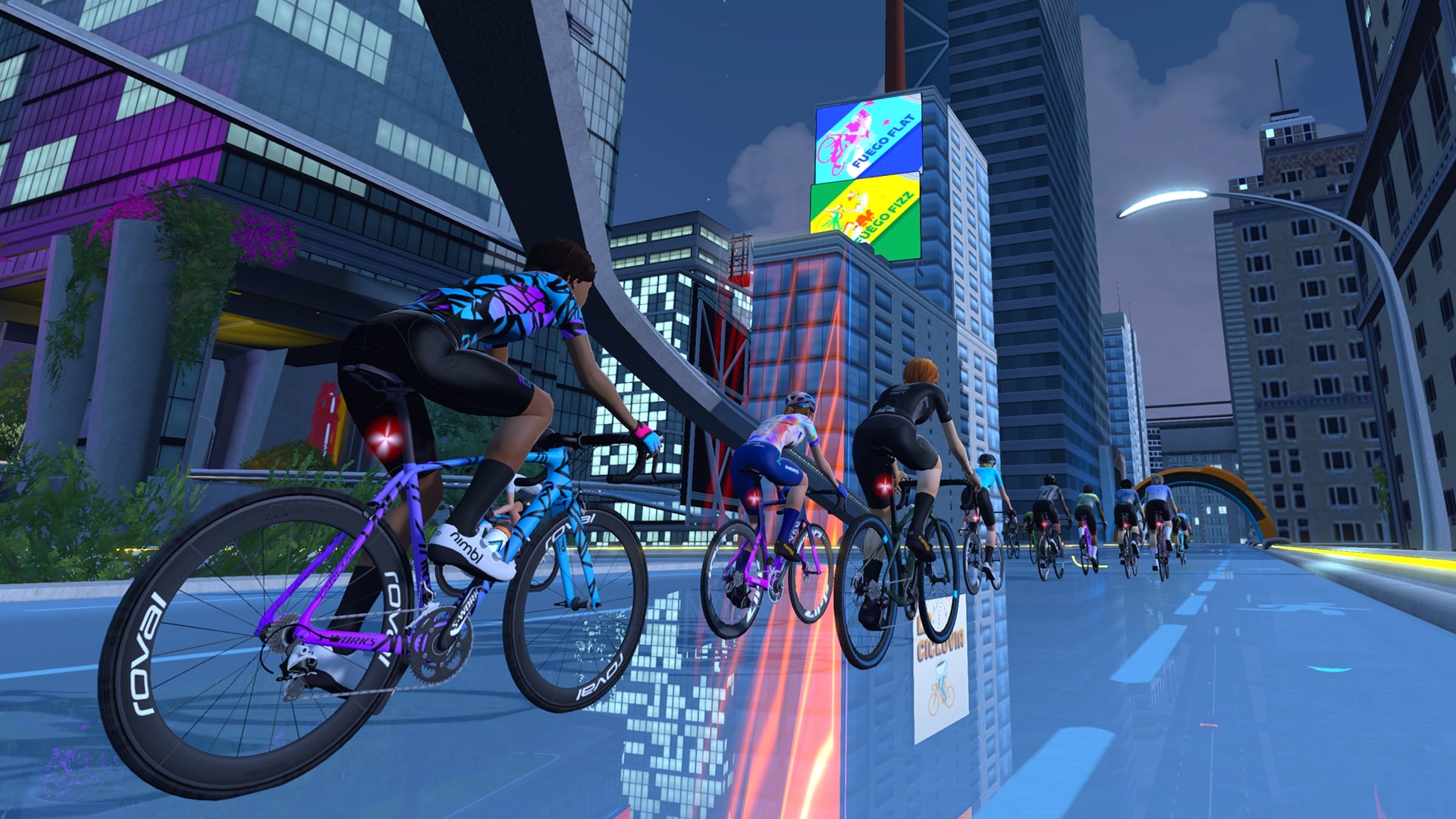
The one image still missing? The Statue of Liberty. Or should I say… the Scottie of Liberty. Yup. They did it!
Questions or Comments?
Share below!
Zwift heads out of Manhattan and into the future with ‘biggest map expansion in five years’
Zwift has released its “biggest map expansion in five years” today, with 31km of new virtual roads added to its new New York map.
The New York map is set 100 years into the future with a “futuristic” network of glass sky roads around Central Park. But the expansion also heads out of Manhattan across the Brooklyn Bridge and into Prospect Park.
Zwift says that “in contrast to the challenging climbs of around Central Park, this expansion brings new faster, rolling roads.”

Alongside the expanded map, Zwift has also revealed a new take on its Timed Sprint Segments.
When riding in Zwift’s New York subway, you’ll find Power Segments on the map with a glowing start arch and timer displayed. Once you ride through the arch, the aim is to hold maximum power for the specified duration.
An average wattage display alongside graphics showing your 90-day and one-year power bests will be shown on screen.
There will be six Power Segments to tackle, helping you work on your 5-, 10- and 20-second peak power, according to Zwift.
“Jerseys are on offer for those with the biggest watts but personal improvement is the main aim here, so personal results will take priority when crossing the finish arch,” Zwift says.

The expansion is stage 4 of Zwift Unlocked, a new Zwift Tour that replaces the Tour of Watopia and runs from 6 October to 16 November, and is your first opportunity to ride the expansion.
At launch, Zwift says there will be 12 new rides to explore:
- Watts the Limit: 31km; 219m
- Double Span Spin: 12.6km; 120m
- Prospect Park Loop: 5.5km; 37m
- Green to Screen: 28.4km; 207m
- Double Parked: 42.4km; 330m
- Fuhgeddaboutit: 79km; 838m
- Spinfinity: 19.3km; 155m
- Spinfinity Ultra: 35km; 291m
- The Greenway: 36.8km; 292m
- Toefield Tornado: 10.3km; 53m
- Avon Flyer: 5.1km; 30m
- Issendorf Express: 7.3km; 53m
Zwift says five additional routes will be unlocked in the coming months.
eMTBs are ruining mountain biking, but not in the way you might think
Electric mountain bikes are ruining mountain biking by impacting our personal relationships with effort and reward.
Traditional arguments against eMTBs centre on jeopardising trail and land access rights, abuses of in-built, country-specific speed limits and tearing up the trails with excessive erosion, among plenty of other legitimate concerns.
I agree with those frequently aired arguments – anything that puts our sport, and anyone’s right to go out and make the most of the countryside at risk, isn’t positive.
But I think the real reason eMTBs are ruining mountain biking is a deeply personal one.
It’s a reason any long-standing cyclist – who’s been around way before ebikes zipped up and down our hills and mountains – can surely identify with.
Heck, even those new to our sport can understand and appreciate how there’s no such thing as a free lunch.
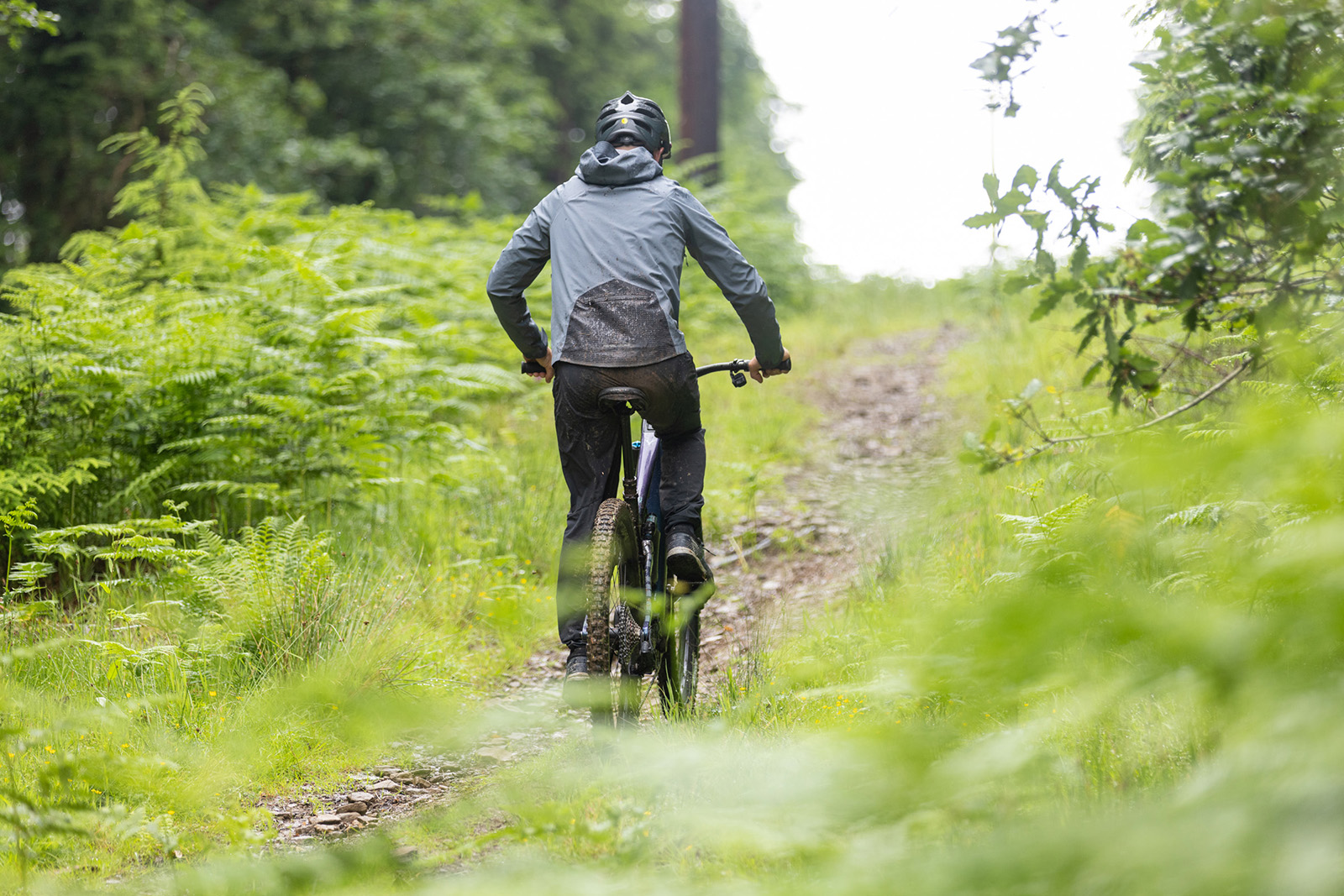
Type one fun – the descents, a jump line, freewheeling to the bottom of the hill – was, in the past, only made possible by copious amounts of type two fun.
The long, slow, grinding, sweat-inducing winch to the descent’s start makes that very fling with gravity even better, even more fun and rewarding.
But here’s the kicker, that type two fun with its grimace-making effort of burying yourself is, in retrospect, also highly rewarding and enjoyable.
Electric mountain bikes are disrupting our relationships with these two core ingredients of mountain biking like never before, and we’re much worse off for it.
An off-piste acknowledgement

Before I go on, there needs to be an acknowledgement that eMTBs – and what they enable people to do – are excellent.
For people with a disability, people looking to start their fitness journey, people who don’t have much free time to ride, those coming back from an injury, or anyone else for that matter, they’re such a great tool, facilitator and enabler.
Even as an able-bodied, relatively fit guy who tests bikes as a job, I love riding mine, and there are plenty of people like me who love riding theirs.
Whether that’s for a lunchtime blast, an all-day epic or just a regular ride, ebikes are wicked.
I’m not singling anyone out, I’m not judging you for your choices or what you ride, but I still believe my point stands.
Unsatiated

When eating out, or even at home, have you ever finished a dish that’s supposed to be a main meal and thought, ‘that was a nice starter, I wonder what’s for dinner’?
You leave unsatiated, hungry for more, dissatisfied with the quantity – cheated even – regardless of whether the food ticked all your other boxes.
In my eyes, ebiking is cycling’s equivalent of a lacklustre lunch.
More frequently than not, at the end of an eMTB ride, I’ve been left feeling slightly hollow, disappointed and unfulfilled.
Those rides have been long enough, they’ve had enough elevation gain and descent, and were tremendous fun, but the relationship between how much effort I’ve been putting in and the amount of sweet downhill reward isn’t in balance.
That same feeling of mild disappointment you get when you’ve not been given enough food lingers after an eMTB ride.
But it wasn’t while riding ebikes that this occurred to me.
Buzz kill
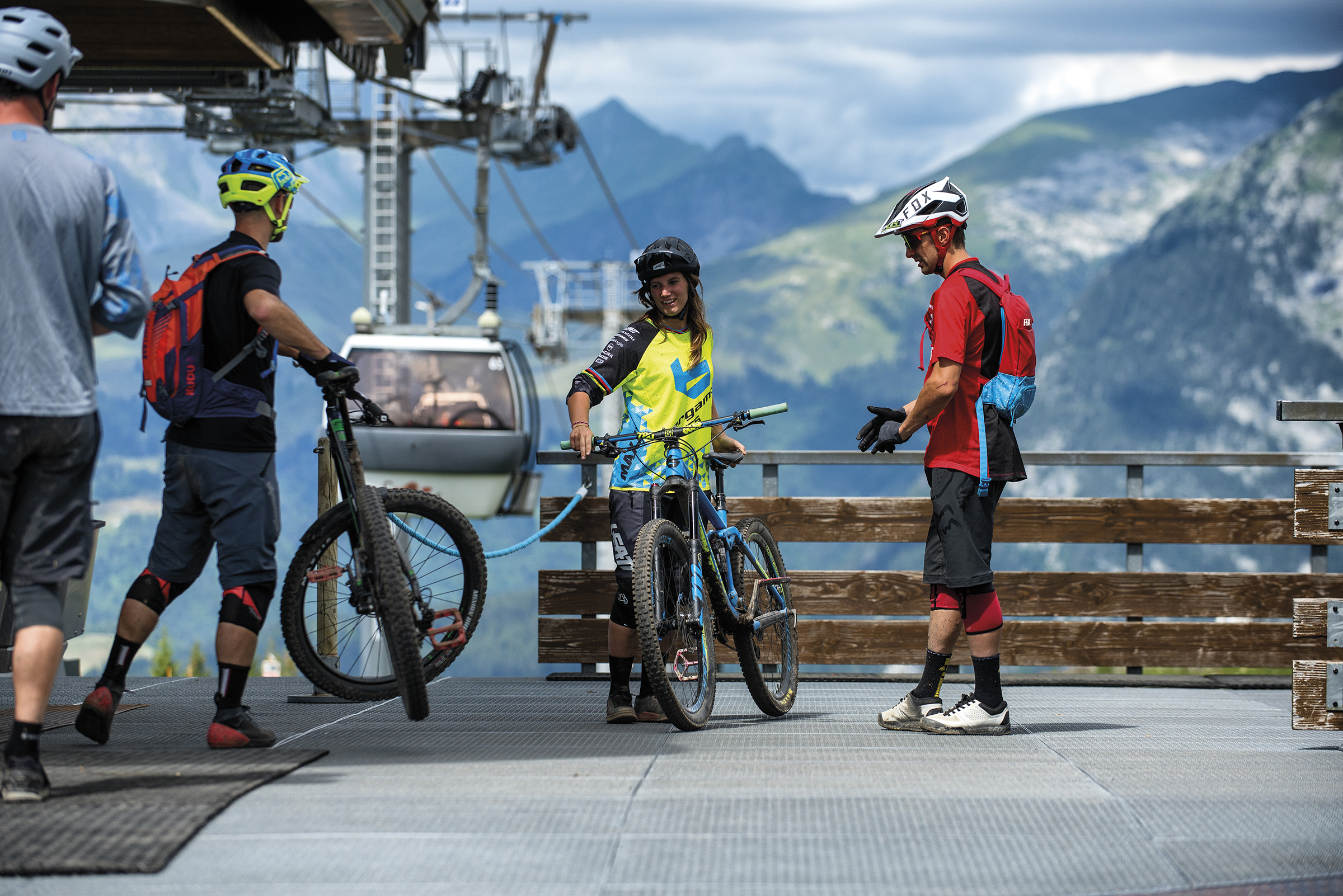
The penny dropped when experiencing the balance of effort versus reward at its most stark while riding chairlifts and bike parks in the Alps earlier this year.
After casually racking up more than 6,000m of ascent and descent in one afternoon riding laps on what can only be described as some of the best trails in the world, I expected to have an afterglow; a buzzing, elated feeling I could relive and ride through the evening’s lull until the next morning’s fix.
But the feeling didn’t come.
I was flat, unfulfilled, my appetite unquenched by the repeated laps.
The next day, rather than buying another lift pass, I decided to pedal to the chairlift’s summit instead of slouching on the soft, padded and comfortable lift.
One lap was only 600 metres of elevation change, and the pedal – while not taking that long – set the tone for the ride.
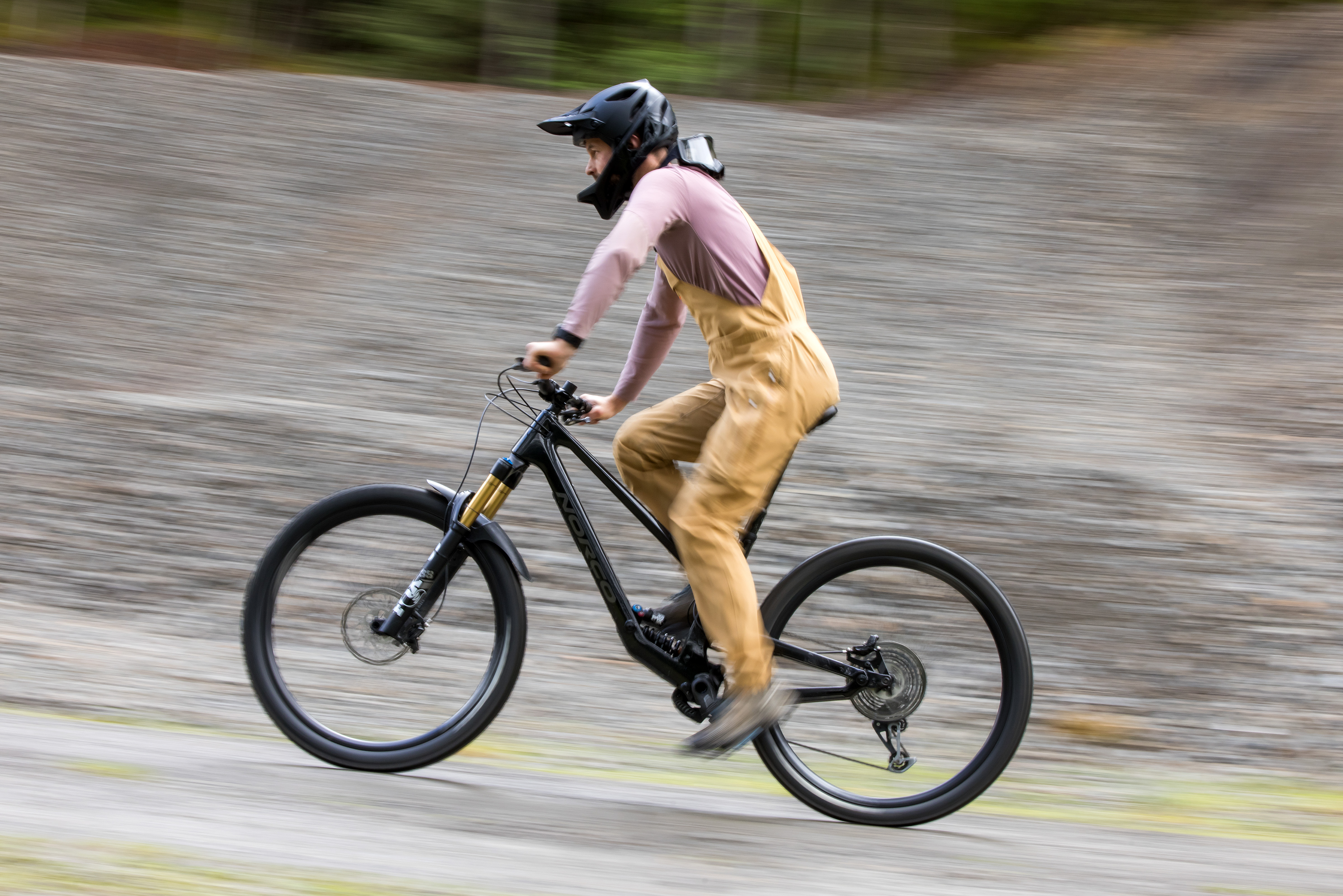
On the way up, I decided to see how long I could hold certain power outputs for, I drifted off and thought about the mountains, I enjoyed the cowbells, I appreciated the morning sun and dew on the grass, and I pondered the lines I was going to take on the descent.
I got to the top of the mountain sweaty, energised and ready to savour every last turn, braking bump, root and rock on my way back down.
Earning something precious – created by the relationship between the climb and descent – added so much value to my lowly, single downhill run.
Pedalling to the top of the track made that run infinitely better than the 10 I did the afternoon before.
Back to ebikes
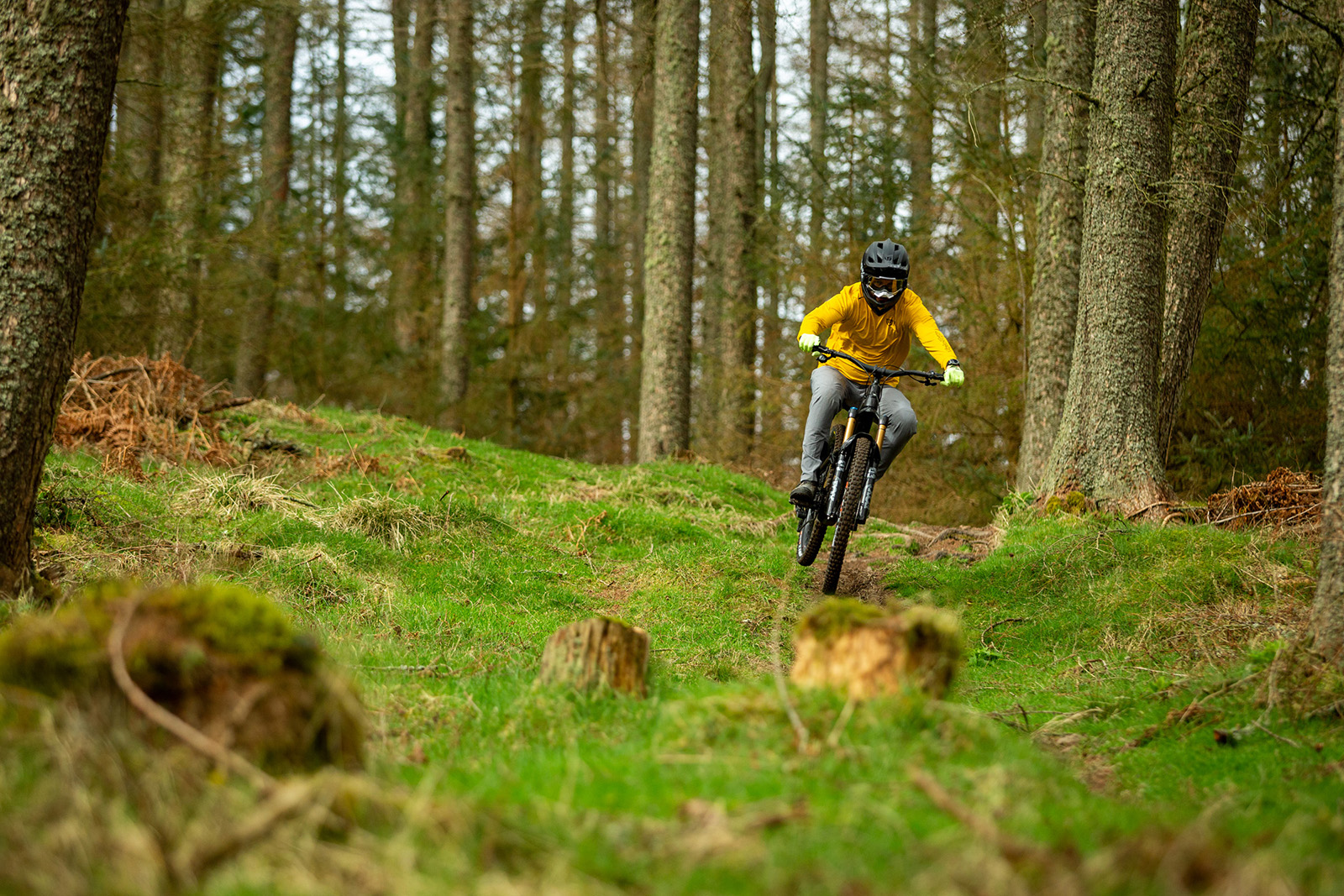
While I’ll admit chairlifts and ebikes don’t have a great deal in common, taking the example of effort versus reward to its extremes helped me grasp what was going on.
On the chairlift, you’re sat fully stationary, free to snack, scroll or do whatever you please, while on the ebike you’ve got to be engaged, pedal, steer, brake and exercise.
But I realised that same hollow feeling I’d been experiencing at the end of ebike rides was the same I got from lapping the chairlift all day.
It was a eureka moment – the disruption between my effort input and my reward output was messing with my head and causing a disconnect.
Electric mountain bikes are preventing me from accessing the pleasure only the purest all-out efforts seem to be able to unlock.
Don’t be angry
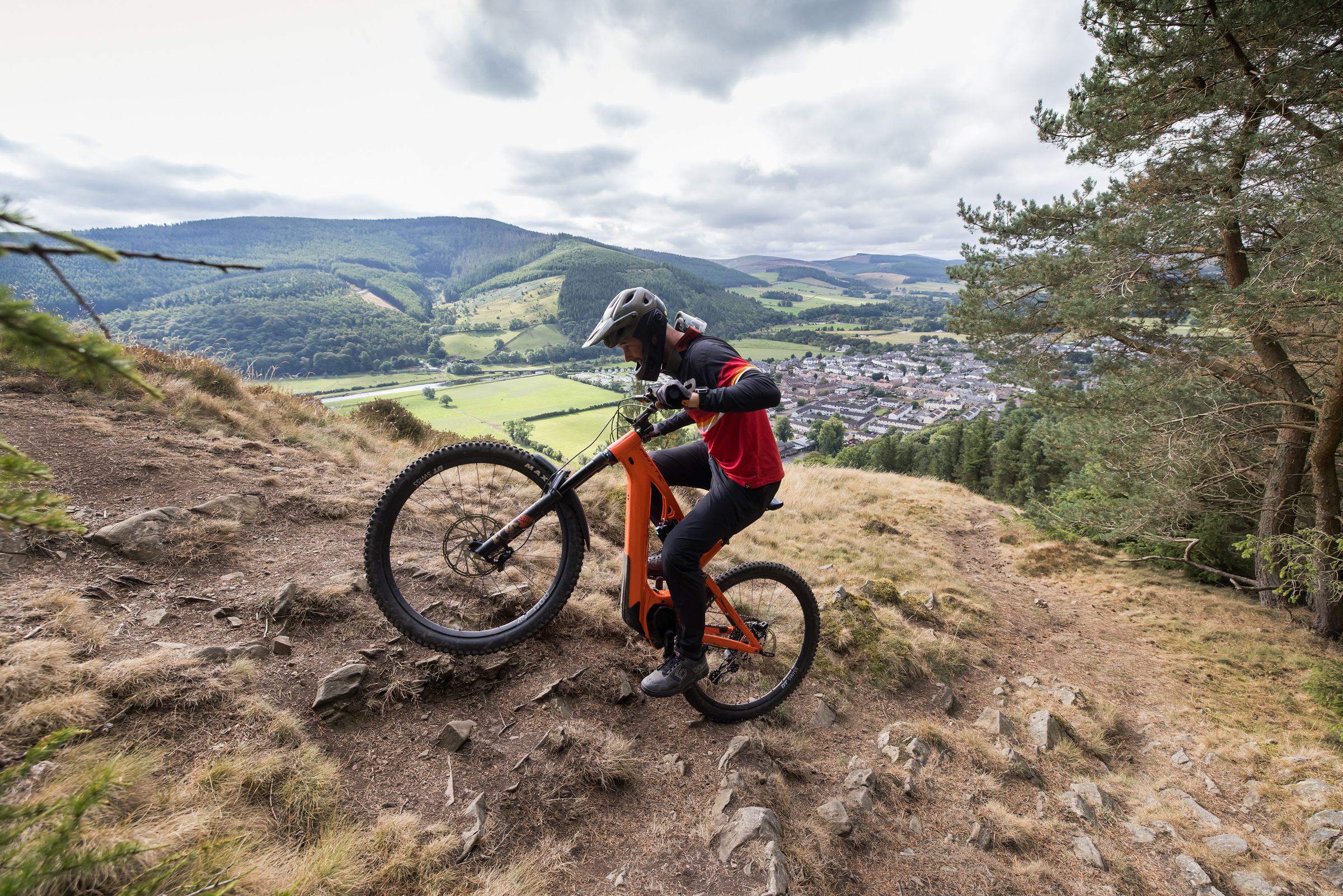
I’ve said it before, but I’ll reiterate it again.
You can still bury yourself on an ebike.
You can max out your heart rate, you can burn as many calories as you want, and you can certainly get stronger, fitter and become a way better rider with one.
You can also put in the same amount of effort as you would on your pedal bike, but go twice as fast or twice as far.
But don’t be angry if I call you out – how many people are using their ebikes like this?
How many of you are going as hard as you can – in the same way you would on your non-assisted bike – on your eMTB?
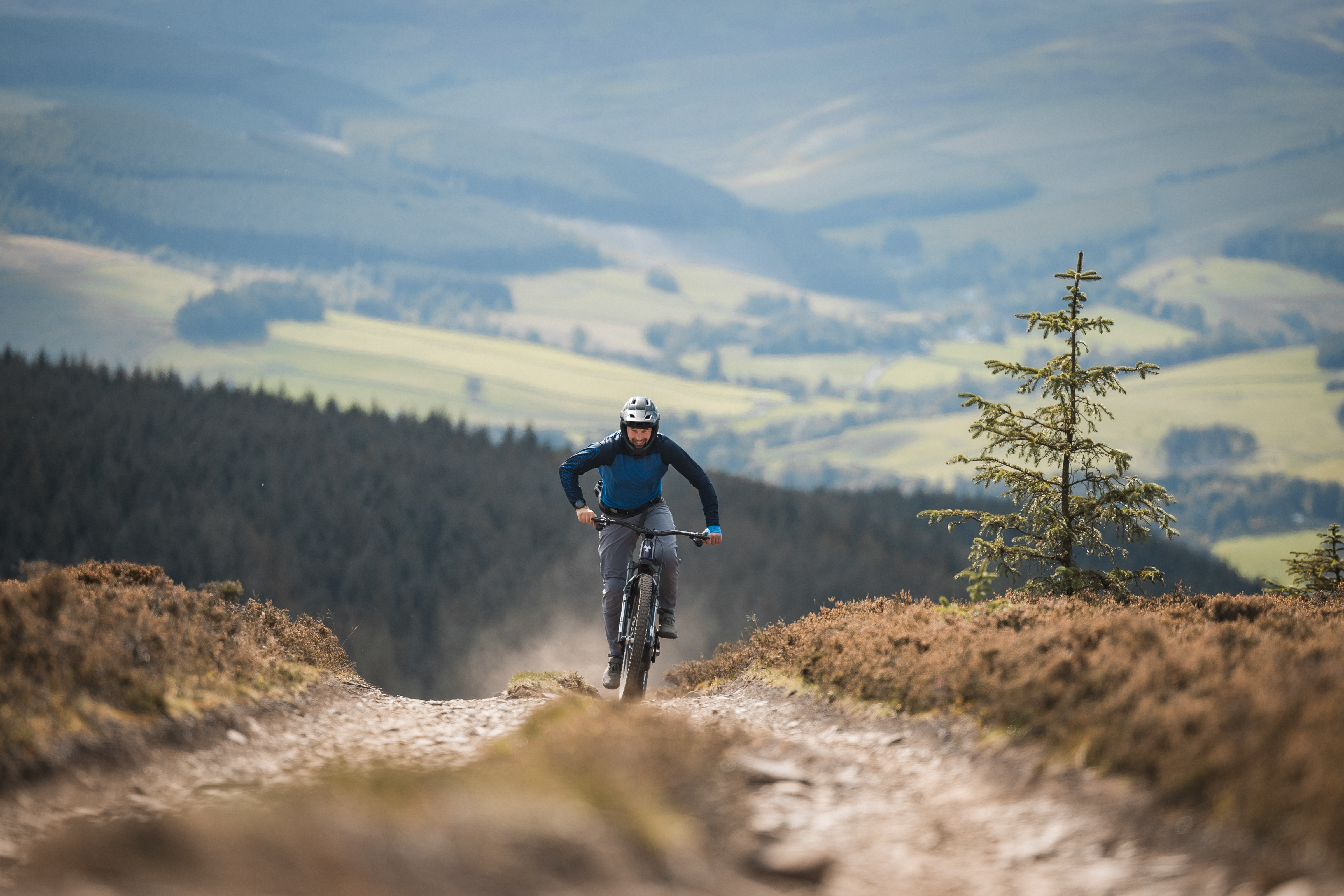
From personal experience, I’m going to bet confidently that very few are, me included.
Hitting the bike’s speed limiter feels like ramming headlong into a brick wall while maxing out the motor’s cadence window, so when support drops off it’s also demoralising.
There’s no incentive to push just that bit extra, to lift yourself truly out of your comfort zone as you would on your regular bike because your ebike doesn’t give you that instant, torquey, powerful dopamine hit when you do.
Recalibration
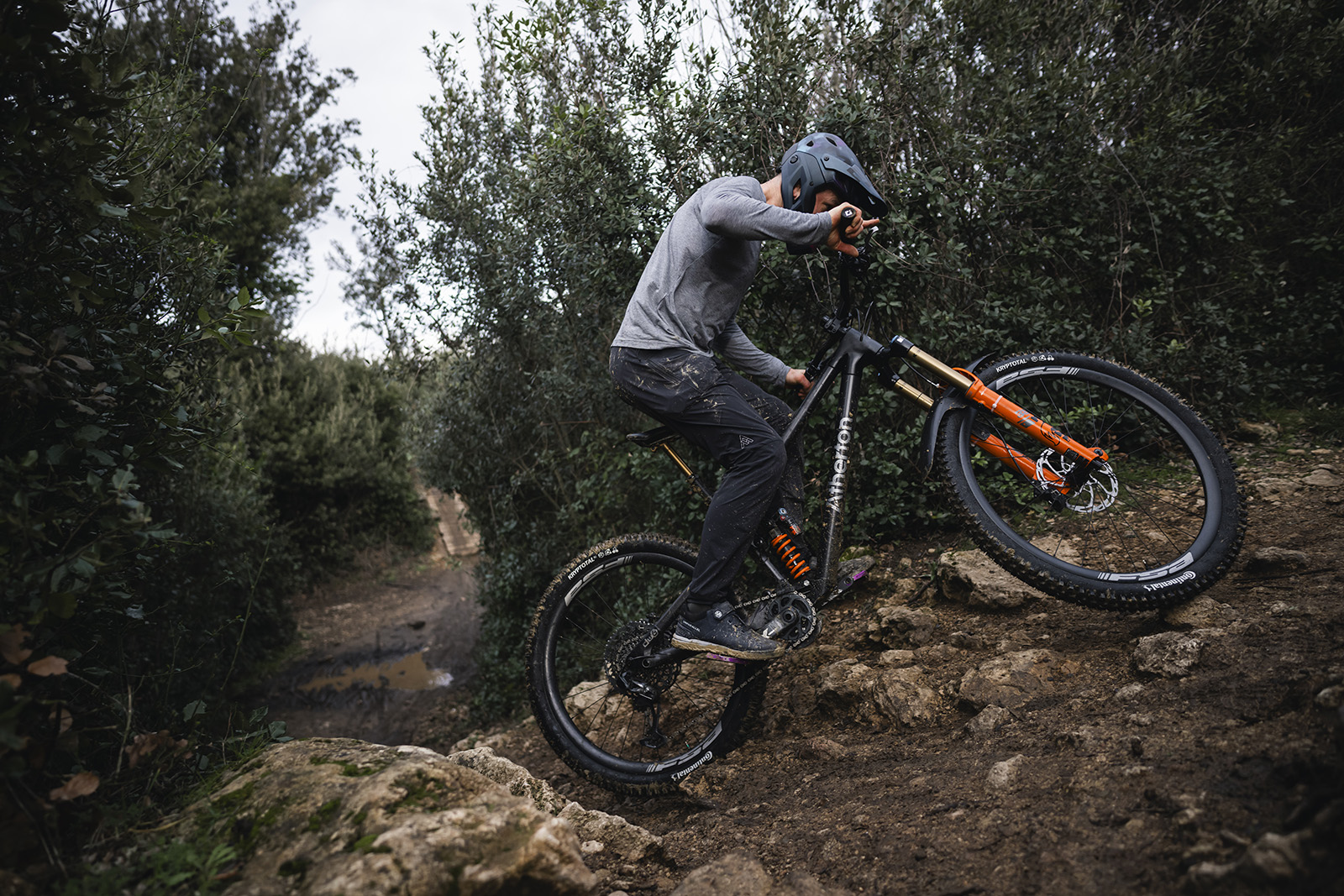
The next time you head out on your regular bike, it takes a while to recalibrate – I frequently asked myself, ‘why isn’t this climb easier, or worse yet, already over?’. That is, until I came to terms with the impending slog.
Our perceptions of the amount of effort needed to get to the top of a favourite trail versus how much effort is required are totally out of whack.
It’s easy to see how people get stuck riding only ebikes.
They begin doubting whether they can make it up the climb on their non-electric bike and they question whether they’d be able to do more than one or two climbs and descents in a day.
Along with the other – very good – reasons for riding only ebikes, people get stuck, hooked on that gentle glide to the trail’s top.
eMTBs are ruining mountain biking
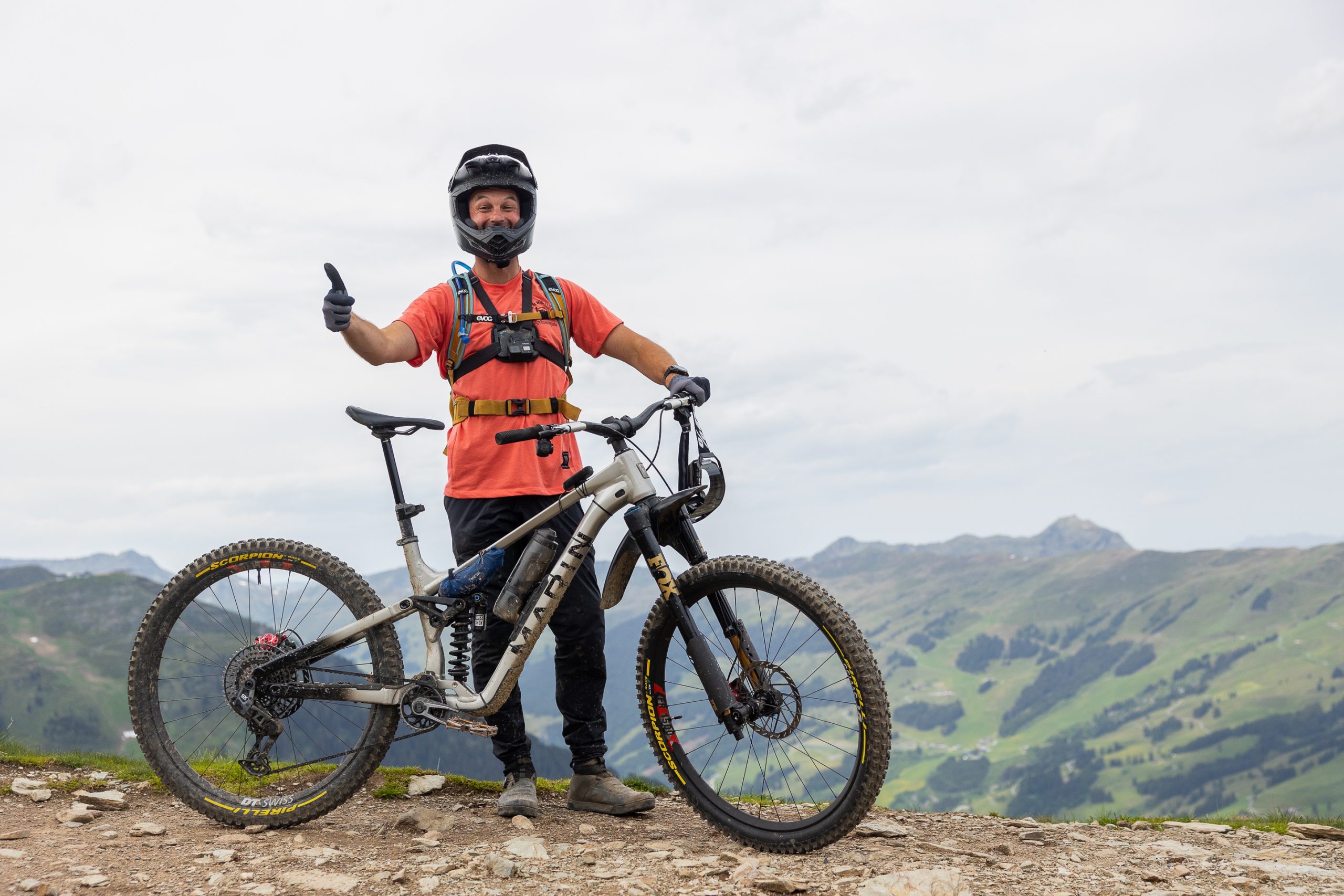
There’s no substitute for your regular bike, for pushing yourself, for going that little bit harder, for longer.
And, most importantly, for earning that sweet reward on the way back down after hours of hard, all-out effort.
The dichotomous relationship between time spent going up and down, and the amount of fun they both bring to the equation isn’t mathematically sound, but it’s the reason I and many others love this sport.
The effort makes the reward – no matter how small – that bit more worth it.
My advice: don’t ruin it by only riding eMTBs.
Zwift Extends Partnership with Tour de France Femmes Through 2029
This week, as the Tour de France Femmes avec Zwift 2026 route was presented, Zwift announced a 3-year extension of their TdFFaZ presenting partnership with Amaury Sport Organisation (A.S.O.). Read yesterday’s press release below…
Zwift, the global online fitness platform for cyclists, is today proud to announce the extension of its sponsorship of Tour de France Femmes avec Zwift, continuing as Presenting Partner until at least 2029. The deal marks a continuation of a long-term partnership with A.S.O. that saw the introduction of the Tour de France Femmes avec Zwift to the UCI calendar in 2022.
“This is much more than a sponsorship for Zwift, it’s a part of our identity, underpinned by our mission to make more people, more active, more often.” Says Eric Min, Zwift CEO and Co-Founder of Zwift. “Growing women’s participation in cycling is a critical mission. We truly believe that to be successful, the Tour de France Femmes avec Zwift is essential. The first four years of this partnership have been incredible. The excitement is tangible and the impact is clear. I can’t wait to see what we can achieve over the next four years and beyond.”

The Tour de France Femmes avec Zwift was born from a shared vision between Zwift and A.S.O. to elevate women’s cycling to the global stage it deserves. The partnership began with the Virtual Tour de France in 2020, launched during the pandemic with equal fields for both men and women, to keep racing alive and connect fans around the world. The success of this event cemented the co-determination to bring back a Tour de France for women. That vision became reality with the launch of the Tour de France Femmes avec Zwift, a milestone moment that continues to inspire, engage, and grow the sport globally.

“The Tour de France has always been the most famous race in cycling and it has been fantastic to have it added to the calendar for the women’s peloton,” says Kasia Niewiadoma-Phinney, CANYON//SRAM zondacrypto rider and 2024 Tour de France Femmes avec Zwift winner. “Winning the iconic yellow jersey has been the highlight of my career and it is so exciting that the Tour de France Femmes avec Zwift will continue to be the biggest race on the calendar and show off the excitement of women’s cycling to people around the world.”
Central to Zwift’s mission to grow women’s cycling is the Watch The Femmes campaign. Over four years, the call to action has evolved into a movement, inviting everyone who supports women’s cycling, from media and industry partners to brands and fans, to unite around a shared goal: growing the sport and ensuring women’s cycling receives the visibility and recognition it needs to continue thriving. The impact of this united effort is clear in the rising visibility and audience engagement around women’s cycling. There is no race on the women’s calendar that has helped bring more attention to the sport. 2025 brought an average audience of 2.7 million viewers per stage, in France alone, with the coverage accounting for a 31.6% audience share. The final stage with Pauline Ferrand-Prevot storming to victory brought a peak audience of 7.7 million. Since the introduction of the Tour de France Femmes avec Zwift in 2022, Zwift has also seen an increase in the number of women joining the platform. Currently, 23% of new subscribers are women – a notable increase since the first edition of the race in 2022, where women accounted for 18% of new subscribers.
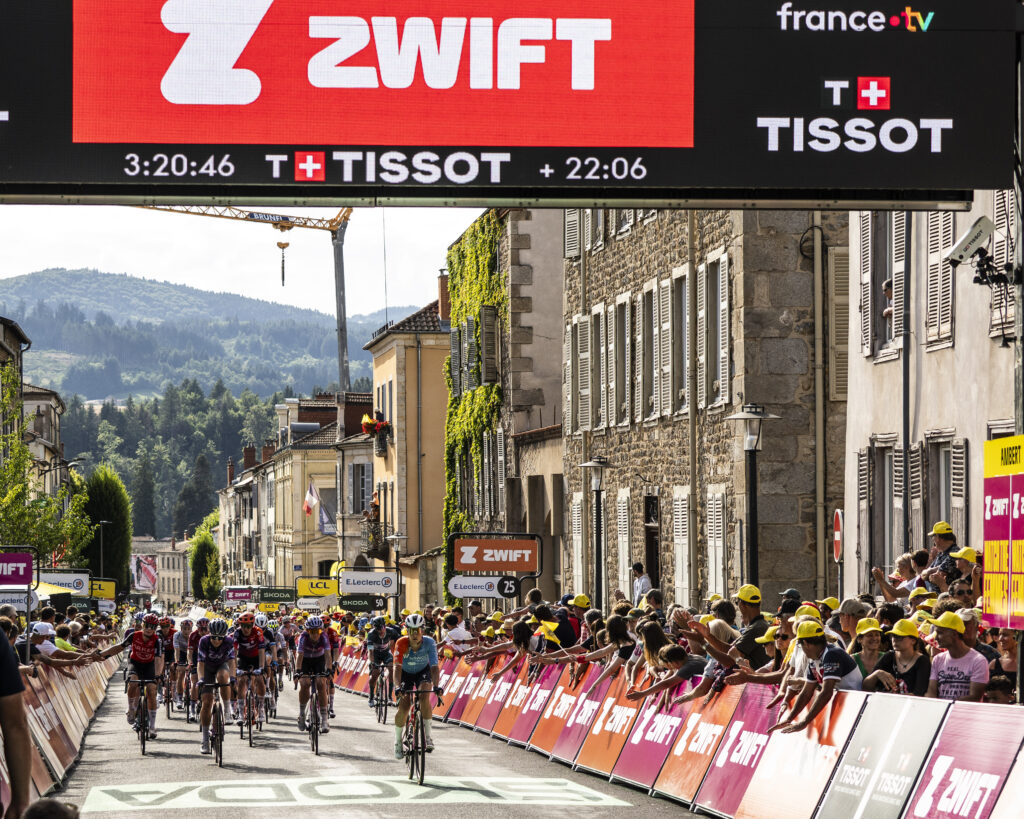
“The Tour de France Femmes avec Zwift continues to break records and exceed even our own expectations,” says Marion Rousse, Director of the Tour de France Femmes avec Zwift. “It’s a pleasure to work alongside a partner that helps amplify the race and women’s professional cycling in the way that Zwift does. We’ve achieved a lot already and I’m excited that we can continue this journey together.”
For more information on the Tour de France Femmes avec Zwift, head to www.letourfemmes.fr/en
More information on Zwift’s Watch The Femmes, head to https://www.zwift.com/watchthefemmes
I want to see your sketchy hacks and ultralight bikes at the UK National Hill Climb Championships
Bank Road in Matlock plays host to the 2025 CTT National Hill Climb Championship this weekend and BikeRadar will be there, hunting down the weirdest, lightest, sketchiest and most wonderful bikes on show.
The Nationals mark the finale of Britain’s short but savage hill climb season, a uniquely British racing niche that sits entirely outside UCI regulation.
This sees riders strip their bikes to the bare minimum in pursuit of speed, racing solo against the clock in a time trial format on climbs lasting anywhere from one to 20 minutes.
From high-end carbon frames with the paint sanded off, to featherweight fixies and DIY creations held together with little more than hope, the National Hill Climb always delivers a brilliant mix of ingenuity and pure suffering.
Always a professional and personal highlight of my year, I’ll be there this year for the whole weekend to document the best bikes on show. If you’re racing and think your setup deserves a moment in the spotlight, send a few photos and a short description of your bike to news@bikeradar.com. If it catches our eye, I’ll be in touch – and you and your bike can enjoy your five minutes of fame.
- More hill climb tech: Weight-saving hacks, sub-6kg disc bikes and raw carbon galore
This year’s course covers 834 metres of Bank Road and Rutland Street, finishing on Wellington Street. It averages a brutal 14 per cent, pitching up to 20 per cent near halfway – short, sharp, and guaranteed to make even the fittest riders see stars.
We’ve been to Bank Road before, and it never fails to deliver. Back in 2016, former BikeRadar staff member Joe Norledge rode the Nationals on a custom 5.1kg Engineered Bikes fixed gear, stripping every gram he could while still keeping it rideable.
- Read more: Can one gear really work for hill climbs?
Inspired by the sound of this gloriously painful event? Come and watch the action unfold on Bank Road, Matlock, from 10:45 on Sunday 24 October.
Van Rysel recalls two RCR Pro road bike models – here’s how to check if you’re affected
Van Rysel has issued a recall of RCR Ultegra Pro and Dura-Ace bikes equipped with Swiss Side Hadron² Classic 500 and Swiss Side Hadron² Ultra 500 wheels.
The recall relates to an earlier stop ride notice and subsequent recall of DT Swiss and Swiss Side carbon wheelsets. DT Swiss manufactures rims for Swiss Side.
The recall, published on the UK Office for Product Safety and Standards site on 15 October, states: “The product presents a serious risk of injuries as the outer carbon layers of the bicycle wheels can delaminate during use. This structural weakening may cause the wheel rim to fail, leading to serious falls and injuries.”
The bikes were sold from 1 August 2024 until 4 August 2025, with the following model codes:
- 8872069, 8872072, 8872071, 8916908, 8901934, 8812536, 8903170, 8826602, 8926606, 8871144, 8894077, 8894076, 8929969, 8929970
Van Rysel says riders can contact Swiss Side directly or visit their nearest Decathlon store. Customers in the UK can also contact Madison Cycles – the UK distributor of DT Swiss products.
Further information is available via the Office for Product Safety Standards and Decathlon.
Liberal Democrats call for ‘bike bait’ plan to catch thieves
A ‘bike bait’ unit should be set up in the National Crime Agency to carry out “bike bait” operations to catch bicycle thieves, the Liberal Democrats have said.
The party has suggested the unit would work with local police forces to carry out targeted operations, planting bicycles fitted with trackers in theft hotspots so officers can catch offenders and uncover criminal networks.
‘Operation Bike Bait’ would also coordinate the collection and sharing of intelligence and best practice across police forces, “helping to build a national picture of bike theft and improve the policing response.”
It has cited Home Office data which shows that across England and Wales, 86 per cent of bike theft cases are unsolved.
Bristol Liberal Democrat councillor Nicholas Coombes said: “Like thousands of other cyclists, I am always worried to leave my bike around the city because of the danger posed by bike thieves. It shouldn’t have to be like this.
“I know local people are furious about the effective decriminalisation of bike theft in our city. Hundreds are denied the justice they deserve after their property is stolen, letting criminals get away scot-free. Our police do fantastic work in our community, but they need support and resource.”
- Read more: Bikes stolen at train stations after being left for more than two hours will not be investigated

The Liberal Democrats proposal is not without precedent. In 2024, ITV News reported that City of London police were able to follow a ‘bait bike’ through London, which led officers to a haul of around £130,000 worth of stolen bicycles.
Duncan Dollimore, head of campaigns at Cycling UK, said: “The idea to target bike theft and the wider criminal networks that treat it like a business is a strong one. With so many stolen bikes being resold through online platforms, we know full well that targeting these groups can significantly reduce theft.
“People rely on their bikes as one of the most affordable ways to get around. It is simply not acceptable that the British Transport Police will not review the evidence of these crimes, when they relate to larger issues around organised crime. It’s time we treat this issue seriously.”
The ‘Operation Bike Bait’ proposal comes as part of the Liberal Democrats renewed calls for the Government to implement “proper community policing”.
It also follows the British Transport Police’s decision not to investigate bike thefts at train stations where the bicycle has been left for more than two hours.
Critics said the measure effectively ‘decriminalises’ bike theft and that it “will hit lowest income groups the hardest”.
The British Transport Police refuted the claim that bicycle thefts have been decriminalised, stating: “Bicycle thefts have not been de-criminalised as some headlines have suggested. When we do not have a clear time or location for the offence, or if there is a lack of CCTV, witnesses or other evidence, it can be very difficult to solve a crime.
“If it is available, we will review around two hours of CCTV footage to try to identify the incident, but it is not proportionate to review longer periods.”
Notable Zwift Events for the Weekend of October 25-26
This weekend’s notable events are headlined by Zwift’s Fondo Series, but we’ve also got a popular community race series kicking off, a unique women’s team chase event, a massive charity ride, and more. See details below!
Note: European clocks change on Sunday, so some of the times for Sunday events below may shift by an hour depending on where you’re located!
 zFondo Series on Medio Fondo
zFondo Series on Medio Fondo

 Bonus XP
Bonus XP  Popular
Popular  Endurance Challenge
Endurance Challenge  Jersey Unlock
Jersey Unlock
This is the second weekend of Zwift’s popular monthly Fondo Series, and we’re already seeing lots of riders signing up for these long “fun races.”
Read all about the Zwift Fondo Series >
We’ll be on the Medio Fondo route (73km, 1005m).
Multiple timeslots this weekend
Sign up at zwift.com/events/tag/zfondos
 BMTR Cares Rides 500 KM – Pedaling for a Purpose!
BMTR Cares Rides 500 KM – Pedaling for a Purpose!
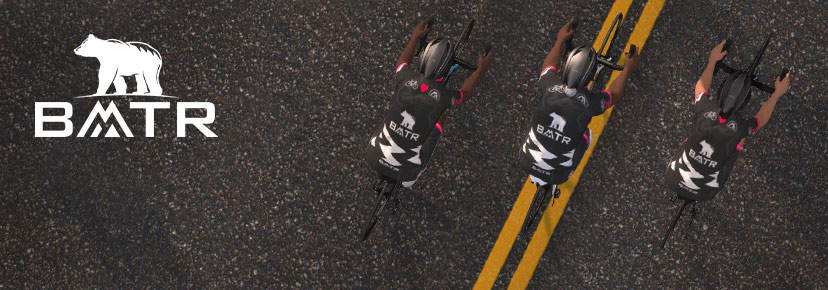
 Good Cause
Good Cause  Endurance Challenge
Endurance Challenge
On the heels of last week‘s 24-hour charity ride, BMTR is holding their annual Breast Cancer Awareness 500km event! There are four events set up which you can choose from if you aren’t able to ride the full 500km, or join all four and stick around afterward to finish the full 500km.
In all four events, the yellow beacon will ride at a C category pace, averaging 2.4-2.8 w/kg. However, BMTR encourages riders to form groups that work for your pace.
This event benefits Metavivor, whose mission to offer hope for those with metastatic breast cancer. Donate here >
First ride is Saturday, October 25 at 6:10am UTC/2:10am ET/Friday 11:10pm PT
Sign up at zwift.com/events/tag/bmtrcares
 LEVEL Racing – Ladies Chase Race – Muckle Yin
LEVEL Racing – Ladies Chase Race – Muckle Yin
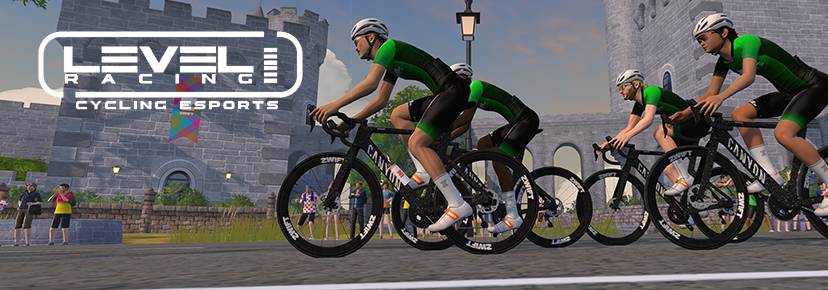
 Ladies Only
Ladies Only  Popular
Popular  Unique Event
Unique Event
This interesting women-only event is a chase race… with a twist! This is truly a team chase race designed to encourage all riders in each category to work together to the end, because the final time for each rider is taken from the 4th rider in your category who crosses the line. (So your solo breakaway off the front isn’t going to help… you’ve got to work together!)
The race is on Scotland’s The Muckle Yin (23.7km, 282m) and groups are based on Zwift Racing Score.
Saturday, October 25 @ 3pm UTC/11am ET/8am PT
Sign up at zwift.com/events/view/5110250
 HERD Winter Racing Series Begins
HERD Winter Racing Series Begins
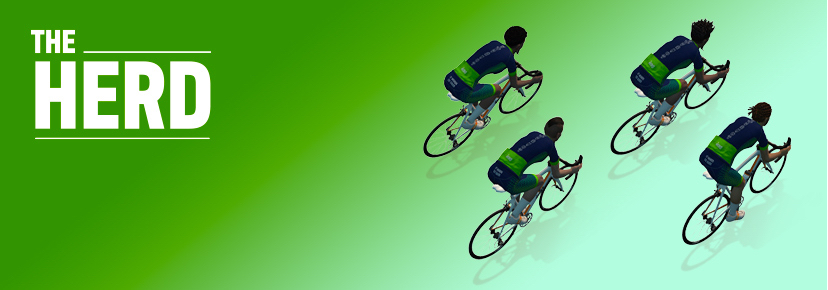
 Popular Series
Popular Series  Mass Start
Mass Start  Long-Running Event
Long-Running Event
The popular HERD Winter Racing Series kicks off this weekend! This is a 20-week series of weekend mass-start races. The series has a mix of flat, rolling, short climb, and even some long climb courses, so there’s something for everyone. It also visits all Zwift worlds.
A GC on ZwiftPower tracks series results, with your best 16 finishes counting (so you can miss a race or four if needed). This week’s race is on France’s Gentil 8 (25.8km, 258m).
7 timeslots each weekend
See upcoming events at zwift.com/events/tag/herdhwr
 MGCC Bagel
MGCC Bagel

 Endurance Challenge
Endurance Challenge
This popular group ride from Morning Glory Cycling Club returns this weekend after a summer break. The club describes this as “not an easy ride, but a friendly don’t get dropped type of ride.” A Discord channel for voice chat is available, which always helps pass the time on longer group rides.
Pacing notes: warm up ~2.0 for 7 minutes. The rest of the ride will be at around 2.3-2.5w/kg, and the hills will be max at 3.2w/kg. There’s also a finishing sprint!
This week’s event is held on Watopia’s Big Foot Hills (69.9km, 714m).
Saturday, October 25 @ 10:50am UTC/6:50am ET/3:50am PT
Sign up at zwift.com/events/view/5156745
How We Make Our Picks
We choose each weekend’s Notable Events based on a variety of factors including:
- Is the event unique/innovative in some way?
- Are celebrities (pro riders, etc) attending/leading?
- Are signup counts already high, meaning the event is extra-popular?
- Does the ride include desirable unlocks or prizes?
- Does the event appeal to ladies on Zwift? (We like to support this under-represented group!)
- Is it for a good cause?
- Is it just plain crazy (extra long races, world record attempts, etc)?
- Is it a long-running, popular weekly event with a dedicated leader who deserves a shout out?
In the end, we want to call attention to events that are extra-special and therefore extra-appealing to Zwifters. If you think your event qualifies, comment below with a link/details and we may just include it in an upcoming post!

